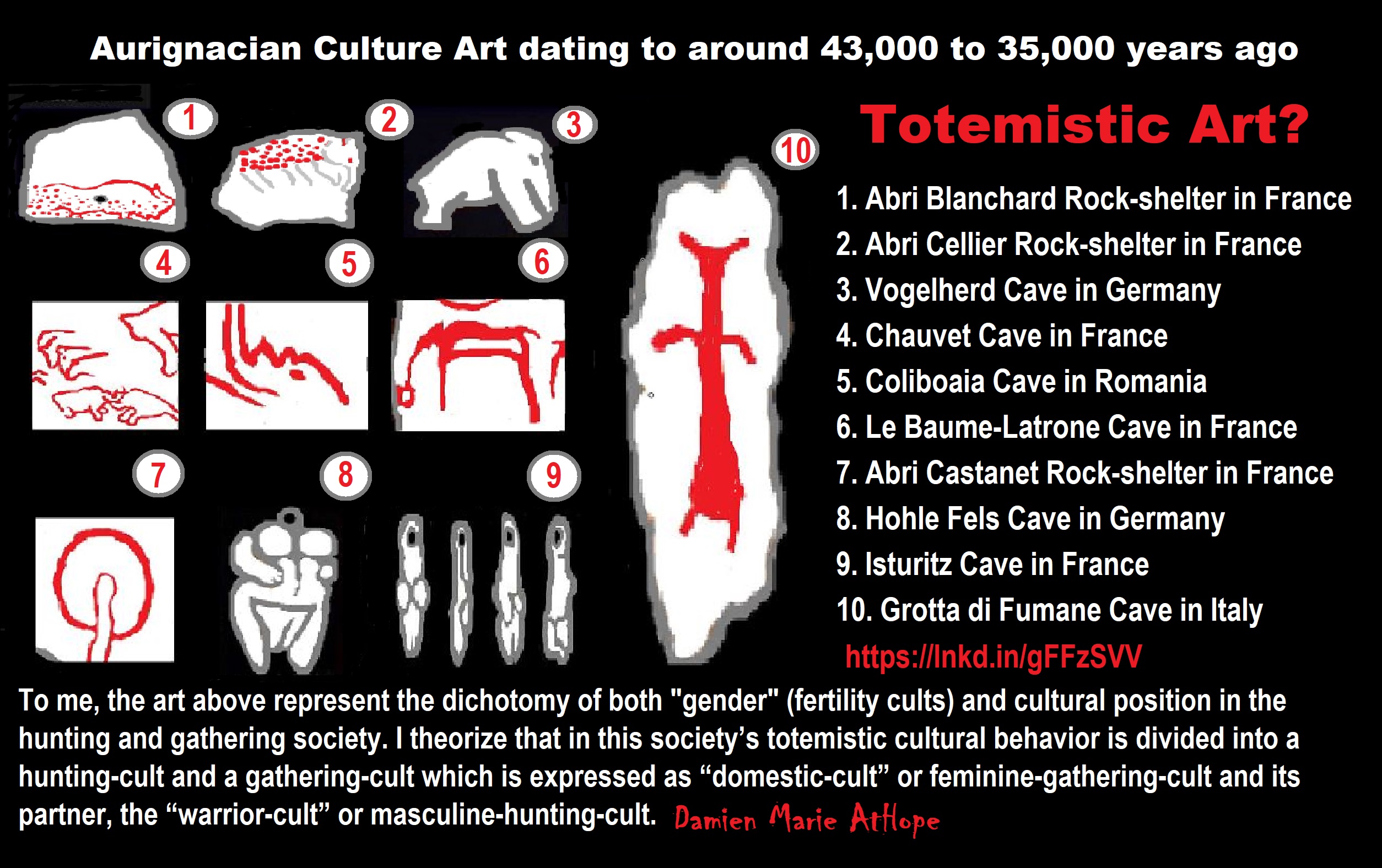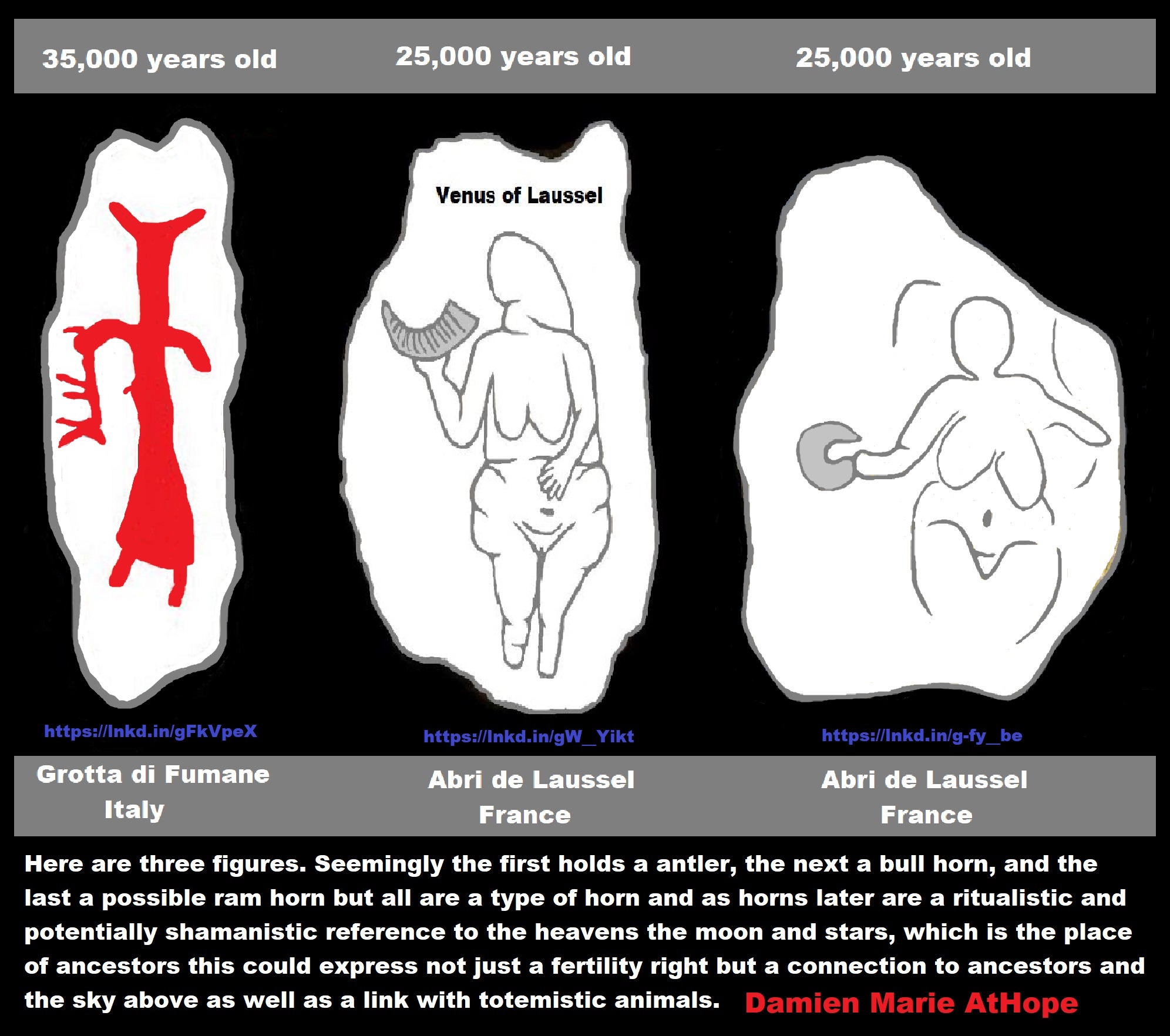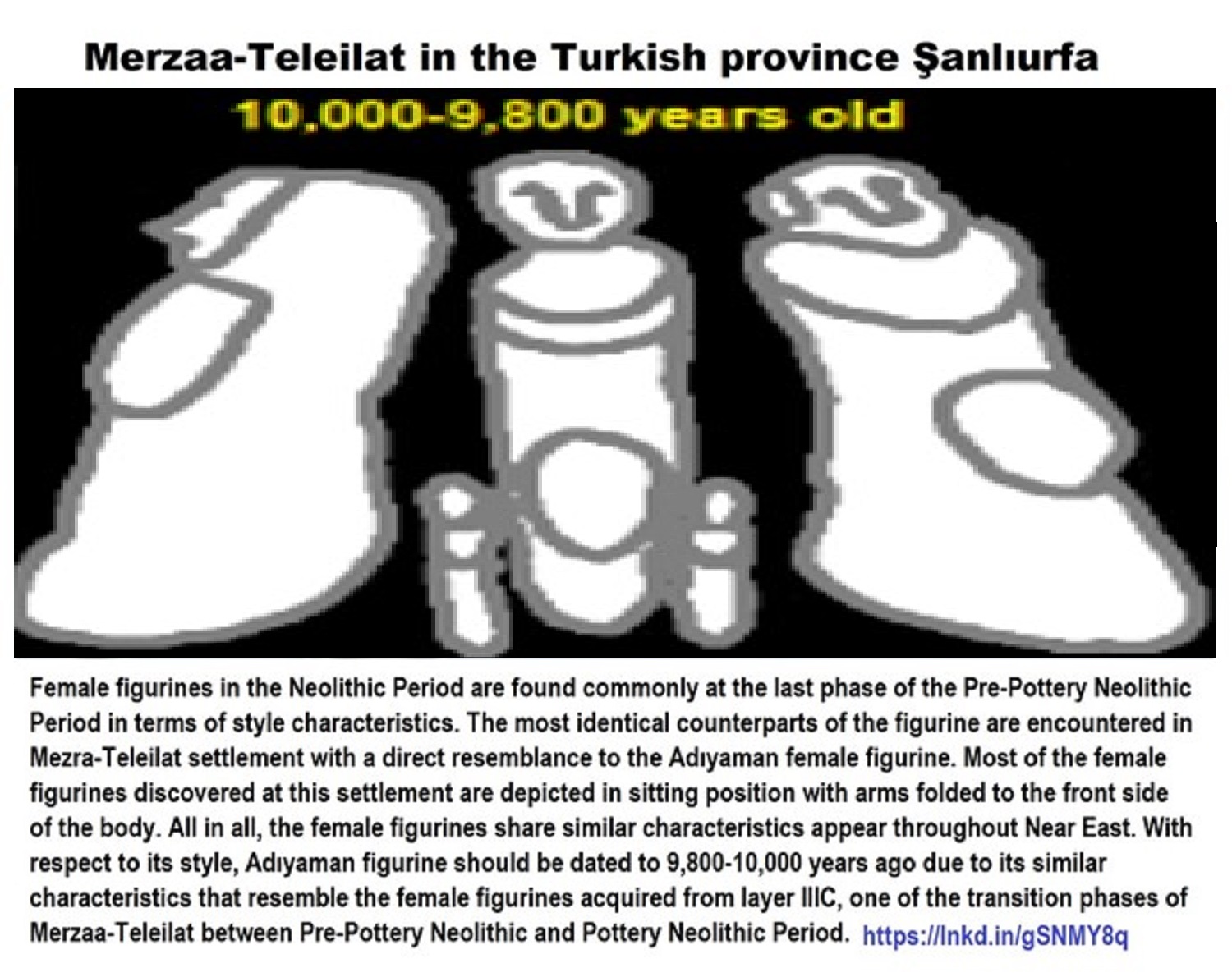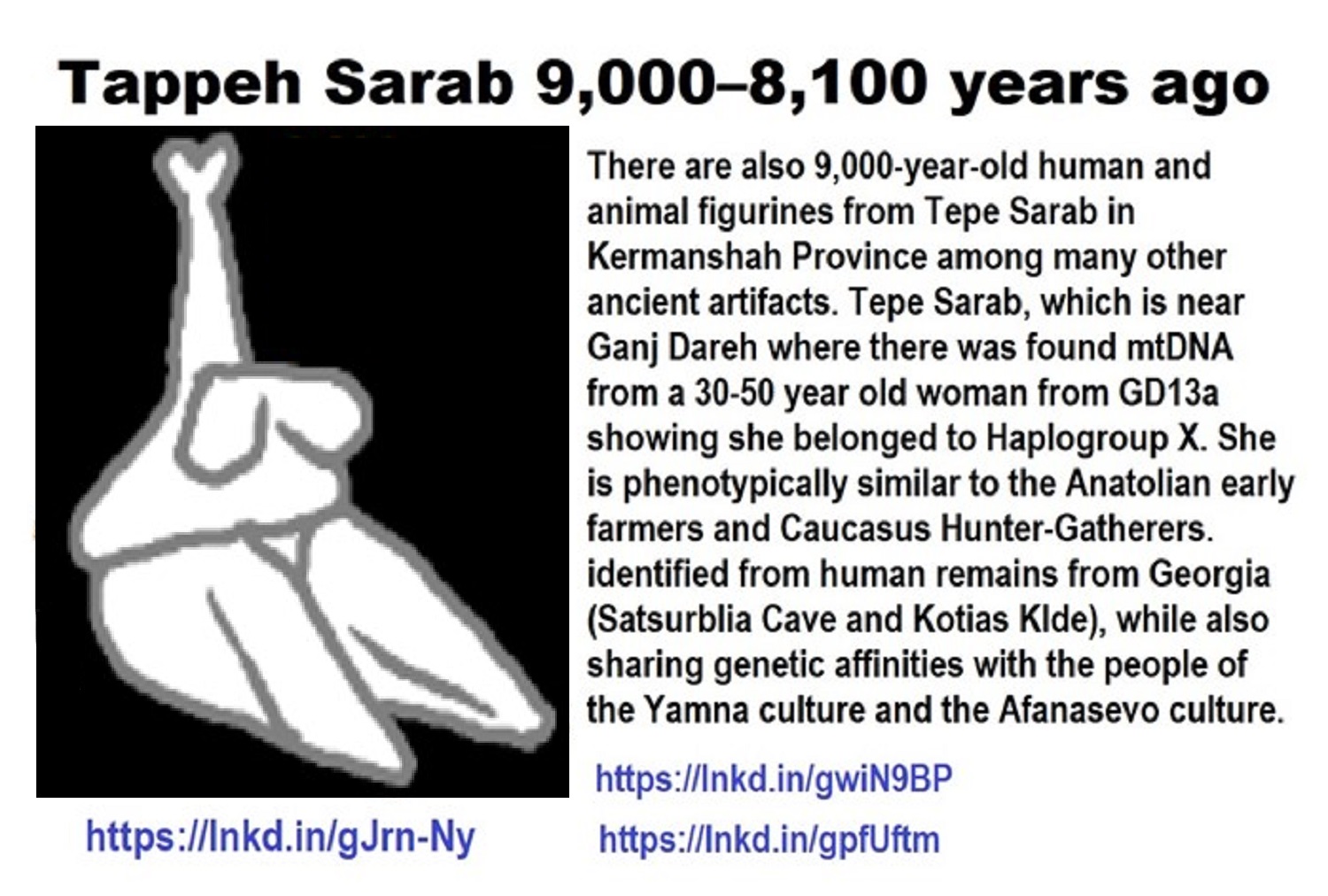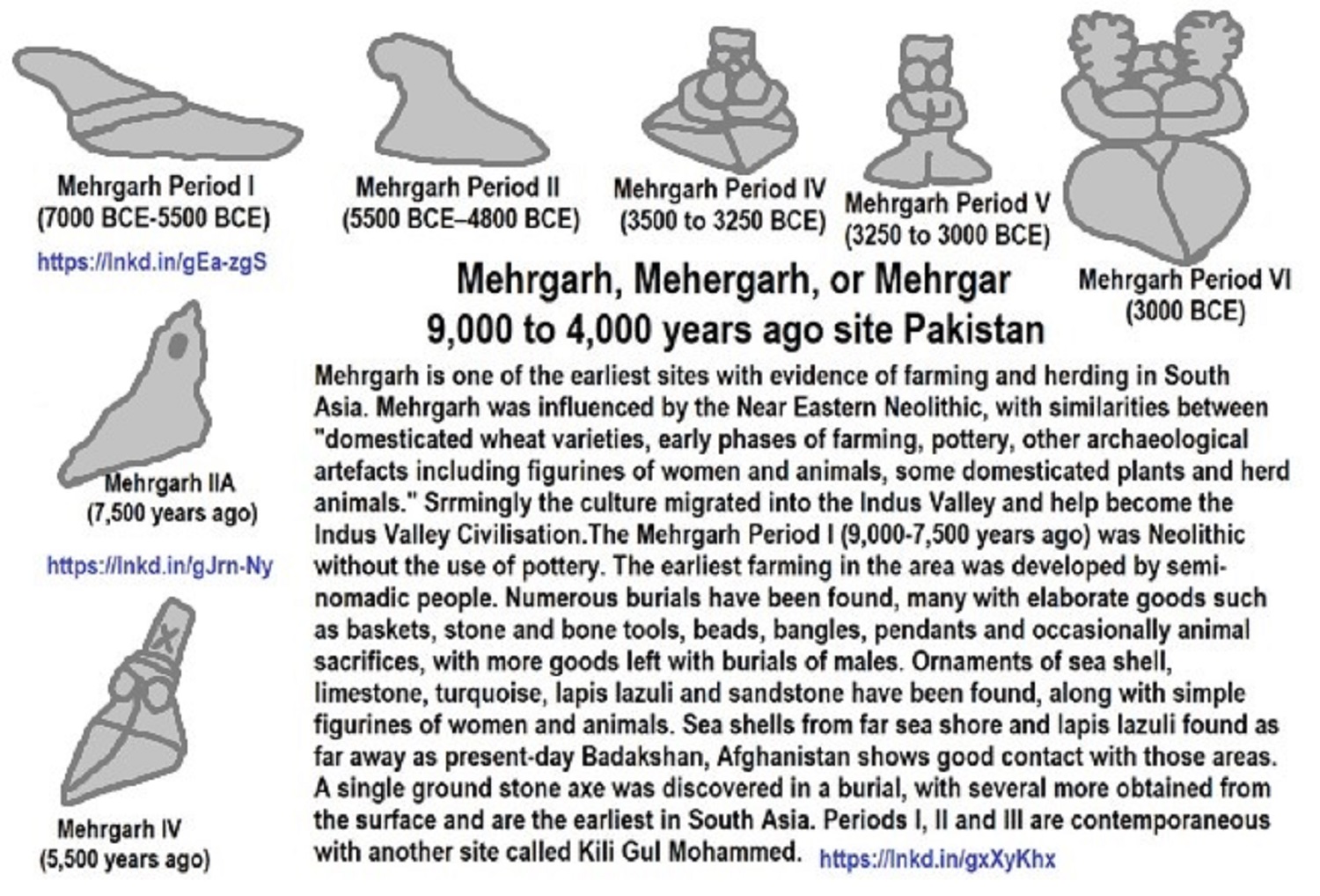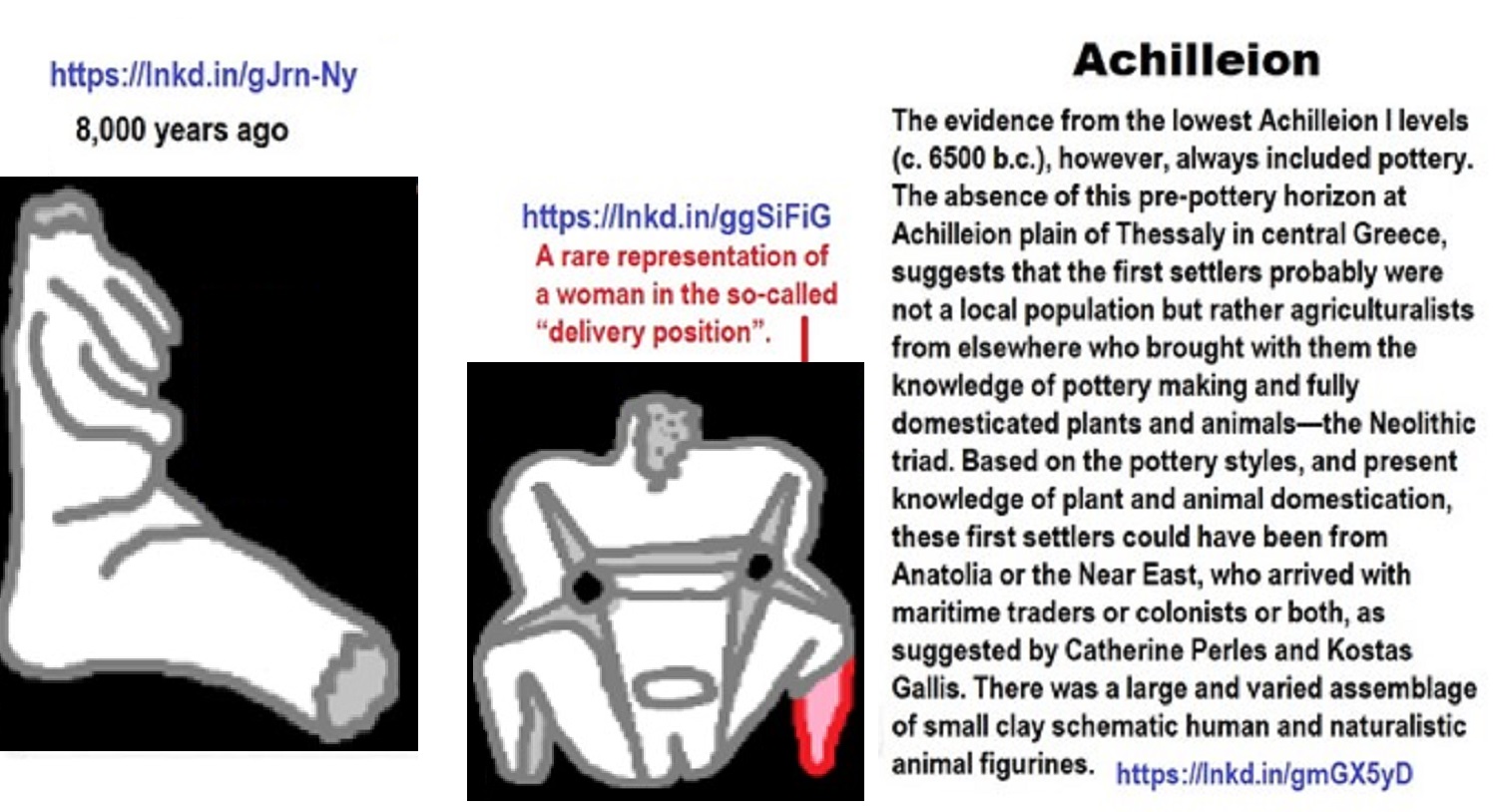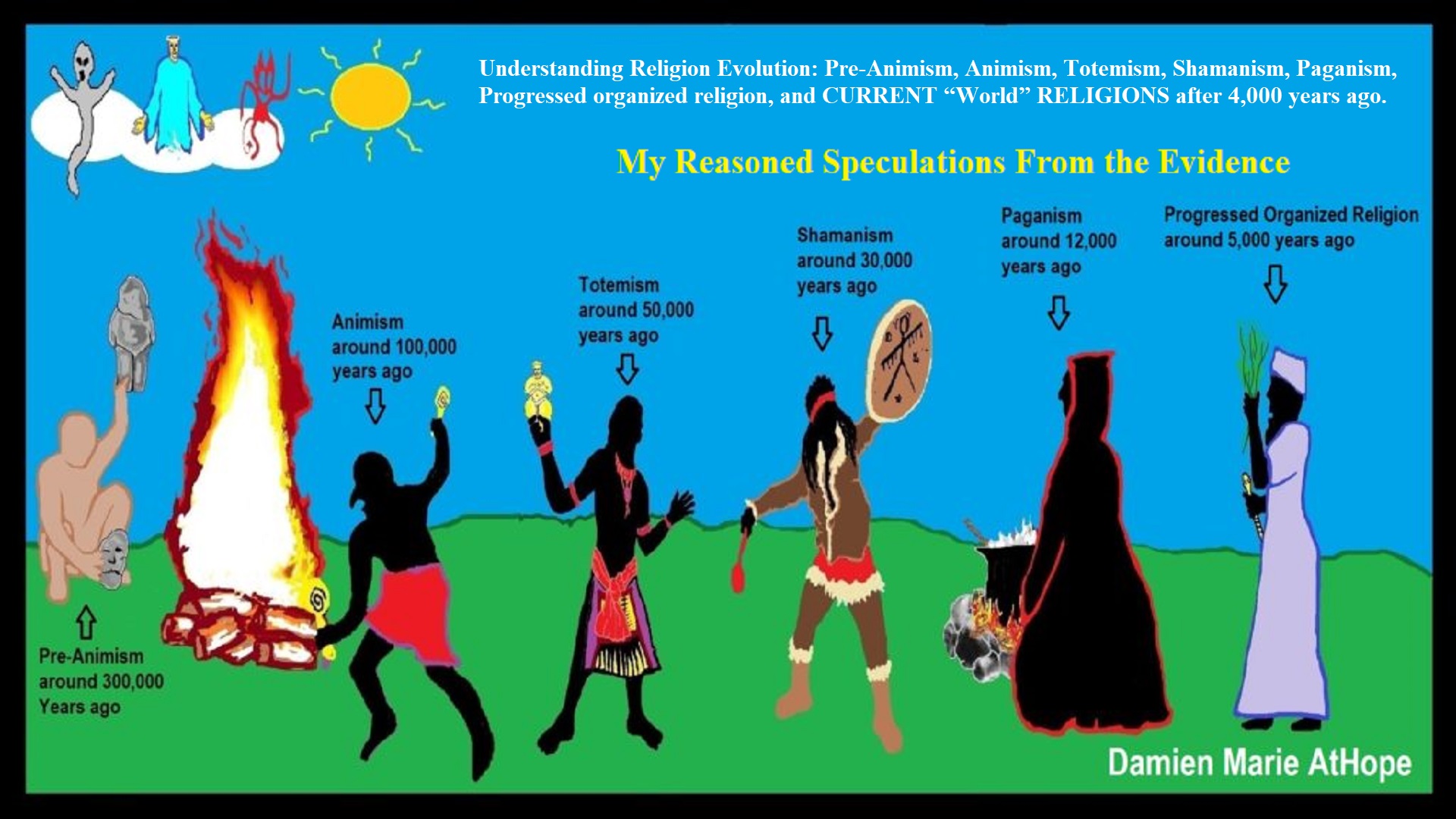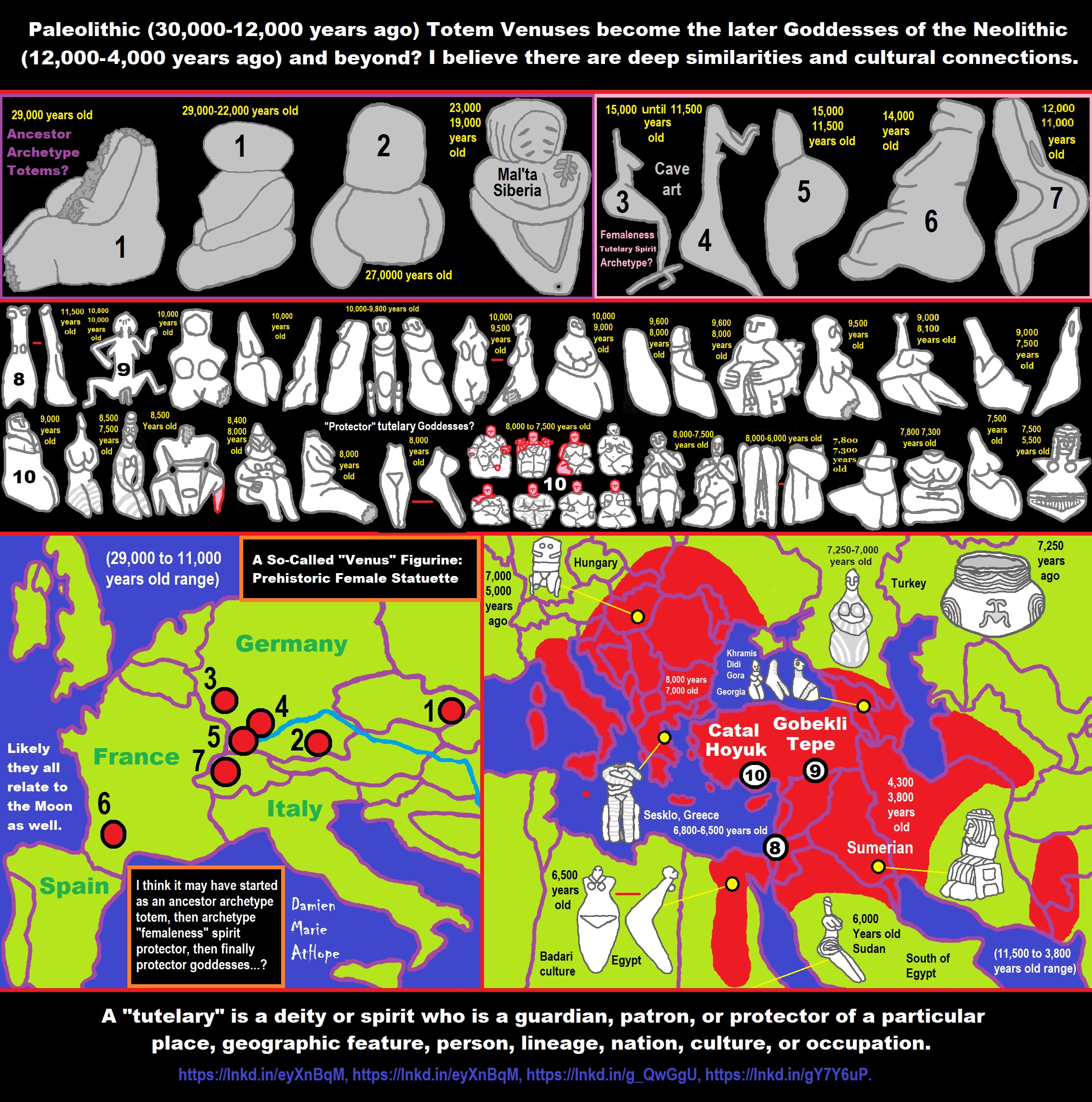
ref, ref, ref, ref, ref, ref, ref, ref, ref, ref, ref, ref, ref, ref, ref, ref, ref, ref, ref, ref, ref, ref, ref, ref, ref, ref, ref, ref, ref, ref, ref, ref, ref, ref
Part one (ancestor archetype totem?): ref, ref, ref, ref
Part two (archetype “femaleness” tutelary spirit protector?): ref, ref, ref, ref
Part three (protector tutelary goddesses?): ref, ref, ref, ref, ref, ref, ref, ref, ref, ref, ref, ref, ref, ref
Bottom right map figurines: ref, ref, ref, ref, ref, ref, ref, ref
Sitting Female statuette: Paleolithic (30,000-12,000 years ago) Totem Venuses become the later Goddesses of the Neolithic (12,000-4,000 years ago) and beyond? I believe there are deep similarities and cultural connections.
A So-Called “Venus” Figurine: Prehistoric Female Statuette
I think it may have started as an ancestor archetype totem, then archetype “femaleness” spirit protector, then finally protector goddesses…?
NEOLITHIC FIGURINES: SOME GENERAL CHARACTERISTICS
“Statuettes of human beings and animals, mostly small and made of clay, elements of the Neolithic world of symbols and imagery. Although at first glance they seem quite diverse, the greater part of clay statuettes nonetheless follows an imaging scheme that was already developed during the 11,000-10,000 years ago. Figures of the Palaeolithic period with common bent legs can-not stand; their heads were bowed/lowered.” ref
“Neolithic figures, in contrast, are commonly free-standing and their view is often directed upwards, as can be observed in the statuette from Mureybet. Aside from free-standing figures, there are also several seated figures in Neolithic statuary, like-wise with the head tilted back and the face directed forward or upwards. Emerging here, in contrast to Palaeolithic statuettes, is something new in form, which presumably should also express something new in the way of thinking as well as execution.” ref
“The Neolithic invention of depiction was very successful. Corresponding statuettes were produced for over five thousand years, until at the end of the 7,200-6,000 years ago the production of anthropomorphic art was completely abandoned in many regions or was replaced regionally by new conceptions. Clay figurines were created in the crescent of Neolithic cultures in the Near East, Anatolia, and Southeastern Europe.” ref
“Yet, their emergence was not ubiquitous. No clay statuettes were produced in the distribution areas of pottery with cardial and impresso decoration, especially in Northern Africa, Spain, and Southern France. The invention of the figural pictorial scheme during the Early Neolithic (Pre-Pottery Neolithic A) constitutes the foundation for the entire further history of Neolithic clay figures. Within a geographic sphere, extending from the Tigris to the Middle Danube Rivers, this pictorial scheme varied within a narrow range.” ref
“The position of the arms was variable, so that different types of images can be discerned. General and basic characteristics of figural art to underscore here are axial symmetrical structure, frontality, and stylization. Axial symmetry dwindled only in seated figures with legs folded to the side, especially in Anatolia and Greece. However, attempts to lessen axial symmetry did not catch on in the Balkan Peninsula.” ref
“The restriction of Neolithic figurines to only a few representational types implies that they were not just secondary decorative works or children’s toys. They were far more an expression of the self-perception and the self-reassurance of these early farming communities. A new economic basis of subsistence was not the sole great change effected by the “Neolithic revolution”; transformation from hunter-gatherer societies to rural farming societies was a more complex process, associated with it was also a basic transformation in thinking and a change in the system of social symbols.” ref
“The dissemination of an agricultural way of life towards the West followed, as of around 9,000-8,000 years ago, in a new model of village organization. No special cult houses that replaced large communal buildings for cultic purposes are attested in Neolithic villages of the following times. Quite the opposite: the structures are all of almost the same size and shape. And in the emerging bundle of different innovative techniques, through which the farming economy and way of life spread abroad, were also anthropomorphic figurines. Clay figures still appear in settlements of the Pottery Neolithic period, but their form is clearly more elaborate. Further, there is a greater variety in the types of Halaf art, as noticeable in the finds from Domuztepe.” ref
“This variety in types is displayed in several small collections of figurines, for example, in the settlement of Girikihaciyan. In Tülintepe, east of Elazığ, two settlement phases could be distinguished: one phase of the early and one phase of the Late Chalcolithic period. The figurines found there, thought to be females because of their breasts, have marked elongated heads. The face is shown with protruding eyes, eyebrows, and a nose in relief. The same can be noted in the head of a statuette found in TilHuzur-Yayvantepe. Even in details, statuettes from the sphere of the Halaf culture display the same configuration.” ref
Tutelary Deities
“A tutelary (also tutelar) is a deity or spirit who is a guardian, patron, or protector of a particular place, geographic feature, person, lineage, nation, culture, or occupation. The etymology of “tutelary” expresses the concept of safety and thus of guardianship. In late Greek and Roman religion, one type of tutelary deity, the genius, functions as the personal deity or daimon of an individual from birth to death. Another form of personal tutelary spirit is the familiar spirit of European folklore.” ref

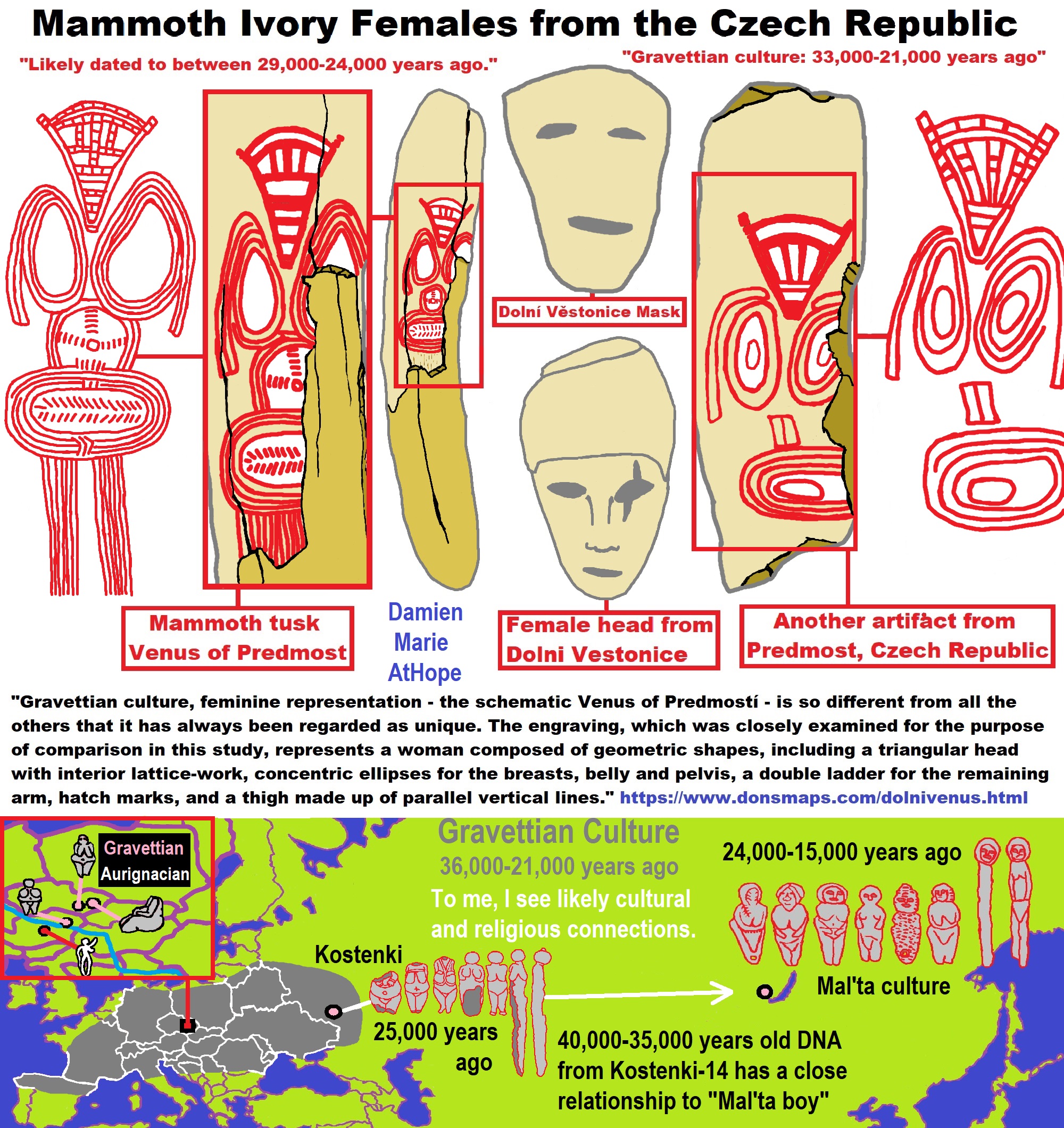



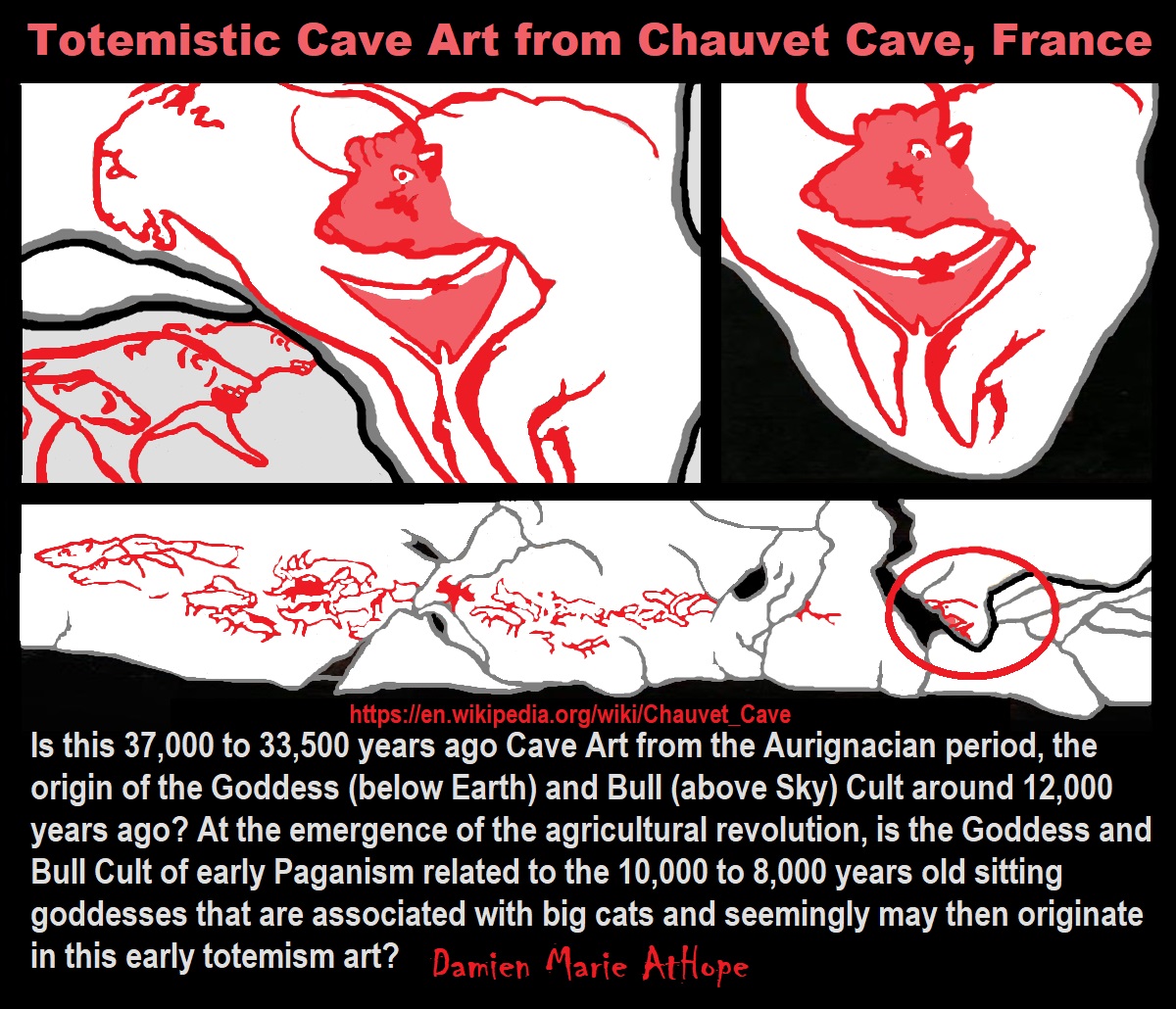
Chauvet cave
“The Chauvet-Pont-d’Arc Cave in the Ardèche department of southeastern France is a cave that contains some of the best-preserved figurative cave paintings in the world, as well as other evidence of Upper Paleolithic life. It is located near the commune of Vallon-Pont-d’Arc on a limestone cliff above the former bed of the river Ardèche, in the Gorges de l’Ardèche. The dates have been a matter of dispute but a study published in 2012 supports placing the art in the Aurignacian period, approximately 32,000–30,000 years ago. A study published in 2016 using additional 88 radiocarbon dates showed two periods of habitation, one from 37,000 to 33,500 years ago and the second from 31,000 to 28,000 years ago, with most of the black drawings dating to the earlier period.” ref
“Hundreds of animal paintings have been cataloged, depicting at least 13 different species, including some rarely or never found in other ice age paintings. Rather than depicting only the familiar herbivores that predominate in Paleolithic cave art, i.e. horses, aurochs, mammoths, etc., the walls of the Chauvet Cave feature many predatory animals, e.g., cave lions, leopards, bears, and cave hyenas. There are also paintings of rhinoceroses. Typical of most cave art, there are no paintings of complete human figures, although there is one partial “Venus” figure composed of what appears to be a vulva attached to an incomplete pair of legs. Above the Venus, and in contact with it, is a bison head, which has led some to describe the composite drawing as a Minotaur. There are a few panels of red ochre hand prints and hand stencils made by blowing pigment over hands pressed against the cave surface. Abstract markings—lines and dots—are found throughout the cave. There are also two unidentifiable images that have a vaguely butterfly or avian shape to them. This combination of subjects has led some students of prehistoric art and cultures to believe that there was a ritual, shamanic, or magical aspect to these paintings.” ref
“One drawing, later overlaid with a sketch of a deer, is reminiscent of a volcano spewing lava, similar to the regional volcanoes that were active at the time. If confirmed, this would represent the earliest known drawing of a volcanic eruption. The artists who produced these paintings used techniques rarely found in other cave art. Many of the paintings appear to have been made only after the walls were scraped clear of debris and concretions, leaving a smoother and noticeably lighter area upon which the artists worked. Similarly, a three-dimensional quality and the suggestion of movement are achieved by incising or etching around the outlines of certain figures. The art is also exceptional for its time for including “scenes”, e.g., animals interacting with each other; a pair of woolly rhinoceroses, for example, are seen butting horns in an apparent contest for territory or mating rights.” ref
Aurignacian burials (around 37,000-30,000 years ago) belong to the early phase of this period in Europe. Examples have been excavated at Cave of Cavillon, Liguria – a burial wearing a cap of netted whelk shells with a border of deer’s teeth, red ochre around the face, and a bone awl at the side. ref
Aurignacian in the Zagros region dates back to about 35,500 years ago at Yafteh Cave, Lorestan, Iran. ref

ref, ref, ref, ref, ref, ref, ref
Ref: Insoll, T. (2012). The Oxford handbook of the archaeology of ritual and religion. Oxford, United Kingdom. Oxford University Press.
“The Venus of Hohle Fels (ancestor archetype totem?) dates back at least 35,000 years to the Aurignacian cultural period of Europe (43,000 to 26,000 years ago) and the start of woman as a totem. That Aurignacian culture (Animist-Totemist) was succeeded around 33,000 years ago by Gravettian culture of Europe (Animist-Totemist-Shamanist) at around 31,000 years ago with their first Venus figurine. However, most so-called Venus figurines date from the Gravettian cultural period dating between 26,000 –21,000 years ago. This cultural period too, was overtaken by the Magdalenian cultural period of Europe (Animist-Totemist-Shamanist) (17,000 to 12,000 years ago) (archetype “femaleness” spirit protector?) ending their last Female statuette the Venus of Monruz which may date back about 11,000 years ago.” ref
I surmise these figurines are archetypal female ancestor figures first expressing both fertility and the gatherer cult evolving around mainly women in hunting-gathering culture. As the Neolithic revolution comes along the main hunting-gathering culture rituals are adapted and replaced. However, the changes are not random because farming is in some sense just an extension of the gathering culture rather than the hunting culture. Therefore, one can see the reason it more predominantly utilizes both fertility and the gatherer cult and I think changes the archetypal female figures from the likely ancestor predecessors to new goddesses as the needs had changed. Some figures are clearly women, some are somewhat indeterminate presumed women, a few could be asexual but are presumed female and a few could be homosexual male/transwomen thus in that way a female as well.




Goddesses / Archetype ancestor shapes relating to the three realms and moon phases: Waxing, Full, and Waning Moon: As well as relating to Heaven, Earth, and Underworld. The figure with the arms up likely represents both bull horns and the worship and parse/dancing for the heavens. It seemingly relates to different functions with different meanings but I think are all part of a widespread gatherer cult/farming paganism cult magic by shamanistic paganism.
In the picture above is a reference to the larger theme in connection with what I see as the farming paganistic Goddess cult concepts and as stated before relating to the three realms: heaven (I assumed goddess figure arms up from the Badarian culture with the earliest direct evidence of agriculture in Upper Egypt during the Predynastic Era), earth (I assumed pre-goddess archetype ancestor figure in hunter-gather shamanism Magdalenian with links to both Iberomaurusians and connections to the First Paganists or arms around the body or little to no arms), and the last the underworld (I assumed goddess figure arms down: a Badarian culture female mortuary figurine).
Venus of Courbet figure is one of many similar abstract sitting position women figurines and the oldest listed above to me is a pre-goddess expression of the mother goddesses that are more fully developed in response to the new social demands seen in the neolithic expressions of culture or full moon representation and moon references stretch back to Venus of Courbet found at one of the three sites of Courbet, Bruniquel and Montastruc, which are all very close to each other, and are often treated as a single site. The Roc du Courbet is one of a series of Upper Palaeolithic rock shelters near the village of Bruniquel, in France‘s Tarn region. It is believed that the majority of the remains recovered were derived from de Lastic’s black layer or ‘couche noire’, which is thought to date to Magdalenian V or VI.
However, the provenance of remains within this layer is not clear. Furthermore, both human and animal remains were found within not only a black layer (‘limon noir’), but also a red layer (‘limon rouge’) and a breccia deposit. The piece was excavated from Courbet Cave, Montastruc, Tarn-et-Garonne, Midi-Pyrénées, France with a sitting posture figure outlined om it dated to around 13 000 years ago, locally the Late Magdalenian period of the Upper Palaeolithic, towards the end of the last Ice Age. The headless figure is shown from the side, bending to the right, with the large rounded buttocks and thigh carefully drawn. The thin torso features a small sharp triangle that may indicate the breasts, or perhaps arms held out and on the legs.
Similar to The Venus figures of Neuchâtel – Monruz as well as The Venus figures of Petersfels (Engen). One of the last and smallest Venus Figurines to be carved during the era of Paleolithic art, the Venus of Monruz (also known as the “Venus of Neuchatel” or the “Venus of Neuchatel–Monruz“) is a pendant made of black jet, in the shape of a stylized female body in a sitting posture with an engorged buttocks and no arms. It was discovered in Switzerland. It is among the world’s oldest items of jewellery art, and exemplifies prehistoric sculpture created during the final phase of Magdalenian art, which ended 12,000-10,000 years ago. The Monruz venus bears a strong resemblance to the Venus of Engen (“Frauenidol von Engen”), one of a dozen jet pendants excavated from the shelter of Petersfels (Baden-Wurtemberg), in Germany, except that the Engen figurine is dated to 15,000 years ago. Another jet figurine is the Venus of Pekarna, which dates to 14,500 years ago. The Magdalenian was the richest period of prehistoric art, notably in the craft of cave painting, although it also witnessed exceptional sculptures like the Venus of Eliseevichi. ref, ref
I dont totally agree with these articles but it’s very informative:
A Study Of Anthropomorphic Figurines In The Neolithic
“In the Neolithic, figurines largely appear at a time when human cultures were going through significant and critical changes, so significant and critical that the period has often been referred to as the “Neolithic revolution.” These figurines do not appear in every Neolithic society but seem to be common to a great many. Nor do they appear continuously through time in each culture where they are found. Agriculture and sedentism begin to replace the lifeways of the hunter-gatherer nomads, and some of the earliest clear examples of public architecture and ceremonial gatherings begin to show up in the material records of such places as Nevalı Çori, Göbekli Tepe and Çatalhöyük. Prior to the invention of writing, symbols and signs appear in the archaeological record in the form of pictographs, petroglyphs, murals, pottery designs, and figurines. These artifacts are among the precious few sources of information about cultures long dead before the advent of writing.” ref
“The Neolithic periods of Southwest Asia and Southeastern Europe total at least 403 anthropomorphic figurines, around 11,000 to 4,300 years ago, 148 (36.7%) were from sites in Southwest Asia and 255 (63.3%) were from sites in Southeastern Europe mostly of terracotta and stone, a disproportionate number of figurines are representative of the female sex compared to male as well as that asexual-figurines are also equally disproportionate. Although most Neolithic societies may have differences among the many commonalities that these cultures shared are small portable figurines of terracotta and, sometimes, stone. Anthropomorphic figurines are recovered in a variety of archaeological contexts, many of which can be clearly defined as domestic, burial, and ritual. In Bulgaria and Moldavia, for instance, figurines are frequently found in association with Neolithic cemeteries. Neolithic figurines filled a variety of roles which included rituals for curing, protection, initiation, and marriage, as well as to support oral narratives.” ref
“Anthropomorphic figurines are also very striking examples of Neolithic artifacts that have the potential to act as external symbolic storage. The quality of individual identity within Chalcolithic Bulgarian settlements by analyzing figurines within burials. Offers five methods of decoration: incising, piercing, painting, piercing and painting, and non-decoration, and sexual identities in the figurines excavated: female (69%), male (less than 1%) and asexual (31%) thus probably multi-sexual and multi-gendered culture. Most male figurines dominated the cemeteries and female figurines prevailed in the domestic spaces, a significant presence of asexual figurines were found throughout the Neolithic and Chalcolithic.” ref
“Many figurines express obesity and while obesity is definitely represented in the archaeological records of Neolithic cultures, the discontinuity between the obesity in figurines found at Çatalhöyük and the body types excavated. To date, no clear evidence has been discovered that would indicate a body was that of an obese or robust person. The mortuary data retrieved thus far from Çatalhöyük are far from conclusive and at least one case of a burial “special treatment” could exist of a person that was obese.” ref
“The Neolithic in Southeastern Europe begins by many accounts (e.g., Talalay at around 8,500 years ago). In southern Greece and the Aegean, a large corpus of anthropomorphic figurines emerge in many places beginning around this time in the regions of Thessaly and Central Greece, Macedonia, and Crete. The region of Greece that has, to date, produced the most Neolithic figurines. The Sesklo culture in Thessaly at Dimini Sesklo and Achilleion. Notably, Sesklo figurines share many attributes with those of the Near East, such as seated posture, conical shaped heads, and coffee-bean or cowrie-shaped eyes.” ref
“North of Greece, the Karanovo culture begins in the Eastern Balkan region at about 7,800 years ago and figurines produced are marked by “focus[ed] attention on faces and hips, buttocks and the pubis”. In the Central Balkans,theVinča Complex begins around 7,265 and the figurines from this culture are very striking with distinctive triangular, mask-like faces, detailed incisions, and symmetrical perforations. Several other regions in Southeastern Europe also provide a rich body of distinct anthropomorphic figurine styles. The Tisza culture in Hungary emerged during the Late Neolithic (around 6,970-6,380 years ago), the Cucuteni culture in modern Romania and Moldavia flourished from around. 6,800-5,500 years ago.” ref
“And closer to the Adriatic but still on the Balkan Peninsula, the Butmir culture is dated to around 7,300-6,200 years ago also in the Middle and Late Neolithic periods. Also considered to be within Southeastern Europe are the island sites of Malta and Sardinia. Malta was first settled by Neolithic farmers around 7,000 years ago and through the Final Neolithic, the island produced a rich body of figurines modeled in clay or carved from stone and bone. Malone notes that current evidence supports the idea that Sardinia was occupied continuously from the Mesolithic to the Early Neolithic which began on the island around 7,230 years ago. The figurines of Sardinia are more likely to be carved of stone than modeled in clay and many are found carved from tuff, marble, alabaster, gypsum, and steatite.” ref
“It is also possible that the idea that figurines are not simply media that communicate messages or store information but also to express or be utilized as representations that have meanings that can change over time and vary from observer to observer. The mental representation of the figurine becomes the ideas and concepts held by the observer, likely influenced the figurine’s context as it was used in domestic, ritual, and ceremonial settings. Posture for most figurines is a central attribute though often one that includes a combination of limb positions. So while standing and seated are two very general descriptions of posture, the positions of limbs could define the figurine as seated with a left leg crossed over the right, legs folded underneath the figure, or even kneeling. Figurines, of course, do not have an agency that is independent of humans.” ref
“Southeastern Europe contributed a more diverse and dispersed set of sites to the corpus, with a majority of 73 (18.1%) originating from sites in Romania. Other significant contributors were sites in the regions of Bulgaria (34 figurines at 8.4%), Central Greece (23figurines at 5.7%), Sardinia (23 figurines at 5.7%), Serbia (22 figurines at 5.6%), Malta (21figurines at 5.2%), and the Peloponnese of Greece (19 figurines at 4.7%). Other contributing sites were in the regions of Kosovo (10 figurines at 2.5%), Hungary (9 figurines at 2.2%), Bosnia(9 figurines at 2.2%), and then Crete, Macedonia, and Moldavia (each with 3 figurines at 0.7%). A single contributing Neolithic figurine was from Italy which was 0.3% of the corpus.” ref
“A male figurine from Nevalı Çori dating to between 10,500 and 9,900 years ago that appears to be wearing a belt or sash around the hips that may have a leopard design. This stylistic motif is similar to that of the somewhat younger design associated with an anthropomorphic figure in a mural at Çatalhöyük also of a male(s) (which could represent a hunting cult).
If their creators fashioned figurines to represent bodies they knew best, then many or most of the creators may have been female since figurines that are clearly male represent a small percentage of the corpus but what would it mean in relation to the very high percentage of asexual figurines in the Neolithic, (could mean trans/intersex people or that they were for use by several male and female individuals, or diverse gendered duties, maybe a little of both?).” ref
The often largely forgotten Gender Fluidity in the Goddesses and Gods
“Many cultures have gods, demi-gods, and heroes with both male and female attributes. In Hindu mythology, Shiva is seduced by Vishnu’s female avatar, Mohini, giving birth to the god Shasta (Ayyappa). Shiva himself is often represented as Ardhanarishvara, an androgynous composite of Shiva and Parvati with a body that is male on the right-hand side and female on the left. Arjuna, the great warrior of the Mahabharata epic, spent a year as a woman, during which he took the name of Brihannala and taught song and dance to the princess Uttara.” ref
“The Mesopotamian Ishtar, the beautiful goddess of fertility, love, war, and sex, is sometimes represented with a beard to emphasize her more bellicose side. She could change a man into a woman, and the assinnu, kurgarru, and kuku’u who performed her cult had both male and female features. After the hero Gilgamesh rejected her offer of marriage, Ishtar unleashed the Bull of Heaven, ultimately leading to the death of Enkidu, whom Gilgamesh loved more than anyone: “Hear me, great ones of Uruk/ I weep for Enkidu, my friend/ Bitterly mourning like a woman mourning.” ref
“Hapi, the Egyptian god of the annual flooding of the Nile, brought such fertility as to be regarded by some as the father of the gods: he is generally depicted as intersex, with pendulous breasts and a ceremonial false beard.
To seduce the nymph Callisto, Zeus, the king of the Greek gods, took the form of the goddess Artemis.” ref
Ten Intersex Goddesses and Gods
“Many cultures have had religions and beliefs that feature human-like gods and goddesses, most of them being specifically male or female. However, for some, creation and fertility was not always a female feature, and many concepts of nature and the universe could only be explained from a dipole perspective. Sometimes, being intersex was a result of magical or mysterious events. 1. Hermaphroditus (Greek), 2. Agdistis (Phrygian, Greek, Roman), 3.“Hapi (Egyptian), 4. Ardhanarishvara (Hindu), 5. Lan Caihe (China), 6. Ymir (Norse), 7. Ometeotl (Aztec), 8. Jehovah (Hermetic Kabbalah), 9. Phanes (Greek), and Ahsonnutli (Navaho).” ref

Picture Link: ref, ref, ref, ref
Netiv Hagdud
“Netiv HaGdud is a moshav and Israeli settlement in the West Bank. Located in the Jordan Valley around twenty kilometers north of Jericho, it falls under the jurisdiction of Bik’at HaYarden Regional Council.” ref

10,800-10,000 years old “Göbekli Tepe, engraving of a female person from layer II.” ref
“Gobekli Tepe is an archaeological site in the Southeastern Anatolia Region of Turkey approximately 15 km (9 mi) as the crow flies or 30 km (19 mi) by car, northeast of the city of Şanlıurfa. The tell (artificial mound) has a height of 15 m (50 ft) and is about 300 m (1,000 ft) in diameter. It is approximately 760 m (2,500 ft) above sea level. The tell includes two phases of use, believed to be of a social or ritual nature, dating back to the 10th–8th millennium BCE. During the first phase, belonging to the Pre-Pottery Neolithic A (PPNA), circles of massive T-shaped stone pillars were erected—the world’s oldest known megaliths. Dated at around 9,500 BEC, these megaliths are 5,500 years older than the first cities of Mesopotamia and 7,000 years older than Stonehenge.” ref

ref, ref, ref, ref, ref, ref, ref
Trialetian culture (16,000–8000 years ago) the Caucasus, Iran, and Turkey, likely involved in Göbekli Tepe. Migration 1?
Haplogroup R possible time of origin about 27,000 years in Central Asia, South Asia, or Siberia:
- Mal’ta–Buret’ culture (24,000-15,000 years ago)
- Afontova Gora culture (21,000-12,000 years ago)
- Trialetian culture (16,000–8000 years ago)
- Samara culture (7,000-6,500 years ago)
- Khvalynsk culture (7,000-6,500 years ago)
- Afanasievo culture (5,300-4,500 years ago)
- Yamna/Yamnaya Culture (5,300-4,500 years ago)
- Andronovo culture (4,000–2,900 years ago) ref
Trialetian sites
Caucasus and Transcaucasia:
- Edzani (Georgia)
- Chokh (Azerbaijan), layers E-C200
- Kotias Klde, layer B” ref
Eastern Anatolia:
- Hallan Çemi (from ca. 8.6-8.5k BC to 7.6-7.5k BCE)
- Nevali Çori shows some Trialetian admixture in a PPNB context” ref
Trialetian influences can also be found in:
- Cafer Höyük
- Boy Tepe” ref
Southeast of the Caspian Sea:
- Hotu (Iran)
- Ali Tepe (Iran) (from cal. 10,500 to 8,870 BCE)
- Belt Cave (Iran), layers 28-11 (the last remains date from ca. 6,000 BCE)
- Dam-Dam-Cheshme II (Turkmenistan), layers7,000-3,000 BCE)” ref
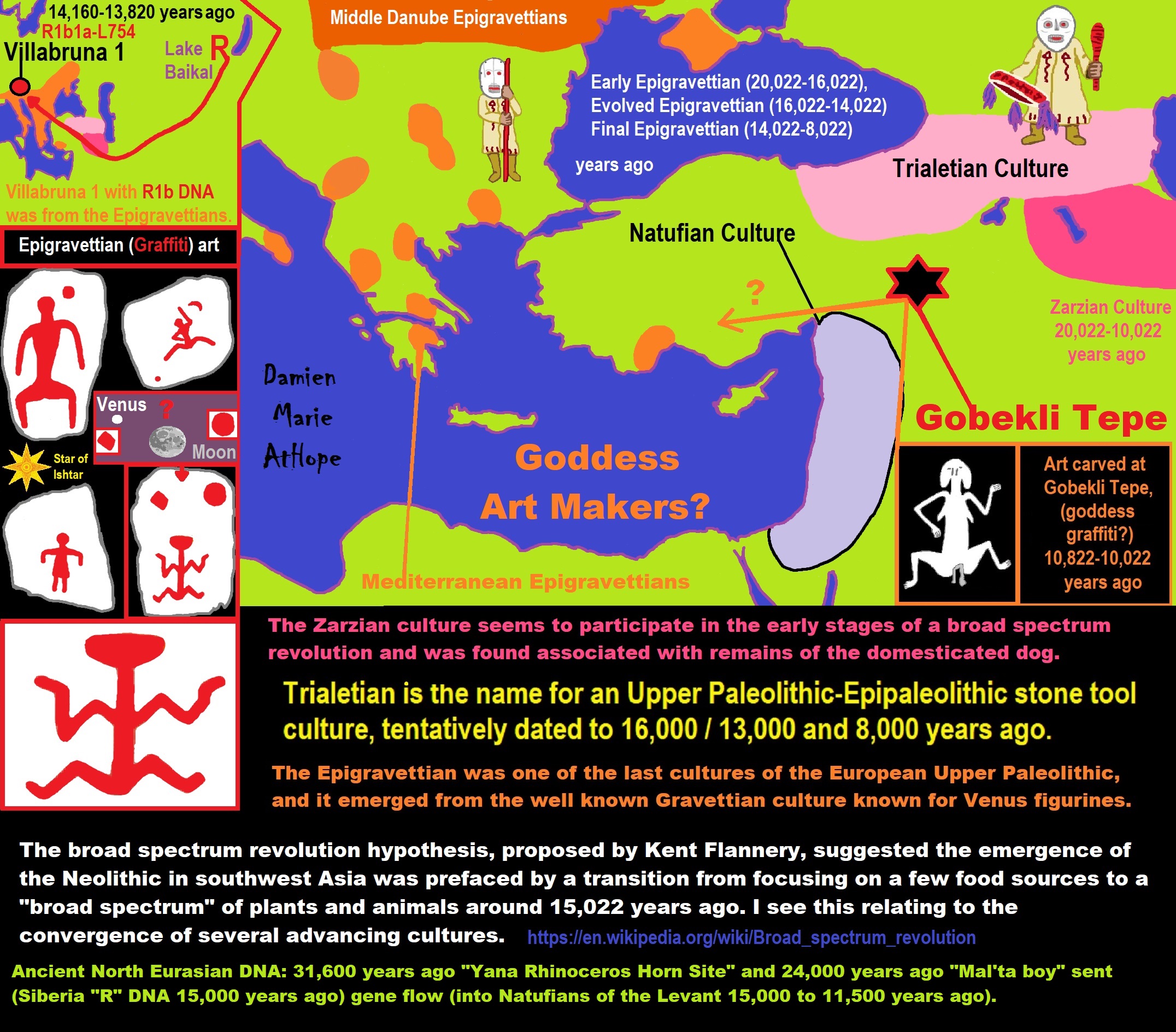


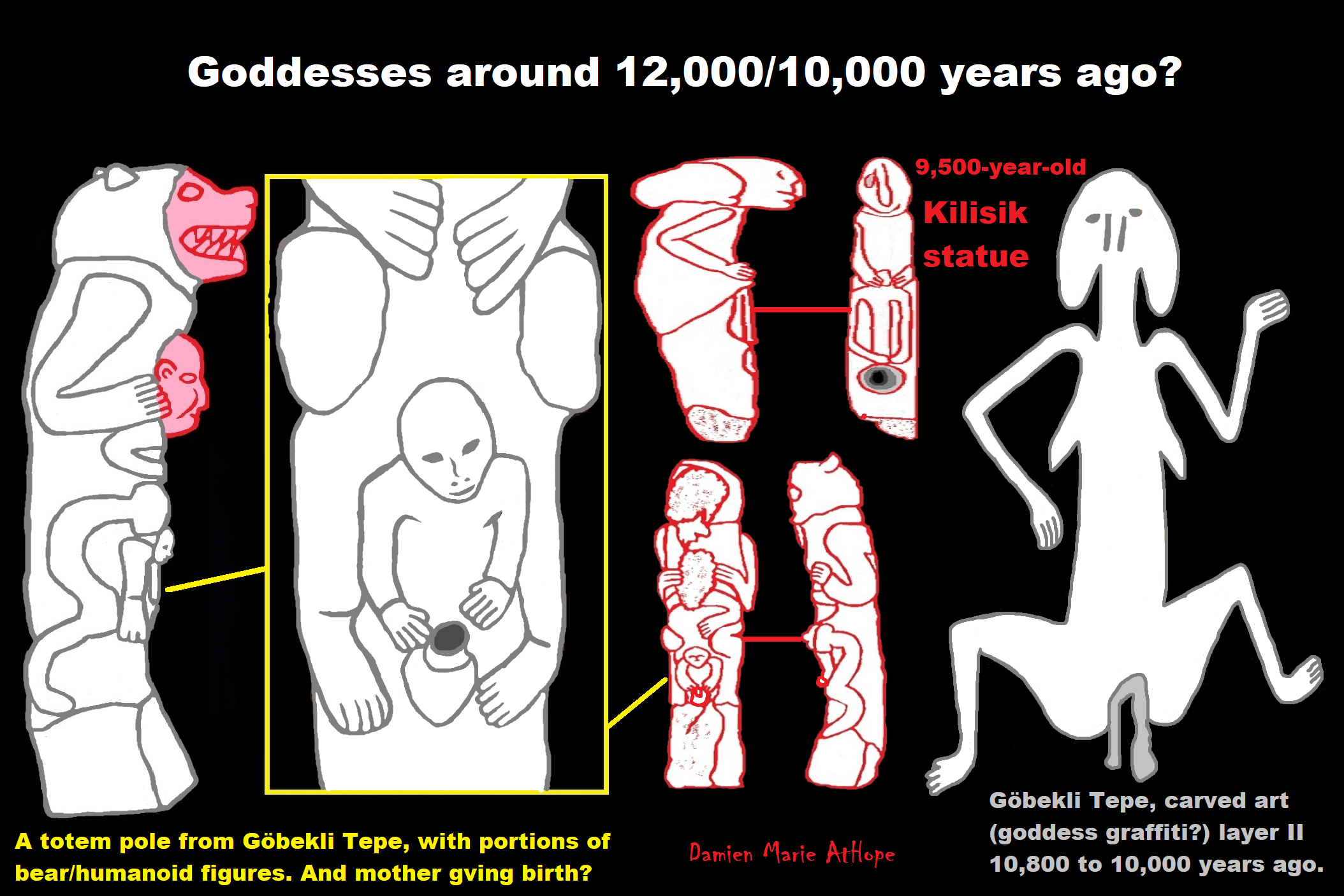

ref, ref, ref, ref, ref, ref, ref, ref, ref, ref
Lajja Gauri Style
- Lajja Gauri. China, Majiayao. 3,200-2,000 BCE or around 5,220 to 4,020 years ago. ref
- Lajja Gauri. India, Kashmir. ref
- Lajja Gauri. Egypt. ref
- Lajjā Gaurī a lotus-headed Hindu goddess. ref
- Lajja Gauri. Nepal. ref
- Lajjā Gaurī lotus-headed goddess. India. ref
Sheela na gig Style

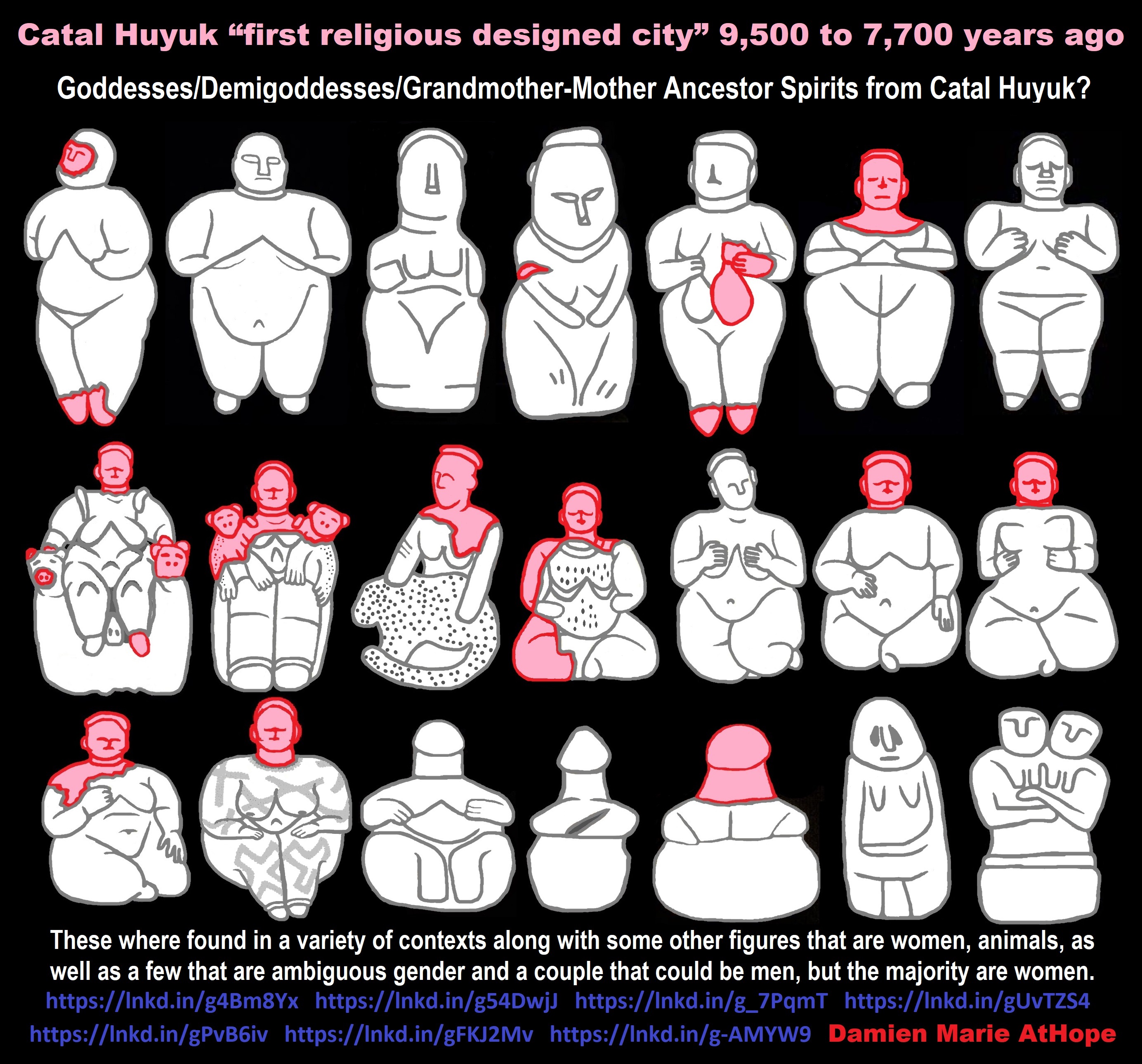
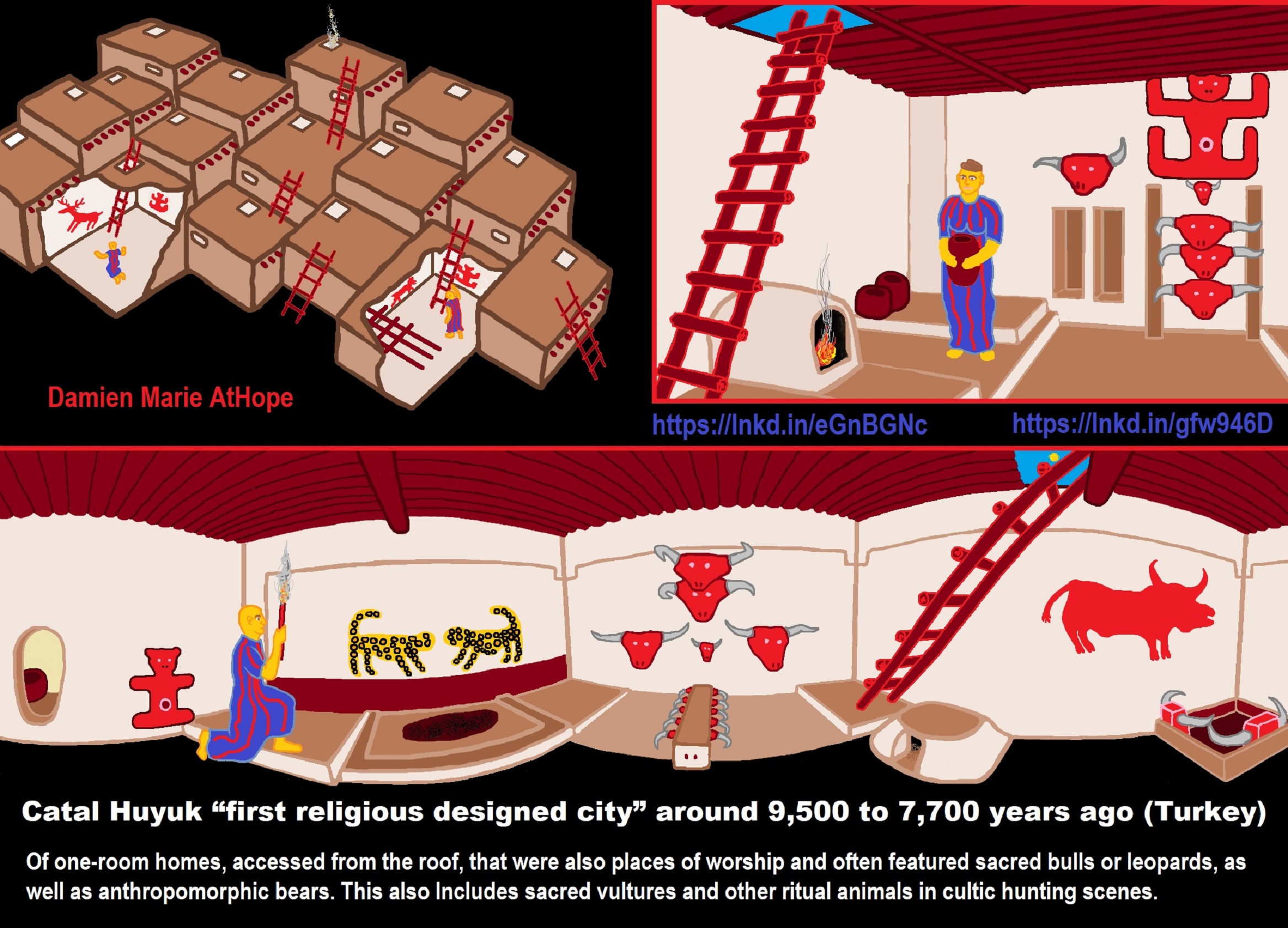
ref, ref, ref, ref, ref, ref, ref
Catal Huyuk “first religious designed city” around 9,500 to 7,700 years ago (Turkey)
Seated Mother Goddesses when depicted as fat, to me, generally should be thought originally depict the meaning FULL MOON or the lesser association with the sun that mainly limited until Neolithic agriculture the such as seen in the based on the 7 position of the Sun in the sky throughout a solar day like Sun’s “dawn” sun emerging in the morning, (also starting as creator once mother turned to father just as in the connections to the moon’s waxing crescent), then “civil twilight” high noon(full moon), daylight hours or “dusk” starting to get dark or metaphorically die (moon’s waning crescent).
Therefore, the goddess cults associated with the moon in full are also part of the stages of the sun like a full sun: ie. pregnant/pseudo-pregnant or fertile/life producing maybe a birthing throne also a reference to fertility, thus a Mother Goddess. I could even be that she is in the process of giving birth while seated on her throne, which has two hand rests in the form of feline (leopard or panther) heads. The statuette, one of several iconographically similar ones found at the site, is associated with other corpulent prehistoric goddess figures that are sitting or standing that are fat, of which the most famous is the Venus of Willendorf. When it was found, in a grain-bin; she may have intended to protect the harvest and grain, its head and hand rest of the right side were missing and current head and the hand rest are modern replacements. This is but one of the presumed goddess figures found at Çatal Höyük, north of the Taurus Mountains in a fertile agricultural region of South-Anatolia/Turkey. Many statues found here, which seem to suggest a representation of a generalized Great goddess cult, who headed the pantheon of an essentially equalitarian culture if we are taking our clues from this site of Catal Huyuk “first religious designed city” around 9,500 to 7,700 years ago (Turkey).ref, ref, ref
“Catal Hoyuk was a very large Neolithic and Chalcolithic proto-city settlement in southern Anatolia, which existed from approximately 7100-5700 BCE or 9,120-7,720 years ago, and flourished around 7000 BCE or 9,020 years ago. Çatalhöyük is located overlooking the Konya Plain, southeast of the present-day city of Konya (ancient Iconium) in Turkey, approximately 140 km (87 mi) from the twin-coned volcano of Mount Hasan. The eastern settlement forms a mound that would have risen about 20 m (66 ft) above the plain at the time of the latest Neolithic occupation. There is also a smaller settlement mound to the west and a Byzantine settlement a few hundred meters to the east. The prehistoric mound settlements were abandoned before the Bronze Age. A channel of the Çarşamba River once flowed between the two mounds, and the settlement was built on alluvial clay which may have been favorable for early agriculture.” ref
“Çatalhöyük has strong evidence of an egalitarian society, as no houses with distinctive features (belonging to royalty or religious hierarchy, for example) have been found so far. The most recent investigations also reveal little social distinction based on gender, with men and women receiving equivalent nutrition and seeming to have equal social status, as typically found in Paleolithic cultures. Children observed domestic areas. They learned how to perform rituals and how to build or repair houses by watching the adults make statues, beads, and other objects. Çatalhöyük’s spatial layout may be due to the close kin relations exhibited amongst the people. It can be seen, in the layout, that the people were “divided into two groups who lived on opposite sides of the town, separated by a gully.” Furthermore, because no nearby towns were found from which marriage partners could be drawn, “this spatial separation must have marked two intermarrying kinship groups.” This would help explain how a settlement so early on would become so large.” ref
“In upper levels of the site, it becomes apparent that the people of Çatalhöyük were gaining skills in agriculture and the domestication of animals. Female figurines have been found within bins used for storage of cereals, such as wheat and barley, and the figurines are presumed to be of a deity protecting the grain. Peas were also grown, and almonds, pistachios, and fruit were harvested from trees in the surrounding hills. Sheep were domesticated and evidence suggests the beginning of cattle domestication as well. However, hunting continued to be a major source of food for the community. Pottery and obsidian tools appear to have been major industries; obsidian tools were probably both used and also traded for items such as Mediterranean sea shells and flint from Syria. There is also evidence that the settlement was the first place in the world to mine and smelt metal in the form of lead. Noting the lack of hierarchy and economic inequality, historian Murray Bookchin has argued that Çatalhöyük was an early example of anarcho-communism.” ref
“Conversely, a 2014 paper argues that the picture of Çatalhöyük is more complex and that while there seemed to have been an egalitarian distribution of cooking tools and some stone tools, unbroken quern-stones and storage units were more unevenly distributed, indicating social inequality. Private property existed but shared tools also existed. It was also suggested that Çatalhöyük was slowly becoming less egalitarian, with greater inter-generational wealth transmission, though there may have been efforts to try to stop this.” ref
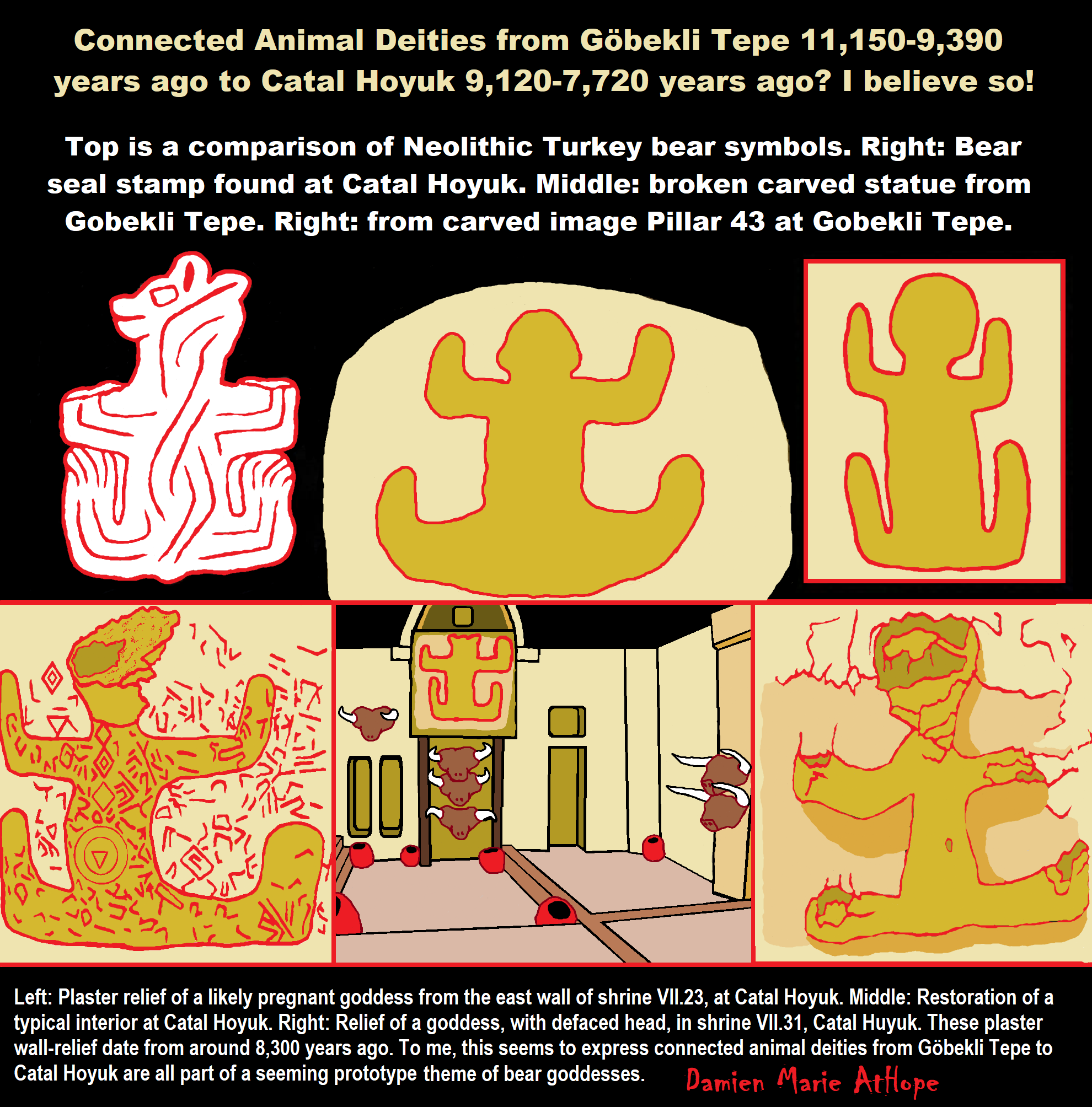
ref, ref, ref, ref, ref, ref, ref
Bear-Goddess & Three Bulls
Hybrid imagery and symbolism at Çatal Höyük to which I surmise could express the mother-bear goddess (ie. roaring that could represent thunderstorms like lions or bulls in association with goddesses). The three bulls to me could represent the three stages of the moon. Mother goddess at the site of Catal Hoyuk in Turkey. Although the art of Çatal Höyük may indicate an association between men, hunting and wild animals, and between women and plants and agriculture, current evidence indicates neither a patriarchy nor a matriarchy, but possibly a society in which gender did not rigidly determine one’s role in life. ref, ref
I surmise that there is an expression in goddess representation that relates to the three realms sky goddess with the upturned arms relating to the waxing crescent, the fat sitting goddess is a representation to the full moon and the arms turned down are a representation of the waning crescent. And it this way both up and down arms represent metaphorical bullhorns and why goddesses are associated with bulls or as bulls. Especially, with paganism.
Could it be that the emergence of this new goddess cult of the sitting mother goddess in the Levant, somehow related to the new problems these Neolithic women faced as there was a decrease in mean age at death for Neolithic females which may be the result in higher levels or maternal risk associated with child-birth. It is intriguing to consider the shifts in perceptions and behaviors surrounding women’ health, pregnancy, and childbirth, and kin relations that might extend from such changes. Studies point to increasing fertility and higher birth rates among some newly sedentary groups. ref
Goddess and the Bull and what of the smaller figurines from Neolithic contexts in the southern Levant?
Neolithic Levantine figurines are typically deposited in domestic fill, rather than pits, caches, or other distinctive features. Some are made of stone, but most are made of clay. Breakage patterns suggest that some of the figurines may have been intentionally broken. The stone examples indicate perhaps different meanings attached to different kinds of rituals being performed as in a more personal domestic cult (involving an association with mother goddess) and an additional clan ancestor cult many seem male in expression some with erect or presented phallus and the many associations in art like that at Çatalhöyük it wich groups of men are believed to be performing ritual hunting scenes that may involve group taunting of the horned animals (involving an association with horned animals such as the bull-horns being both a part of the early phallus phenomena as well as a representation of the moons emerging crescent or dissipating crescent associated with arms of the goddess). In terms of sex/gender identification, there are figurines that encode no recognizable clues about sex or gender. And there are also examples of figurines with dual-sex connotations. While the majority exhibit a female form, there are also examples of male figurines. ref, ref
“Neolithic figurine mother goddess and/or wise grandmother ancestor-spirit figure (seemingly this represented a real person possibly as the representations of fat rolls seem to be too anatomically correct to be a guess) or a little of both most likely and has been proposed as serving a ritual purpose. The figure is 6.7 inches tall, weighs 2.2 lbs, and was made of marmoreal stone. Along with the fact that unlike some others found in garbage pits this figurine was found beneath a platform along with a piece of obsidian which suggests that it may have been placed there as part of some ritual. Çatal Höyük is recognized as one of the best archaeological sites in the world for understanding prehistoric humanity. It is the largest and best-preserved Neolithic site found to date. While most of the world was populated by nomadic hunter-gatherers, Çatal Höyük was a large “honeycomb city” settlement with as many as 10,000 people described as a massive labyrinth of mud-brick houses which has 18 successive layers of building. “These figurines symbolize old women that have high status in the society instead of goddesses,” excavation supervisor Professor Ian Hodder of Stanford University said about the figurines that have distinctive bellies, breasts, and hips.” ref, ref

Seated Woman of Çatalhöyük
“The Seated Woman of Çatalhöyük (also Çatal Höyük) is a baked-clay, nude female form, seated between feline-headed arm-rests. It is generally thought to depict a corpulent and fertile Mother goddess in the process of giving birth while seated on her throne, which has two hand rests in the form of feline (lioness, leopard, or panther) heads in a Mistress of Animals motif. The statuette, one of several iconographically similar ones found at the site, is associated to other corpulent prehistoric goddess figures, of which the most famous is the Venus of Willendorf. It is a neolithic sculpture shaped by an unknown artist, and was completed in approximately 6000 BCE.” ref
Kubaba
“Kubaba is the only queen on the Sumerian King List, which states she reigned for 100 years – roughly in the Early Dynastic III period (ca. 2500–2330 BCE) of Sumerian history. A connection between her and a goddess known from Hurro–Hittite and later Luwian sources cannot be established on the account of spatial and temporal differences. Kubaba is one of very few women to have ever ruled in their own right in Mesopotamian history. Most versions of the king list place her alone in her own dynasty, the 3rd Dynasty of Kish, following the defeat of Sharrumiter of Mari, but other versions combine her with the 4th dynasty, that followed the primacy of the king of Akshak. Before becoming monarch, the king list says she was an alewife, brewess or brewster, terms for a woman who brewed alcohol.” ref
“Kubaba was a Syrian goddess associated particularly closely with Alalakh and Carchemish. She was adopted into the Hurrian and Hittite pantheons as well. After the fall of the Hittite empire, she continued to be venerated by Luwians. A connection between her and the similarly named legendary Sumerian queen Kubaba of Kish, while commonly proposed, cannot be established due to spatial and temporal differences. Emmanuel Laroche proposed in 1960 that Kubaba and Cybele were one and the same. This view is supported by Mark Munn, who argues that the Phrygian name Kybele developed from Lydian adjective kuvavli, first changed into kubabli and then simplified into kuballi, and finally kubelli. However, such an adjective is a purely speculative construction.” ref
Cybele
“Cybele (Phrygian: “Kubileya/Kubeleya Mother”, perhaps “Mountain Mother”) is an Anatolian mother goddess; she may have a possible forerunner in the earliest neolithic at Çatalhöyük, where statues of plump women, sometimes sitting, have been found in excavations. Phrygia‘s only known goddess, she was probably its national deity. Greek colonists in Asia Minor adopted and adapted her Phrygian cult and spread it to mainland Greece and to the more distant western Greek colonies around the 6th century BCE. In Greece, Cybele met with a mixed reception. She became partially assimilated to aspects of the Earth-goddess Gaia, of her possibly Minoan equivalent Rhea, and of the harvest–mother goddess Demeter. Some city-states, notably Athens, evoked her as a protector, but her most celebrated Greek rites and processions show her as an essentially foreign, exotic mystery-goddess who arrives in a lion-drawn chariot to the accompaniment of wild music, wine, and a disorderly, ecstatic following.” ref
“Uniquely in Greek religion, she had a eunuch mendicant priesthood. Many of her Greek cults included rites to a divine Phrygian castrate shepherd-consort Attis, who was probably a Greek invention. In Greece, Cybele became associated with mountains, town and city walls, fertile nature, and wild animals, especially lions. In Rome, Cybele became known as Magna Mater (“Great Mother”). The Roman State adopted and developed a particular form of her cult after the Sibylline oracle in 205 BCE recommended her conscription as a key religious ally in Rome’s second war against Carthage (218 to 201 BCE). Roman mythographers reinvented her as a Trojan goddess, and thus an ancestral goddess of the Roman people by way of the Trojan prince Aeneas. As Rome eventually established hegemony over the Mediterranean world, Romanized forms of Cybele’s cults spread throughout Rome’s empire. Greek and Roman writers debated and disputed the meaning and morality of her cults and priesthoods, which remain controversial subjects in modern scholarship.” ref
Throned/Seated Mother Goddess of Çatal Höyük
Bulls and Lions represent the roaring in the Sky Produced by Thunderstorms.
The around 8,000 to 7,500 years old Seated Woman of Çatalhöyük (also Çatal Höyük) is a baked-clay, nude female form, seated between feline-headed arm-rests possible lionesses, reportedly found n a grain bin similarly to a 7,200-year-old pottery and food offering “model” in what appears to be a grain silo, the current oldest example of a ritual propitiating the gods to preserve the crops or harvest, surmise archaeologists. Found at the Tel Tsaf site turned out to have silos for intensive food storage, thus the unique vessel purportedly attesting to evidence of sacred paganistic food storage rituals Israeli. ref, ref
The silos at Tel Tsaf reached a storage capacity estimated at 15–30 tons of grain, a clear indication of the accumulation of surpluses on a scale unprecedented in the ancient Near East. Also found at Tel Tsaf was a 7,000-year-old copper awl unearthed at the site of Tel Tsaf, Israel, suggesting that cast metal technology was introduced to the region centuries earlier than previously thought. Tel Tsaf is dated to around 7,200–6,700 years ago, the Wadi Rabah culture phase is dated to around 7,500 to 6,500 years ago, and pre-dating the Ghassulian culture phase dated to around 6,400 to 5,500 years ago centered in Jordan. ref, ref, ref, ref
Copper metallurgy was likely developed in the northern fertile crescent and there are isolated copper axes and adzes are known from Catalhoyuk in Anatolia Mesopotamia by around 9,500 years ago and the earliest known copper is found in Syria at sites such as Tell Halaf, about 8,500 years ago. The Halaf culture ranges around 8,100 to 7,100 years ago. The period is a continuous development out of the earlier Pottery Neolithic and is located primarily in south-eastern Turkey, Syria, and northern Iraq, although the Halaf-influenced material is found throughout Greater Mesopotamia. ref, ref
At also spelled Ain al-Fijah or Ein el-Jarba there seems like “food-offering ritual jars” is an Early copper age settlement ascribed to the Wadi Rabah culture, dating to the 6th millennium BC, located ca. 20 km south-east of Haifa, Israel in the Jezreel Valley. A Hole-mouth Jar from Ain al-Jerba site, decorated with reliefs of two sides of a dancing human figures, with deer masks. ref
This Çatal Höyük seated female figure is a woman, however, I think we need to grasp the ancient mindset that is not the same as traditional notions of gender as we think of them today. We have to open this conception as they likely did back ten allowing for intrinsic variabilities such as a woman could shapeshift or the like into a male or a male turn female or they could simultaneously be a montage of both as well as could become animals or even forces of nature once only seen as spirits. Thus, it is us who understand such things when we assess the gender concepts in ancient goddesses and gods a gender fluidity or belief espouse in various ways to we are only starting to re-acquire not like god gender is not always easily defined and one can hold competing gender natures and as a concept of fluid rather than fixed state of being possible including notions of gender as there is also a large number of sexless figurines. I don’t believe in the goddess believers notions of universal Myth of Matriarchal Prehistory, I don’t claim matriarchy never happened it just was no universal not the norm as it seems there was more a general egalitarianism, than patriarchy. According to Heide Göttner-Abendroth, a reluctance to accept the existence of matriarchies might be based on a specific culturally biased notion of how to define matriarchy: because in a patriarchy men rule over women, a matriarchy has frequently been conceptualized as women ruling over men, while she believed that matriarchies are egalitarian. ref, ref
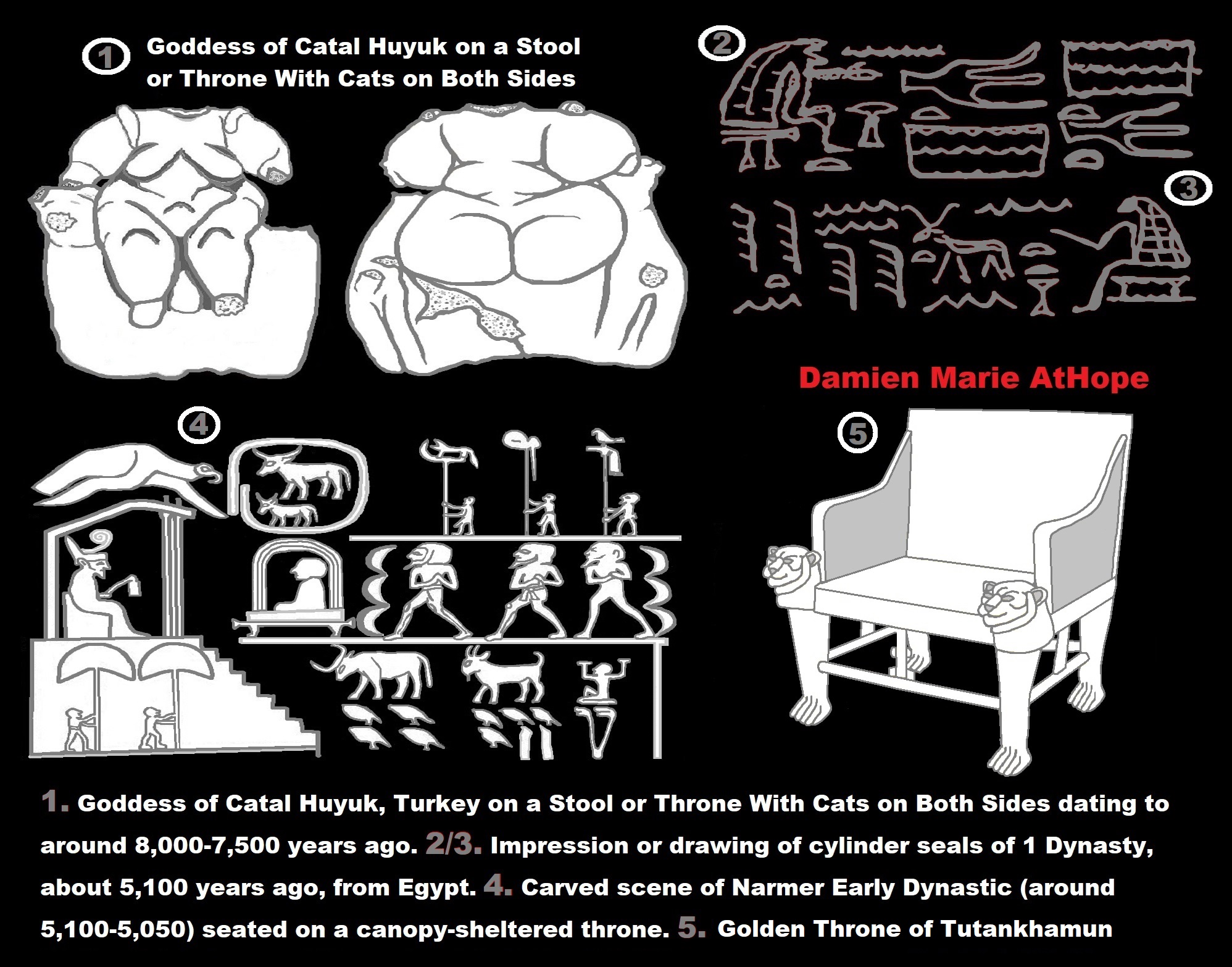
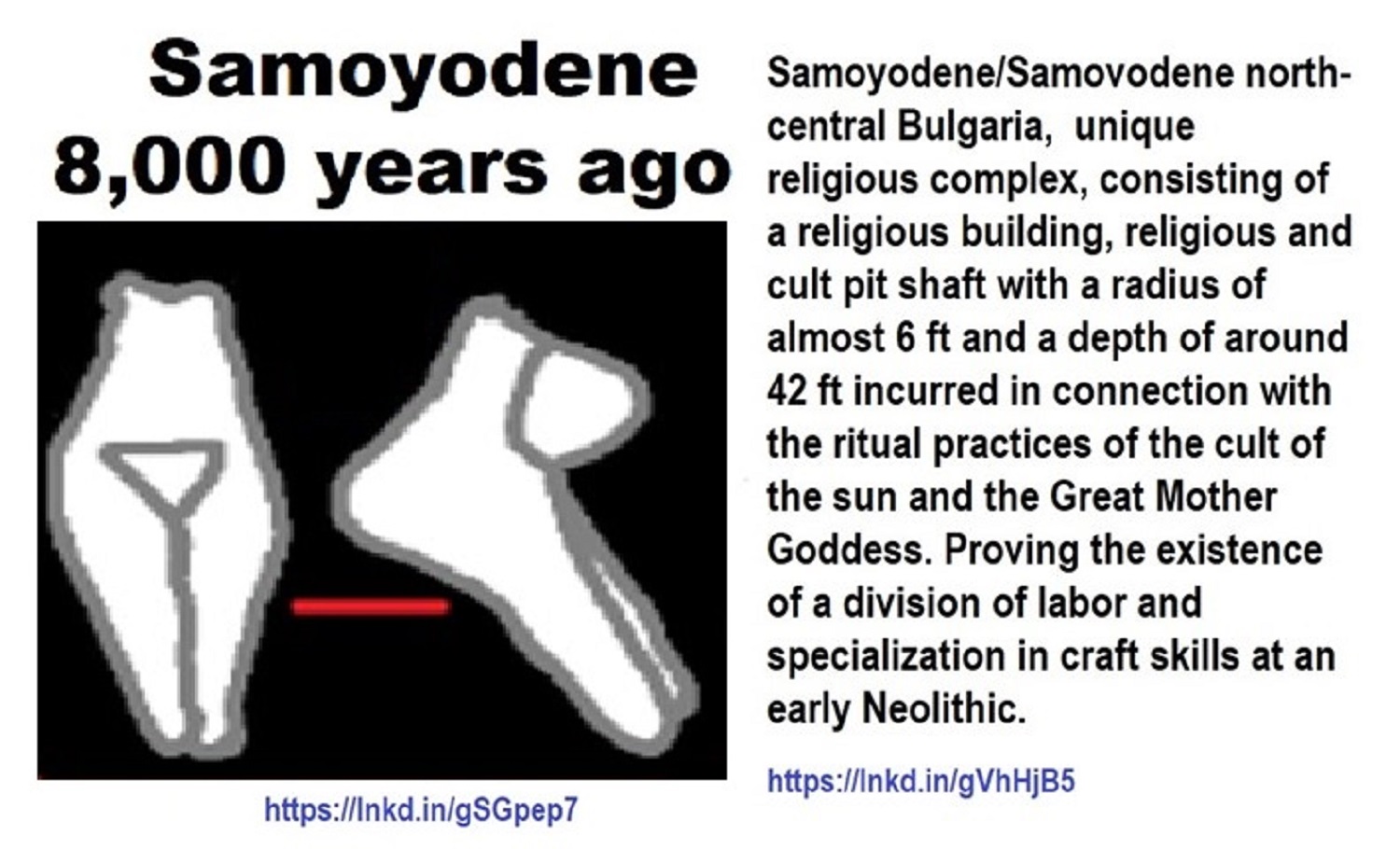
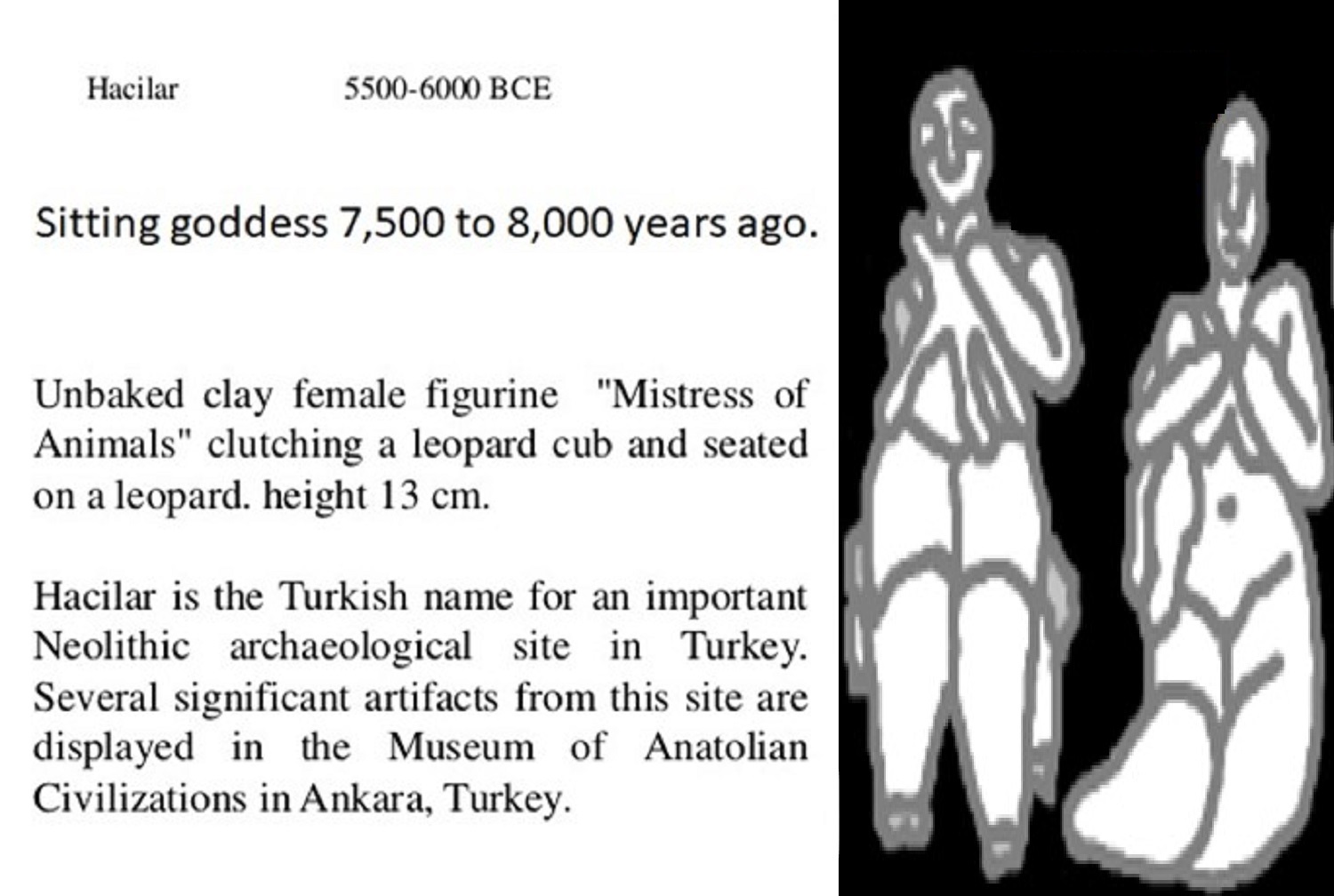
picture link: ref
Hacilar is an early human settlement in southwestern Turkey. Ceramics from Hacilar show similarities with those of the Halaf culture from about the same period. There are also similarities in their figurines. ref
The origins of Europe’s first farmers: The role of Hacılar and Western Anatolia. Discoveries in Western Anatolia have shed new light on the origins of Europe’s first farmers. Early Neolithic communities in Greece and the Balkans shared a common ancestry in Western Anatolia at the site of Hacilar from Turkey and this link provides a more complex and accurate picture of the spread of farming to Southeast Europe. There could be three chrono-geographical horizons (two definites, one tentative), each characterized by a different Neolithic ‘package’. Repeated migrations from the Central Anatolian plateau, and further on from the Levant, probably spread farming to Europe in the second half of the after 9,000 years ago. ref
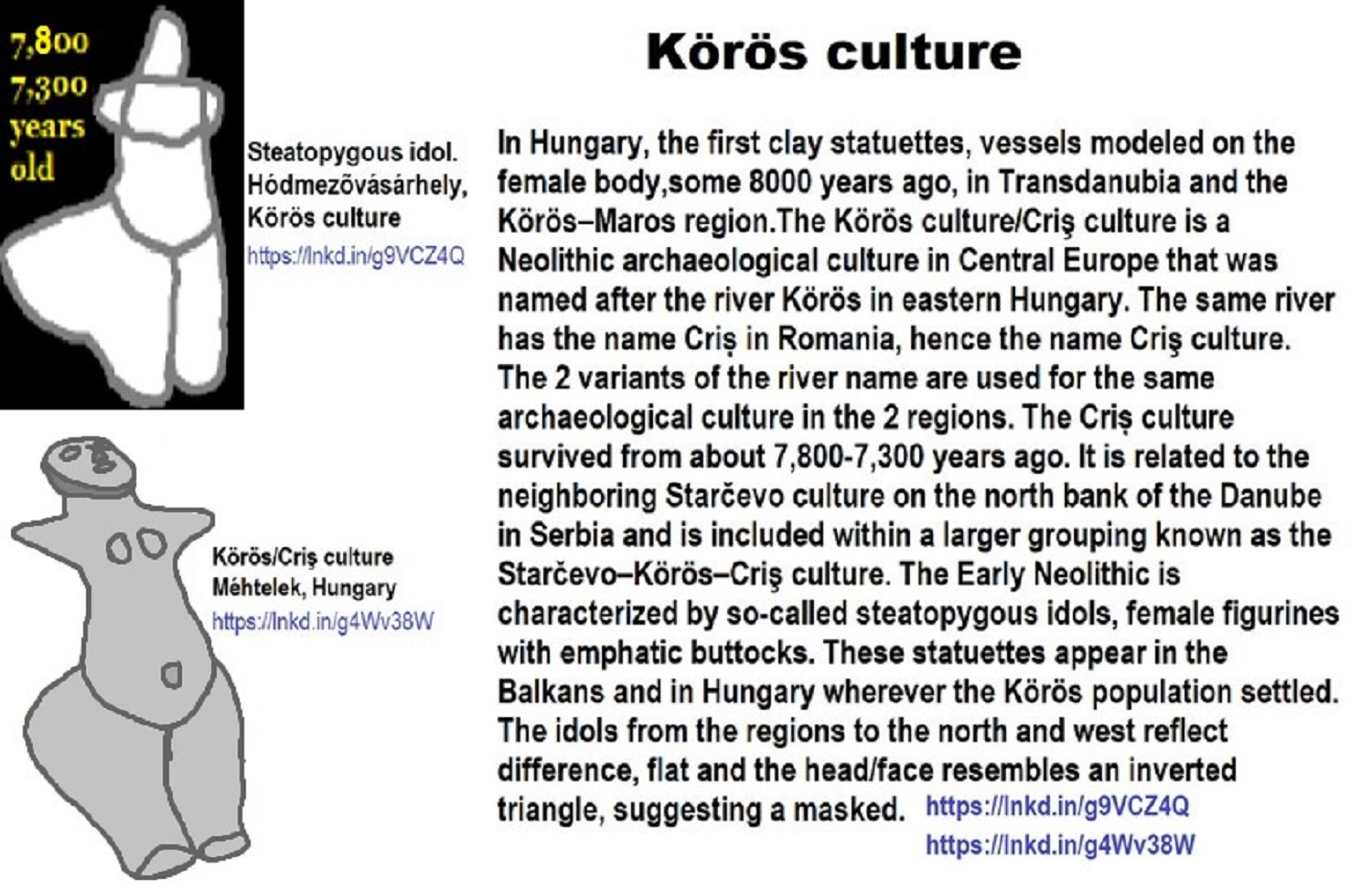
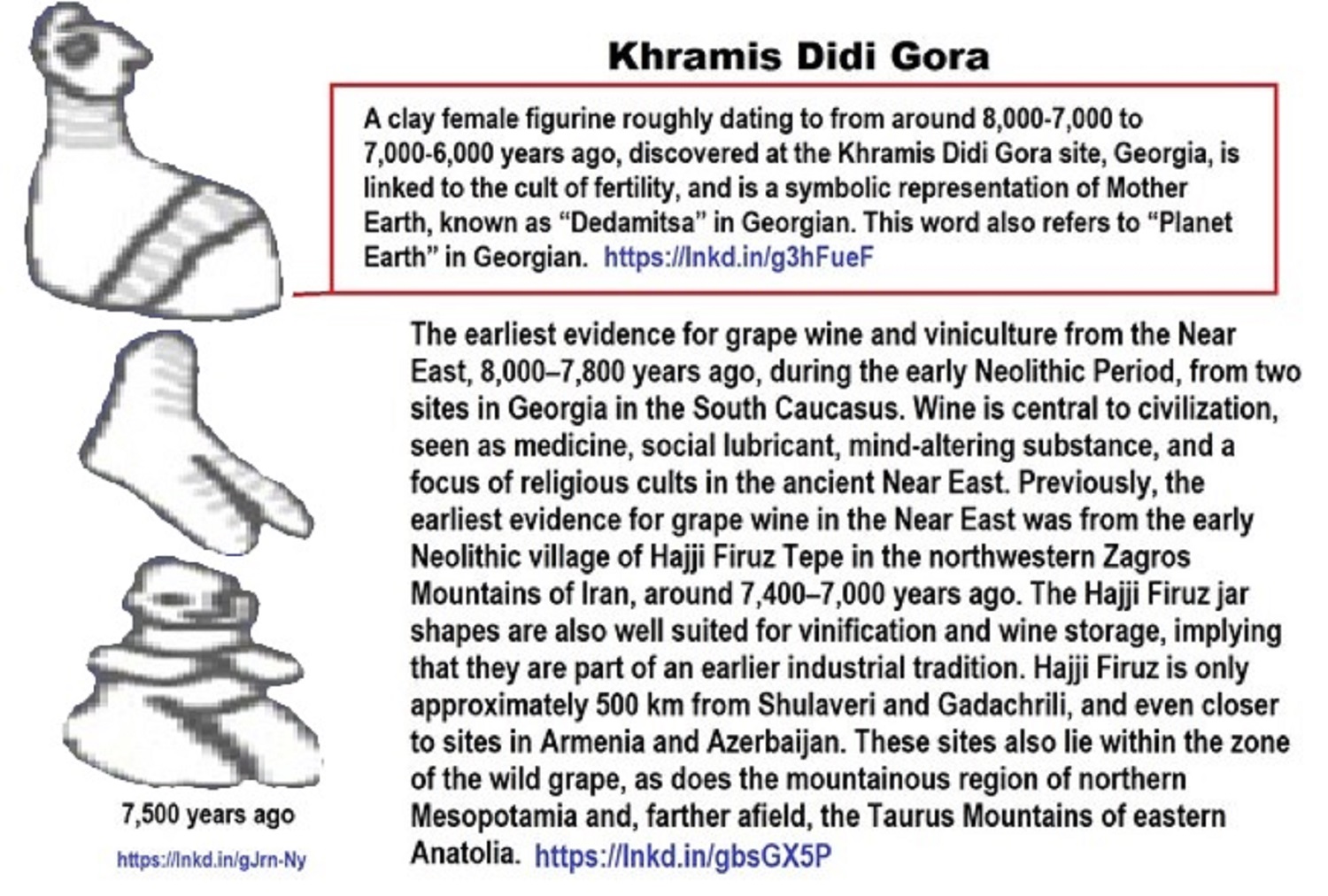
“At Khramis Didi Gora, wine found at Stone Age sites in Georgia. Scientists say the oldest evidence of winemaking to date has been found at an archeological site in Georgia from the end of the Stone Age. Residues found in six jars at two ancient village sites dating back to between 5400-5000 BCE or 7,420-7,020 years ago show the chemical signature of wine, reports a team led by researchers at the University of Pennsylvania, the Georgian National Museum, and the University of Toronto. That makes it 600 to 1,000 years older than evidence of winemaking found in the Zagros Mountains of Iran that had previously been the oldest. (Although evidence of a “grog” made of fermented grapes, Hawthorne berries, honey, and rice beer has been found in Jiahu, China, from as far back as 7000 BCE or around 9,020 years ago.)” ref
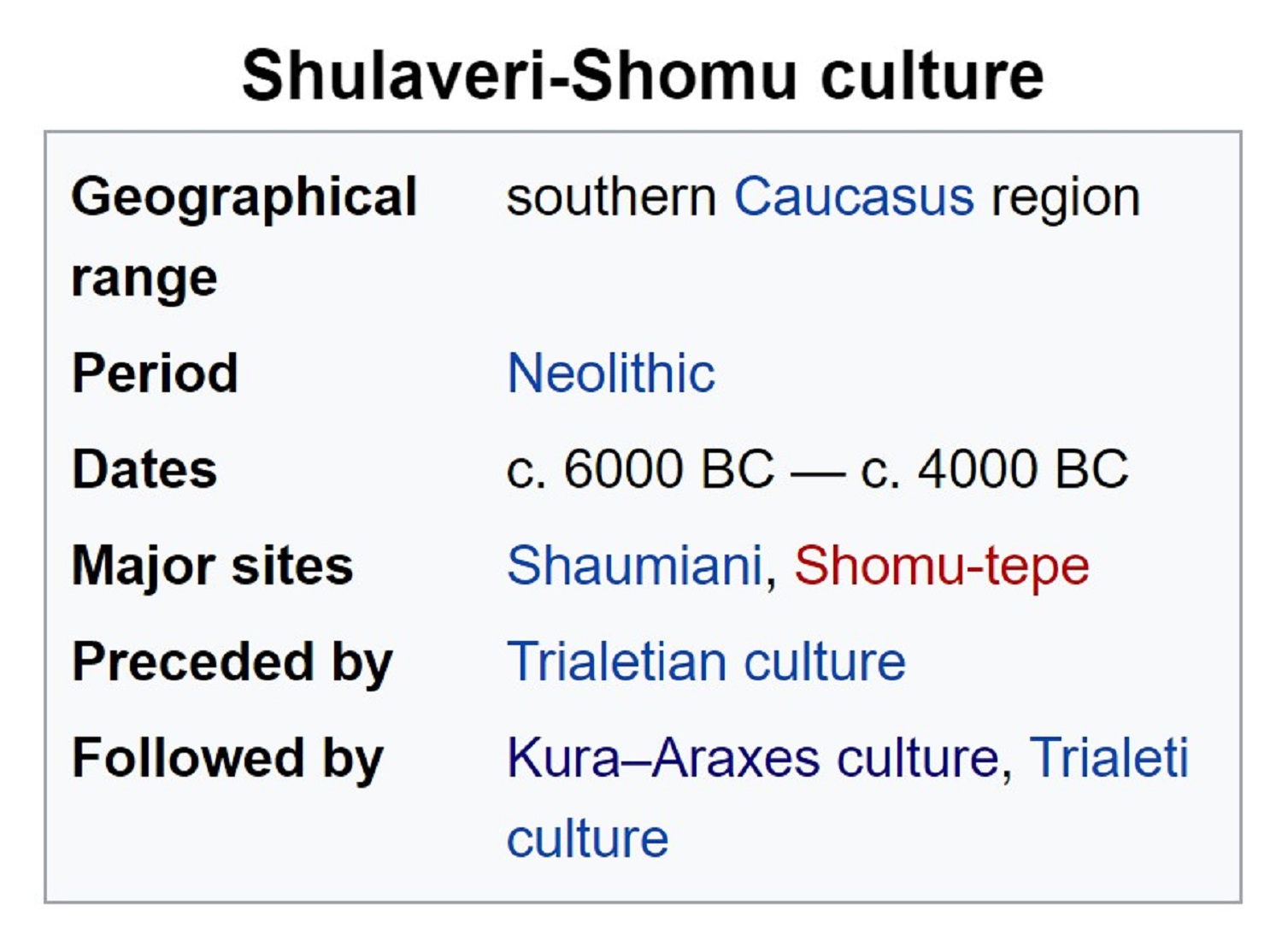
Shulaveri-Shomu culture
“Shulaveri-Shomu culture is a Late Neolithic/Eneolithic culture that existed on the territory of present-day Georgia, Azerbaijan, and Armenia, as well as parts of northern Iran. The culture is dated to the mid-6th or the early-5th millennium BCE 7,520-6,820 years ago and is thought to be one of the earliest known Neolithic cultures. Shulaveri-Shomu culture covers the 6th-5th millennia BC. According to the material culture examples found in the sites depict that the main activities of the population were farming and breeding. Shulaveri culture predates the Kura-Araxes culture which flourished in this area around 4000–2200 BCE. Later on, in the middle Bronze Age period (c. 3000–1500 BCE), the Trialeti culture emerged. Sioni culture of Eastern Georgia possibly represents a transition from the Shulaveri to the Kura-Arax cultural complex.” ref
“Building mud-brick circular, oval and semi-oval architecture is typical for this culture. The buildings were in different sizes based on their aim of use. The larger ones with diameters ranging from 2 to 5 m. were used as living areas, while smaller buildings were used as storage (1-2 m diameter). They were researched well during the digging at Shomutepe in Azerbaijan and Shulaveri in Georgia. Especially in recent years as a result of archaeological research in the area of Goytepe, the Shulaveri-Shomutepe culture has been identified as belonging to the 7th millennium BCE and the second half of the 6th millennium. Although Shulaveri-Shomutepe complex firstly was attributed to the Eneolithic era, it is now considered as a material and cultural example of the Neolithic era except the upper layers where metal objects have been discovered as in Khramis Didi-Gora and Arucho I.” ref
“Sulaveri-Shomu culture is distinguished by circular mud-brick architectures, domestic animals breeding and cultivating cereals. Handmade pottery with engraved decorations, blades, burins, and scrapers made of obsidian, tools made of bone and antler, besides rare examples of metal items, remains of plant, such as wheat, pips, barley, and grape, as well as animal bones (pigs, goats, dogs, and bovids) have been discovered during the excavations. Anthropomorphic figurines of mainly seated women found in the sites represent the items used for religious purposes relating to the fertility cult. Pestles revealed in Shulaveri-Shomu sites were mainly made of basalt (50%), metamorphic rocks (34%), and sandstones (11 %). Territorial clay was used in the production of earthenware. Basalt and grog, later plant materials were used as temper in pottery.” ref
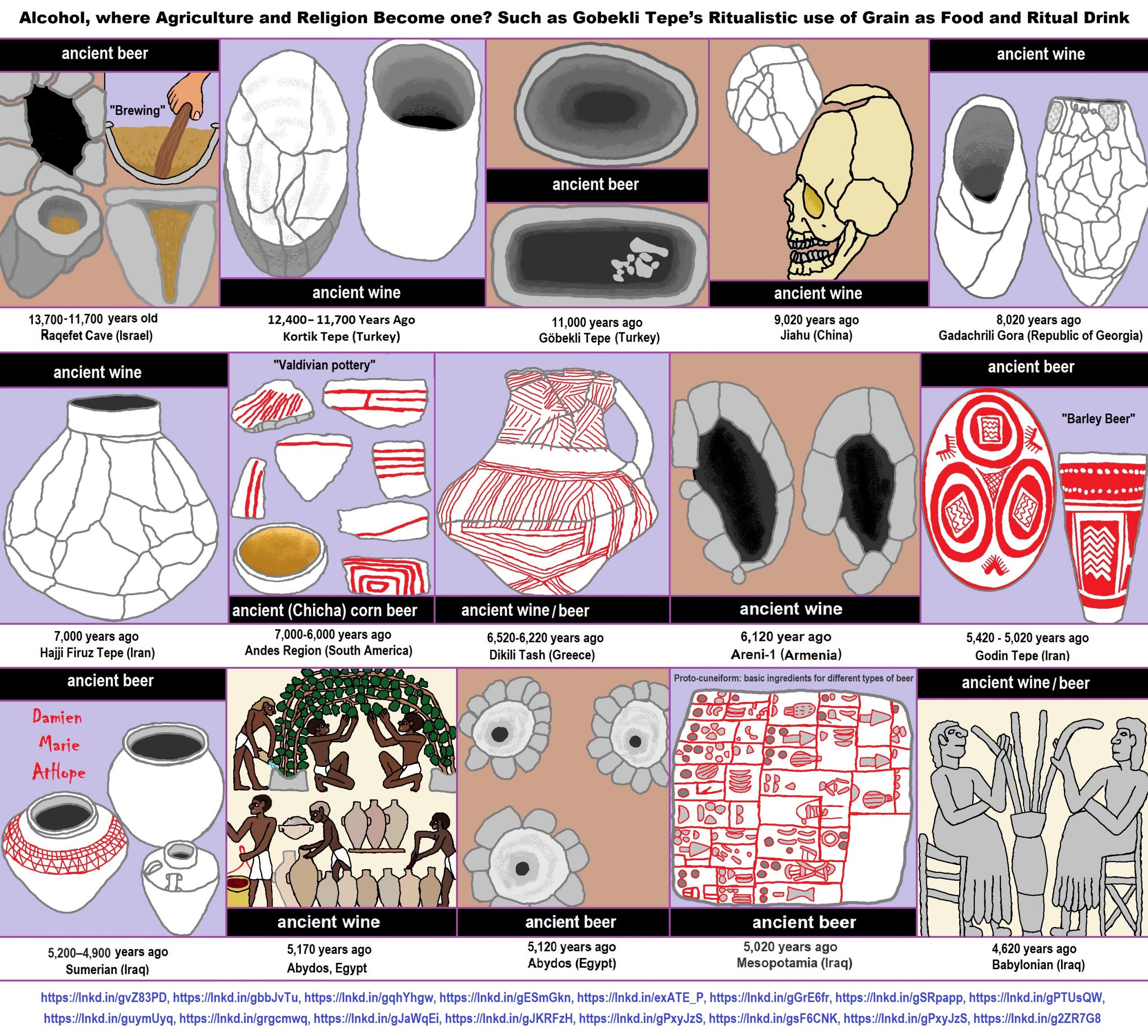
ref, ref, ref, ref, ref, ref, ref, ref, ref, ref, ref, ref, ref, ref, ref
Raqefet Cave
13,000-year-old stone mortars offers the earliest known physical evidence of an extensive ancient beer-brewing operation.
“The find comes on the heels of a July report that archaeologists working in northeastern Jordan discovered the charred remains of bread baked by Natufians some 11,600 to 14,600 years ago. According to the Stanford scientists, the ancient beer residue comes from 11,700 to 13,700 years old. Through laboratory analysis, other archaeological evidence found in the cave, and the wear of the stones, the team discovered that the ancient Natufians used species from seven plant families, “including wheat or barley, oat, legumes and bast fibers (including flax),” according to the article. “They packed plant-foods, including malted wheat/barley, in fiber-made containers and stored them in boulder mortars. They used bedrock mortars for pounding and cooking plant-foods, including brewing wheat/barley-based beer likely served in ritual feasts ca. 13,000 years ago,” the scientists write. “It has long been speculated that the thirst for beer may have been the stimulus behind cereal domestication, which led to a major social-technological change in human history; but this hypothesis has been highly controversial,” the Stanford authors say. “We report here of the earliest archaeological evidence for cereal-based beer brewing by a semi-sedentary, foraging people.” ref
“Beer making was an integral part of rituals and feasting, a social regulatory mechanism in hierarchical societies,” said Stanford’s Wang. The Raqefet Cave discovery of the first man-made alcohol production, the cave also provides one of the earliest pieces of evidence of the use of flower beds on gravesites, discovered under human skeletons. “The Natufian remains in Raqefet Cave never stop surprising us,” co-author Prof. Dani Nadel, of the University of Haifa’s Zinman Institute of Archaeology, said in a press release. “We exposed a Natufian burial area with about 30 individuals, a wealth of small finds such as flint tools, animal bones and ground stone implements, and about 100 stone mortars and cupmarks. Some of the skeletons are well-preserved and provided direct dates and even human DNA, and we have evidence for flower burials and wakes by the graves.” ref
“And now, with the production of beer, the Raqefet Cave remains provide a very vivid and colorful picture of Natufian lifeways, their technological capabilities, and inventions,” he said. Stanford’s Liu posited that the beer production was of a religious nature because its production was found near a graveyard. “This discovery indicates that making alcohol was not necessarily a result of agricultural surplus production, but it was developed for ritual purposes and spiritual needs, at least to some extent, prior to agriculture,” she said. “Alcohol making and food storage were among the major technological innovations that eventually led to the development of civilizations in the world, and archaeological science is a powerful means to help reveal their origins and decode their contents,” said Liu. “We are excited to have the opportunity to present our findings, which shed new light on a deeper history of human society.” ref
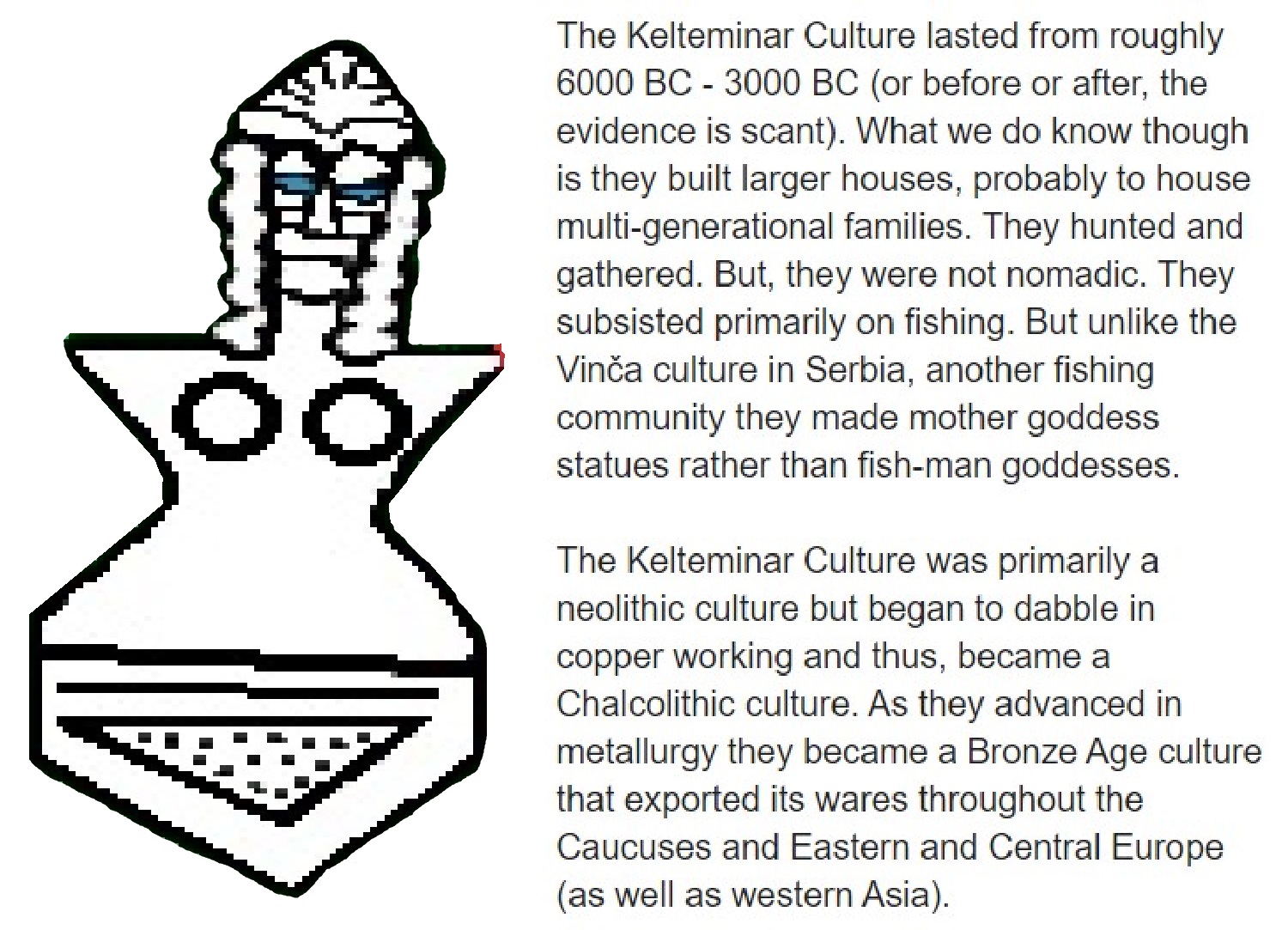
Kelteminar culture
“The Kelteminar culture (5500–3500 BCE) was a Neolithic archaeological culture of sedentary fishermen occupying the semi-desert and desert areas of the Karakum and Kyzyl Kum deserts and the deltas of the Amu Darya and Zeravshan rivers in the territories of ancient Kazakhstan, Turkmenistan, and Uzbekistan. The Kelteminar culture was replaced by the Tazabagyab culture. The Kelteminar people practiced a mobile hunting, gathering, and fishing subsistence system. Over time, they adopted stockbreeding. With the Late Glacial warming, up to the Atlantic Phase of the Post-Glacial Optimum, Mesolithic groups moved north into this area from the Hissar (6000–4000 BCE). These groups brought with them the bow and arrow and the dog, elements of what Kent Flannery has called the “broad-spectrum revolution”. Russian scientists hold that Kelteminar culture is related to the Pit–Comb Ware culture and belongs to the Finno-Ugric peoples. The Kelteminar people lived in huge houses (size 24m x 17m and height 10m), which housed the whole tribal community of about 100-120 people. They adorned themselves with beads made of shells. They manufactured stone axes and miniature trapezoidal flint arrowheads. For cooking, they used clay vessels produced without the potter’s wheel. The Kelteminar economy was based on sedentary fishing and hunting.” ref
The Kelteminar & Botai Cultures
“Kazakhstan is another European nation that has received too little attention on both the blog and the podcast. For this reason, we’re going to step back into the prehistoric and look at two of the earliest modern human cultures to grace this country which is the largest land-locked country in the world. But, before we get into these cultures we might want to explain why Kazakhstan is European. Other than human ancestors it seems the earliest people to inhabit Kazakhstan was the Kelteminar Culture. Confusingly, in light of the preceding paragraph, the Kelteminar Culture was a sedentary culture of fishermen that settled around the Aral Sea in modern Kazakhstan, Uzbekistan, and Turkmenistan.” ref
“Kazakhstan is largely populated by Kazakh people, one of the many Turkic descendants in the Eurasian world. But I’ve decided to include Kazakhstan in our discussion of Europe over countries like its neighbors Uzbekistan and Turkmenistan for more reasons than they happen to be a bit further west. One reason we’ve included Kazakhstan is because of its association with the Russian Empire and the Soviet Union. Of course, both Uzbekistan and Turkmenistan were part of the Soviet Empire, but not nearly as many European ethnic people were forcefully moved east into Uzbekistan and Turkmenistan as they were to Kazakhstan. Another reason for the inclusion is their link to the more ancient Turkish nomadic group of Cuman people who we mentioned in our post on Transnistria. Again, Cumania had stretched into the other countries but not isn’t as deeply rooted. The reason for the importance of the Cuman people is that they influenced more western places like Bulgaria, Moldova, and Ukraine. But the primary reason we’ve chosen to include Kazakhstan is because a lot of lists of European countries include them and we’re just trying to cover as much European history as possible so we’ll throw them in there for good measure.” ref
“The Kelteminar Culture lasted from roughly 6000 – 3000 BCE (or before or after, the evidence is scant). What we do know though is they built larger houses, probably to house multi-generational families. They hunted and gathered. But, they were not nomadic. They subsisted primarily on fishing. But unlike the Vinča culture in Serbia, another fishing community they made mother goddess statues rather than fish-man goddesses. The Kelteminar Culture was primarily a neolithic culture but began to dabble in copper working and thus, became a Chalcolithic culture. As they advanced in metallurgy they became a Bronze Age culture that exported its wares throughout the Caucuses and Eastern and Central Europe (as well as western Asia).” ref
“The Kelteminar Culture left its legacy in a number of subsequent Bronze Age cultures. The subsequent Zamin-Babis tribes took the Kelteminar Culture, evolved it, and moved eastward into Asia. This is sometimes referred to as the Suyargan Culture that came into existence around 2000 BCE. The Suyargan Culture was a small part of the Bactria-Margiana Archeological Complex that stretched into Asia so we won’t cover it much. But, the BMAC for short was a pretty technologically advanced Bronze Age amalgamation of various cultures in the region. We won’t go into it much but the BMAC was a bit of an interlocutor between European civilizations and other eastern civilizations with artifacts traveling through its territory from Europe to the Indus Valley and back the other way. Not our normal sphere of topic but interesting nonetheless.” ref
“Ancient Kazakhstan is one of the places in the Eurasian region where horsemanship first laid down its roots. One of the earliest cultures to ride horses in the region was the Botai Culture that lasted from around 3700-3100 BCE. The Botai and the Kelteminar are connected through a cultural interchange of sorts, each influencing the other. The Botai were primarily agricultural compared to the Kelteminar’s seafood preference. What makes the Botai especially unique is their use of domesticated horses. While they may not have been the first to break the wild horses of the Eurasian steppe, their use of domesticated horses as far back as 3500 BCE makes them a prime candidate for ‘first’ status on this issue. Incredibly, some of the horse riding equipment first developed by the Botai is remarkably similar to the equipment used today, see the pictures of the boots to the left. The Botai domestication of horses marked a huge step in the advancement of human culture. For this reason alone, the Botai, and Kazakhstan, in general, have had a major impact on the development of Europe.” ref

Birdmen of Koutroulou Magoula
“Archaeologists have uncovered more than 300 clay figurines depicting male and female forms, as well as human-bird hybrids, at Koutroulou Magoula, a Neolithic settlement in central Greece. Ranging from 3-4cm to 10-12cm in length (about 1-4.5in), the models were scattered all over the 4ha site (nearly 10 acres), with some recovered from the foundations of houses, and others found around hearths and in post-holes. ‘The techniques of making the figurines vary, but a common method involves a clay core, around which the rest of the body is built. ‘The range of imagery is very varied, including male and female figures, some with no indication of gender, and also bird-human hybrids, some of which have a kind of four-legged base.’” ref
“Lying about 260km (160 miles) north of Athens, the site was occupied between c.5800-5300 BCE and comprises a 5.5m (18ft) tell with at least three terraces surrounded by concentric ditches. It was inhabited by a community of a few hundred farmers living in sophisticated houses that reused the same building footprint for successive generations. ‘This type of home would normally have stone foundations with mud-brick on top, but our investigations have found buildings preserved with stone walls up to a meter in height, suggesting that the walls may have been built entirely of stone – something not typical of the period,’ said Professor Hamilakis. ‘The tell is much larger than average, and the construction of its ditches must have been a major communal effort, though to date there are no signs of a centralized authority.’” ref
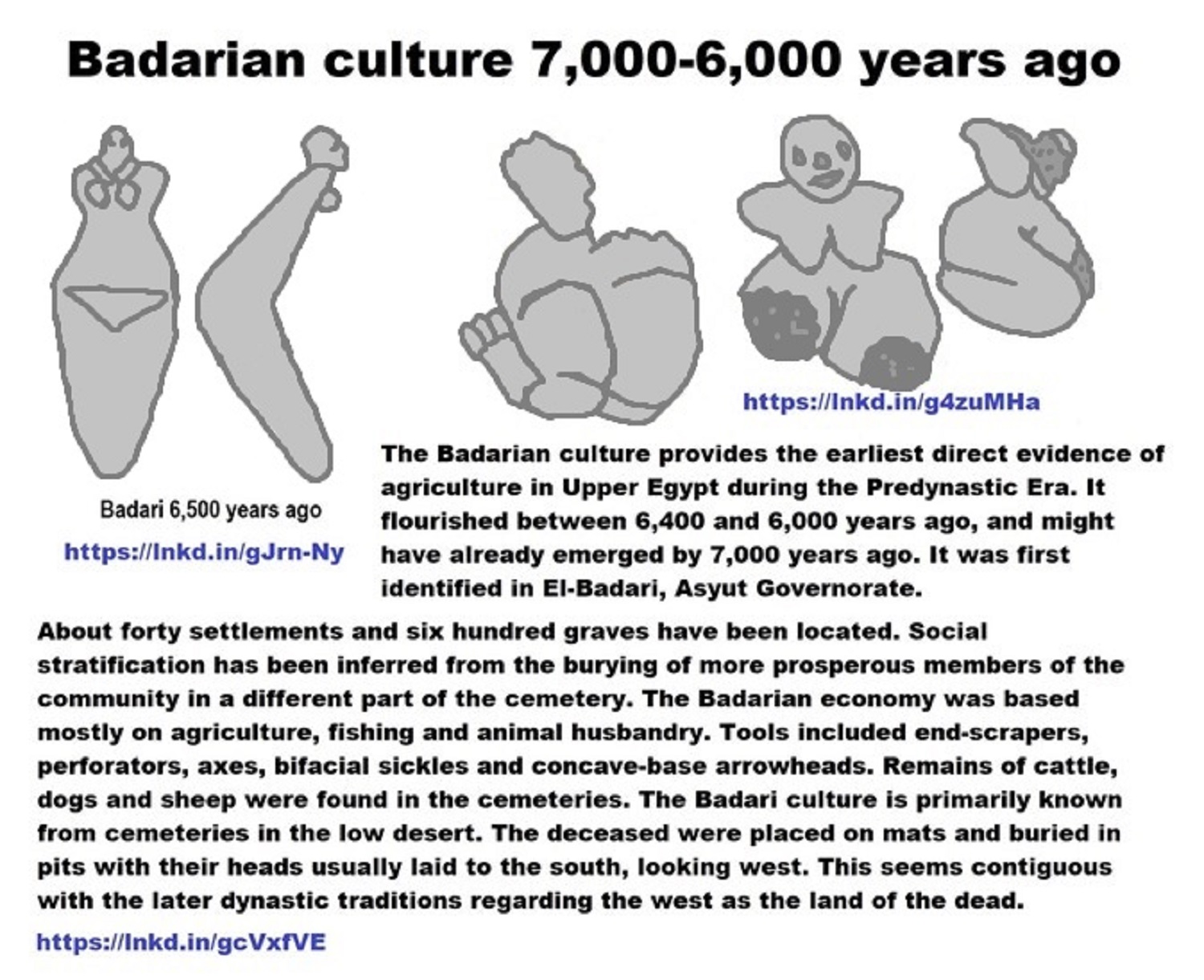
“Badarian period, social stratification a starting to emerge within mortuary sites. Grave goods became telling of status. Upper classes had fancier designed ceramics, sometimes ivory figures, more elaborate cosmetic palettes, and crafted knifes located within their burials. Middle and lower classes also had similar items, like black topped ceramic and cosmetic palettes, though they were often much less showy in design.” ref
“By the time Naqada I takes place, social stratification is much more pronounced. Grave goods founds within rich and poor graves had more striking contrast, additionally there begins to a separation between gravesites for the very wealthy and the poorer classes. Grave goods like ceramics become more impressive, with smoother edges and more precision. Additionally, new goods like ivory and bone combs, slate palettes, flaked fishtail knives, and stone tools become begin to show up in graves. Additionally, the complexity of existing goods like the cosmetic palettes increases, as can be seen with the design of the elephant carved into one. Another interesting development in the stratification of Upper Predynastic mortuary practices is the development of tombs, which are grave complexes for the more wealthy members of society.” ref
“By the time Naqada II comes around, Predynastic Upper Egypt experienced increasing social complexity with large populations and an emerging state. Additionally, the difference between the rich and poor becomes more pronounced. In Naqada II there are some graves that are clearly elite, holding specialty goods like figurines, pallets depicting boats and humans, mace heads, beads, and weapons. The level of wealth increases during this time, but along with this comes the stratification of classes. It is interesting how as society develops and becomes more complex, it is inevitable that social stratification increases.” ref
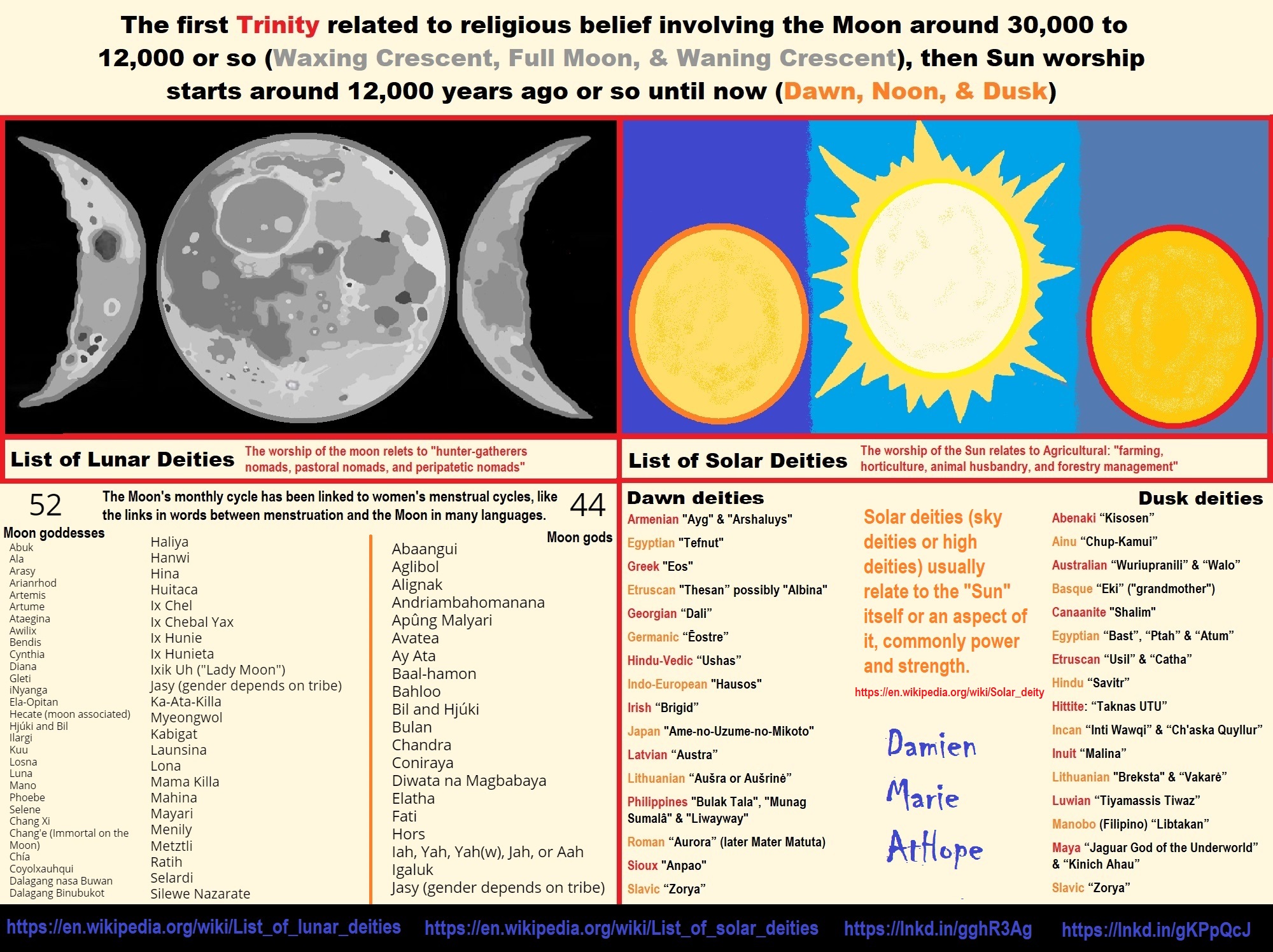

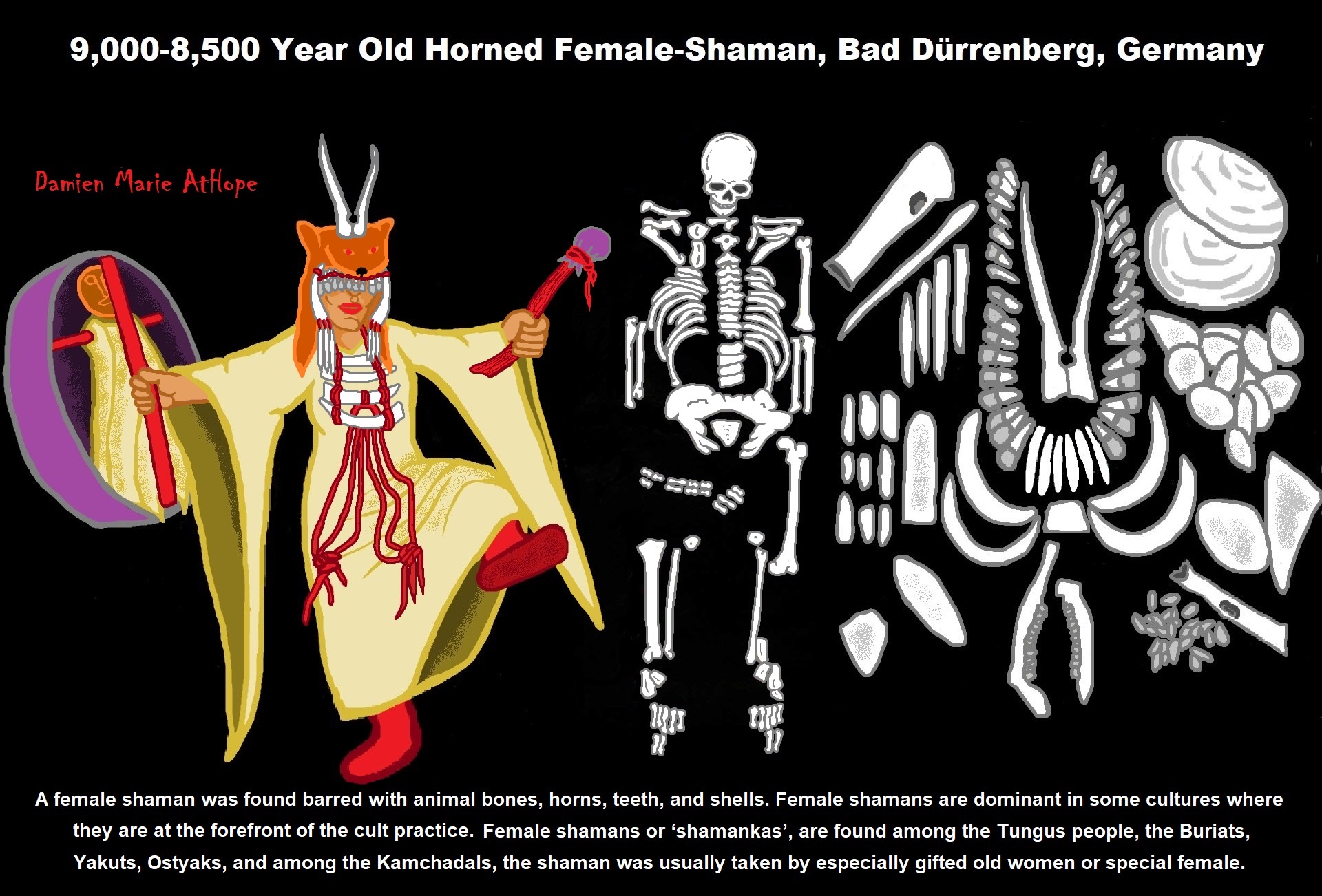
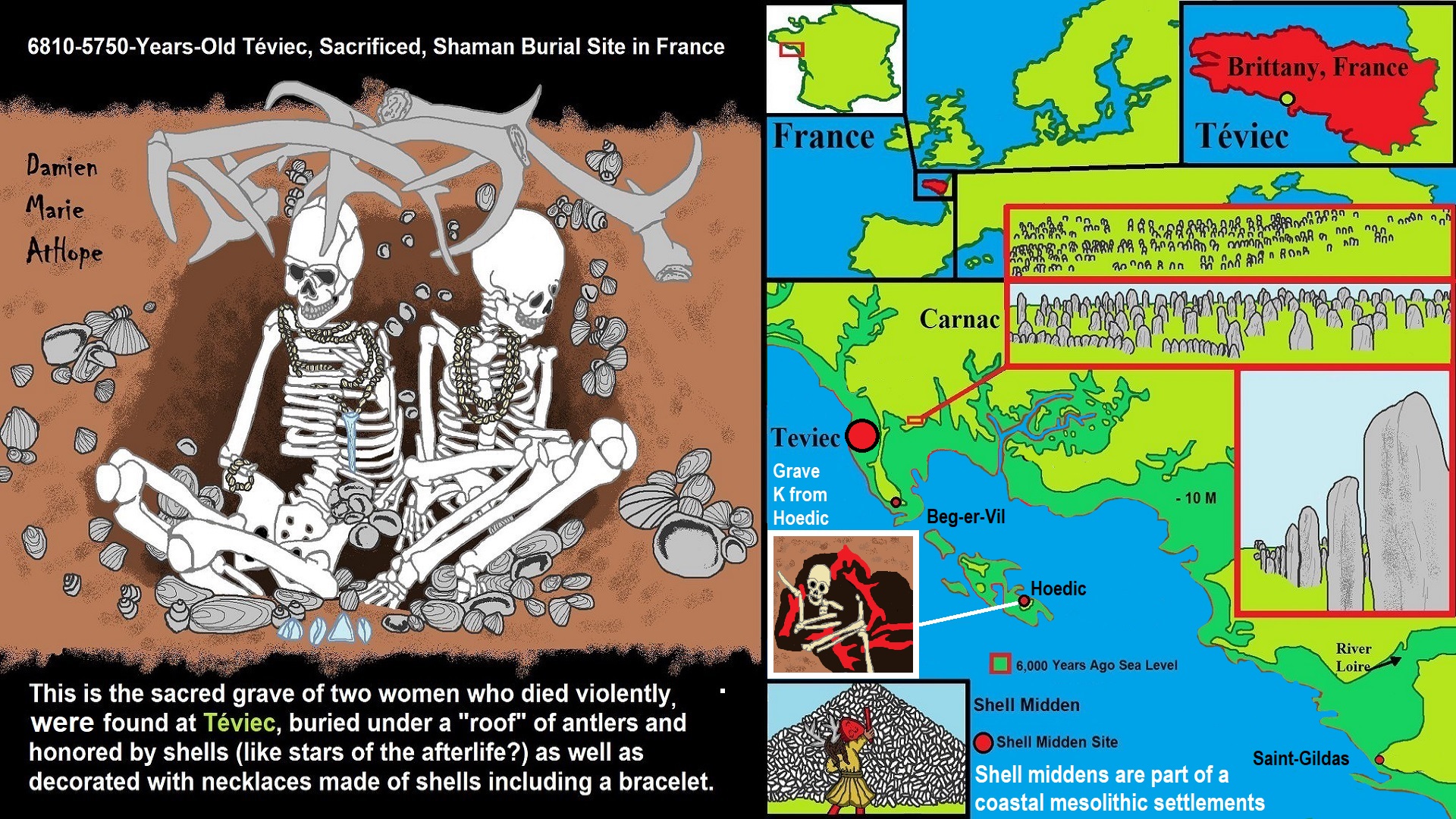

- From a Gerzeh/Naqada II Late Predynastic Egyptian palette with a goddess “Bat/Hathor” cow-head sun/stars motif.
- From a Hierakonpolis late Gerzeh/Naqada II Predynastic or early Naqada III Proto-Dynastic Egyptian porphyry fluted bowl with two reliefs on the rim, one of which was a goddess “Hathor/Bat” cow-head sun/stars motif.
- From an Abydos tomb, u-210 which held a small seal with a goddess “Bat/Hathor” sun/stars motif from the Gerzeh/Naqada II Late Predynastic Egyptian period.
- A Mongolian Copper Age bull sun/star shamanism petroglyph
- A Mongolian Bronze Age deer sun/star shamanism petroglyph symbol.
- A Kyrgyzstan Saimaly-Tash possibly Bronze Age shamanism cow-sun person symbol petroglyph.
- Similar X-ray style images among different peoples of the North from Siberia to Central Asia with shamanism petroglyphs of horned animals with sun symbols from possibly as old as the Neolithic to the Bronze Age. ref, ref, ref
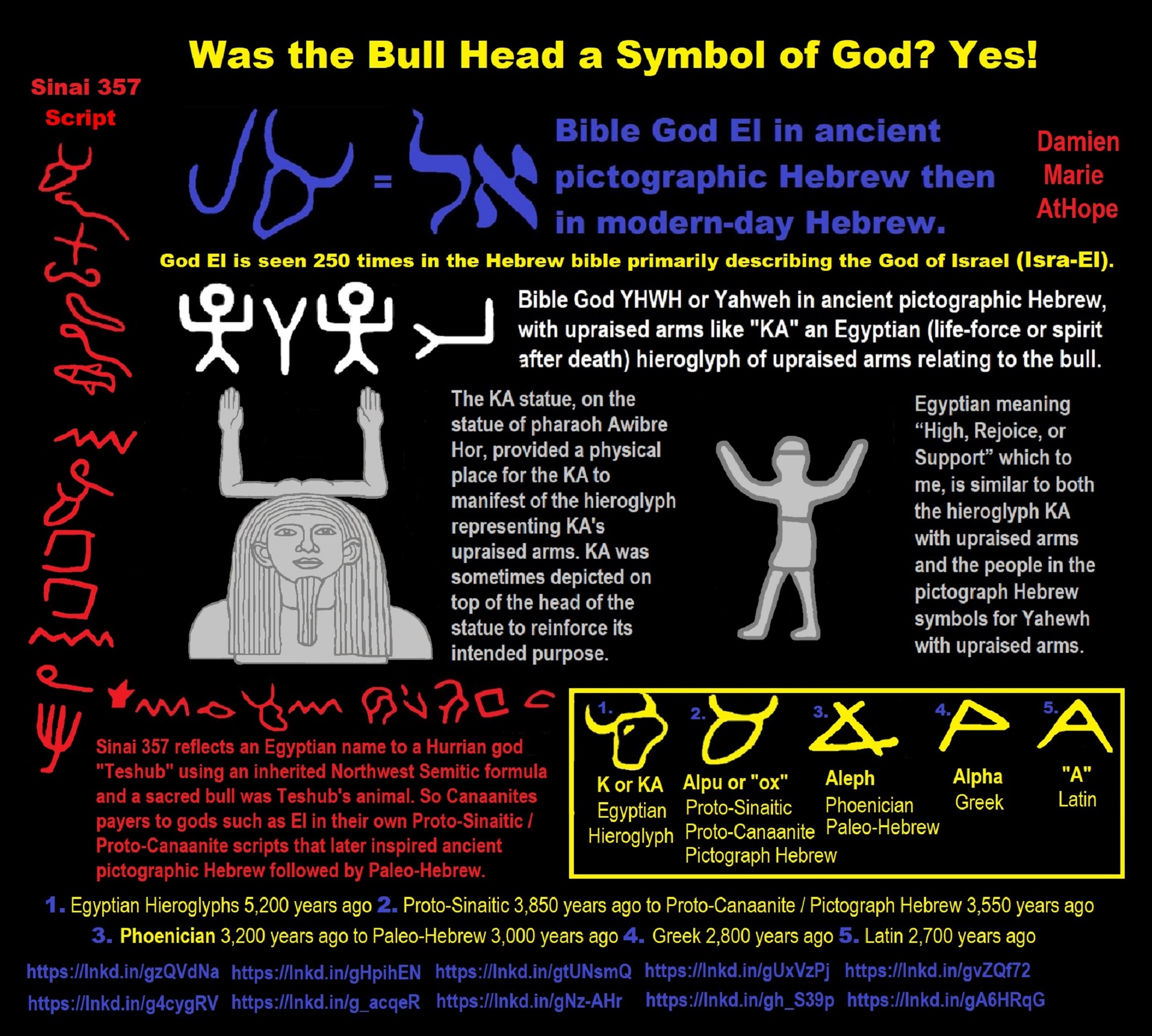

Fossils from Morocco suggest the Homo sapiens lineage became distinct as early as 350,000 years ago, adding as much as 150,000 years to our species’ history, as before it was assumed our Human line emerged around 200,000 years ago. ref
Pre-Animism Emergence is No Accident at Least by 300,000-year Ago Was Aided by Evolution
Pre-Animism: “animistic superstitionism”, I surmise, leads to the animistic somethingism, or animistic supernatralism is presented in today’s religions and is a representation of general Animism that is at least 100,000 years old. ref
The Blue on the outside references the size difference to modern human brains and the inside to illustrate regions with surface size increase associated with this gradual shape changes. ref
300,000-year-old Moroccan, North African skulls look shockingly that of Modern Humans and these skulls hold a combination of advanced and archaic features suggesting that these skulls may represent the very root of our Modern Human species. This is further supported in how all Homo sapiens ever found even far beyond Africa trace their ancestral linkages to the Moroccan, North African skulls or at least point as it where in that direction. And seemingly Homo sapiens could have been living across Africa and sem9ingly engaging in extensive movement, which could have involved exchange both in ideas, technology as well as even genetics. ref
300,000-year-old wolf tooth pendant from Repolust Cave, Austria. ref
Around a million years ago, I surmise that Pre-Animism, “animistic superstitionism”, began, Around 400,000 Years ago shows Sociocultural Evolution, and then led to the animistic somethingism or animistic supernaturalism, which is at least 300,000 years old and about 100,00 years ago, it evolves to a representation of general Animism, which is present in today’s religions. There is also Homo Naledi and an Intentional Cemetery “Pre-Animism” dating to around 250,000 years ago. And, Neanderthals “Primal Religion (Pre-Animism/Animism?)” Mystery Cave Rings 175,000 Years Ago. Neanderthals were the first humans to intentionally bury the dead, around 130,000 years ago at sites such as Krapina in Croatia.
Pre-animism ideas can be seen in rock art such as that expressed in portable anthropomorphic art, which may be related to some kind of ancestor veneration. This magical thinking may stem from a social or non-religious function of ancestor veneration, which cultivates kinship values such as filial piety, family loyalty, and continuity of the family lineage. Ancestor veneration occurs in societies with every degree of social, political, and technological complexity and it remains an important component of various religious practices in modern times.
Humans are not the only species, which bury their dead. The practice has been observed in chimpanzees, elephants, and possibly dogs. Intentional burial, particularly with grave goods, signify a “concern for the dead” and Neanderthals were the first human species to practice burial behavior and intentionally bury their dead, doing so in shallow graves along with stone tools and animal bones. Exemplary sites include Shanidar in Iraq, Kebara Cave in Israel and Krapina in Croatia. The earliest undisputed human burial dates back 100,000 years ago with remains stained with red ochre, which show ritual intentionality similar to the Neanderthals before them. ref, ref
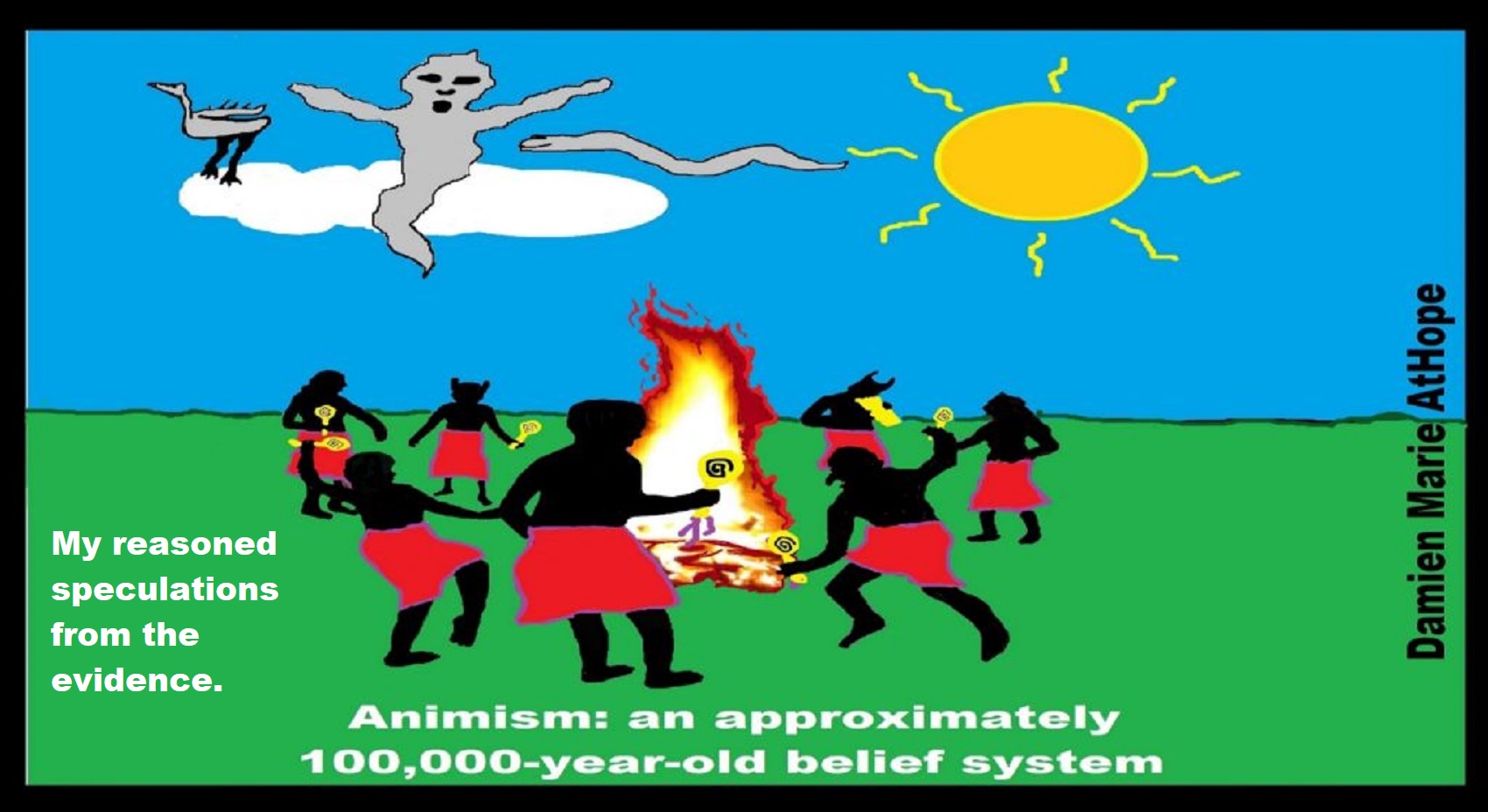
Animism (such as that seen in Africa: 100,000 years ago)
Did Neanderthals teach us “Primal Religion (Pre-Animism/Animism?)” 120,000 Years Ago? Homo sapiens – is known to have reached the Levant between 120,000 and 90,000 years ago, but that exit from Africa evidently went extinct. 100,000 years ago, in Qafzeh, Israel, the oldest intentional burial had 15 African individuals covered in red ocher was from a group who visited and returned back to Africa. 100,000 to 74,000 years ago, at Border Cave in Africa, an intentional burial of an infant with red ochre and a shell ornament, which may have possible connections to the Africans buried in Qafzeh.
Animism is approximately a 100,000-year-old belief system and believe in spirit-filled life and/or afterlife. If you believe like this, regardless of your faith, you are a hidden animist.
The following is evidence of Animism: 100,000 years ago, in Qafzeh, Israel, the oldest intentional burial had 15 African individuals covered in red ocher was from a group who visited and returned back to Africa. 100,000 to 74,000 years ago, at Border Cave in Africa, an intentional burial of an infant with red ochre and a shell ornament, which may have possible connections to the Africans buried in Qafzeh, Israel. 120,000 years ago, did Neanderthals teach us Primal Religion (Pre-Animism/Animism) as they too used red ocher and burials? ref, ref
It seems to me, it may be the Neanderthals who may have transmitted a “Primal Religion (Animism)” or at least burial and thoughts of an afterlife. The Neanderthals seem to express what could be perceived as a Primal “type of” Religion, which could have come first and is supported in how 250,000 years ago, the Neanderthals used red ochre and 230,000 years ago shows evidence of Neanderthal burial with grave goods and possibly a belief in the afterlife. ref
Do you think it is crazy that the Neanderthals may have transmitted a “Primal Religion”? Consider this, it appears that 175,000 years ago, the Neanderthals built mysterious underground circles with broken off stalactites. This evidence suggests that the Neanderthals were the first humans to intentionally bury the dead, doing so in shallow graves along with stone tools and animal bones. Exemplary sites include Shanidar in Iraq, Kebara Cave in Israel and Krapina in Croatia. Other evidence may suggest the Neanderthals had it transmitted to them by Homo heidelbergensis, 350,000 years ago, by their earliest burial in a shaft pit grave in a cave that had a pink stone axe on the top of 27 Homo heidelbergensis individuals and 250,000 years ago, Homo naledi had an intentional cemetery in South Africa cave. ref, ref, ref, ref, ref
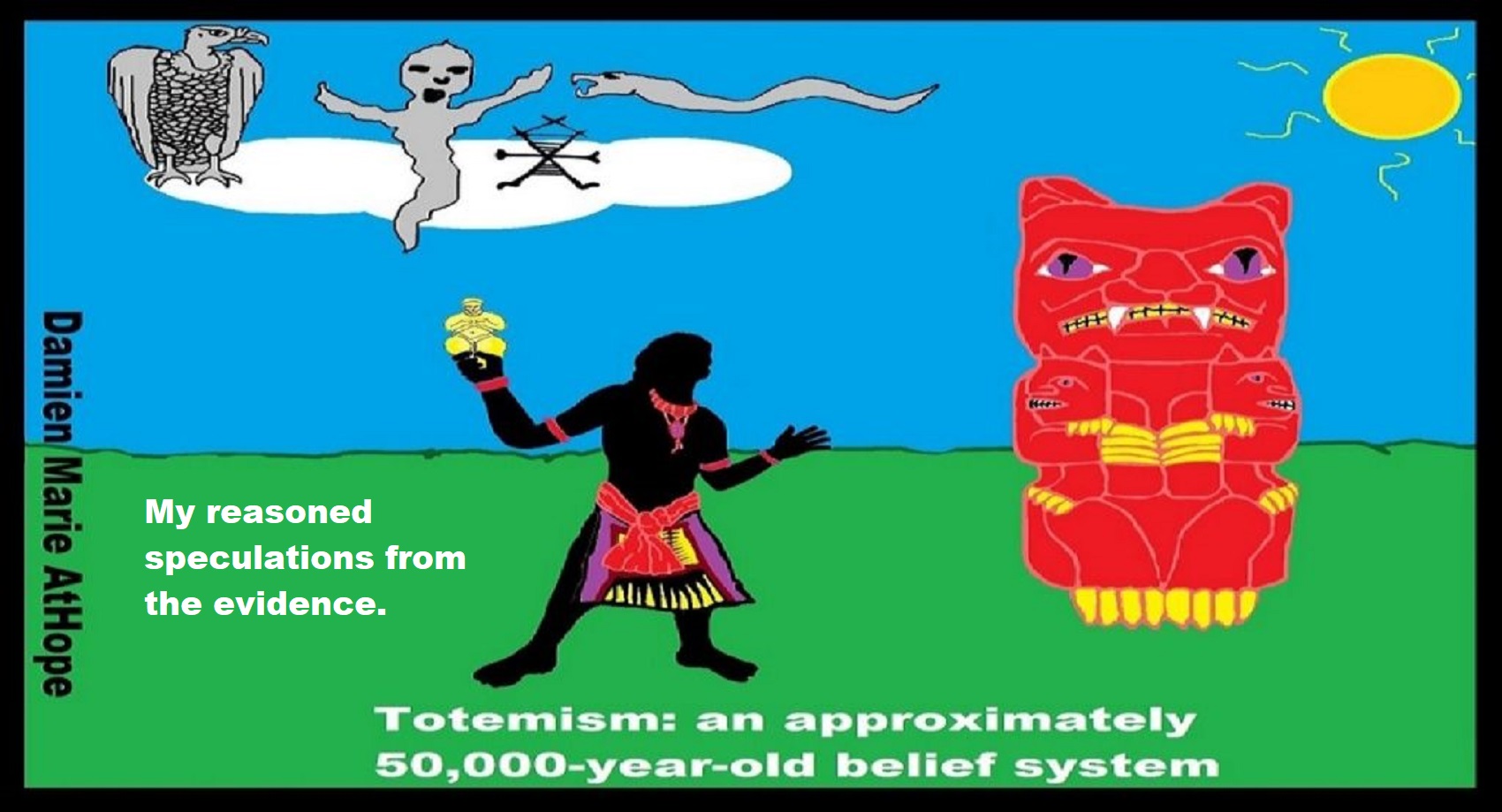
Totemism (Europe: 50,000 years ago)
Did Neanderthals Help Inspire Totemism? Because there is Art Dating to Around 65,000 Years Ago in Spain? Totemism as seen in Europe: 50,000 years ago, mainly the Aurignacian culture. Pre-Aurignacian “Châtelperronian” (Western Europe, mainly Spain and France, possible transitional/cultural diffusion between Neanderthals and Humans around 50,000-40,000 years ago). Archaic–Aurignacian/Proto-Aurignacian Humans (Europe around 46,000-35,000). And Aurignacian “classical/early to late” Humans (Europe and other areas around 38,000 – 26,000 years ago).
Totemism is approximately a 50,000-year-old belief system and believe in spirit-filled life and/or afterlife that can be attached to or be expressed in things or objects. If you believe like this, regardless of your faith, you are a hidden totemist.
Toetmism may be older as there is evidence of what looks like a Stone Snake in South Africa, which may be the “first human worship” dating to around 70,000 years ago. Many archaeologists propose that societies from 70,000 to 50,000 years ago such as that of the Neanderthals may also have practiced the earliest form of totemism or animal worship in addition to their presumably religious burial of the dead. Did Neanderthals help inspire Totemism? There is Neanderthals art dating to around 65,000 years ago in Spain. ref, ref
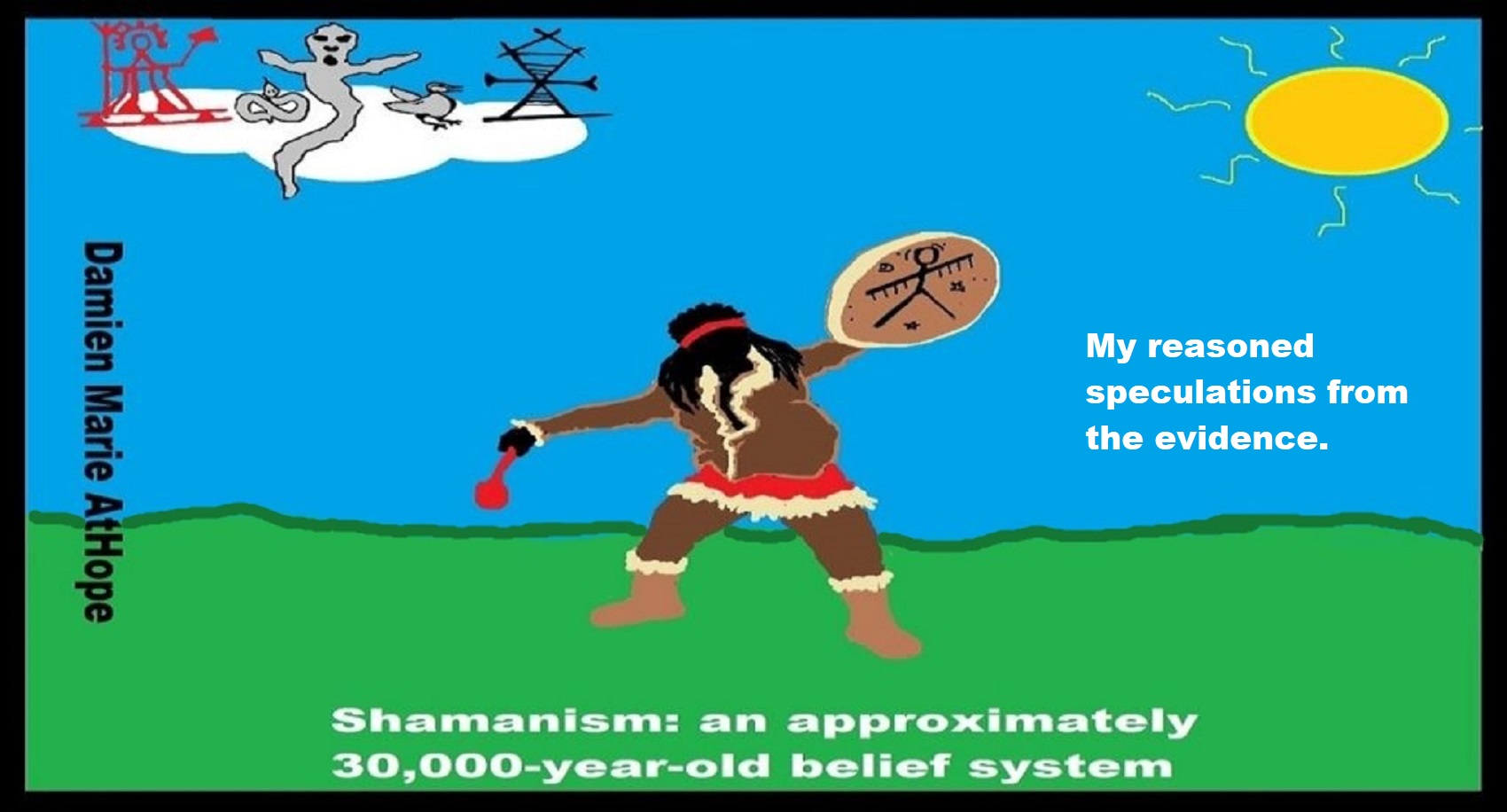
Shamanism (beginning around 30,000 years ago)
Shamanism (such as that seen in Siberia Gravettian culture: 30,000 years ago). Gravettian culture (34,000–24,000 years ago; Western Gravettian, mainly France, Spain, and Britain, as well as Eastern Gravettian in Central Europe and Russia. The eastern Gravettians, which include the Pavlovian culture). And, the Pavlovian culture (31,000 – 25,000 years ago such as in Austria and Poland). 31,000 – 20,000 years ago Oldest Shaman was Female, Buried with the Oldest Portrait Carving.
Shamanism is approximately a 30,000-year-old belief system and believe in spirit-filled life and/or afterlife that can be attached to or be expressed in things or objects and these objects can be used by special persons or in special rituals that can connect to spirit-filled life and/or afterlife. If you believe like this, regardless of your faith, you are a hidden shamanist.
Around 29,000 to 25,000 years ago in Dolní Vestonice, Czech Republic, the oldest human face representation is a carved ivory female head that was found nearby a female burial and belong to the Pavlovian culture, a variant of the Gravettian culture. The left side of the figure’s face was a distorted image and is believed to be a portrait of an elder female, who was around 40 years old. She was ritualistically placed beneath a pair of mammoth scapulae, one leaning against the other. Surprisingly, the left side of the skull was disfigured in the same manner as the aforementioned carved ivory figure, indicating that the figure was an intentional depiction of this specific individual. The bones and the earth surrounding the body contained traces of red ocher, a flint spearhead had been placed near the skull, and one hand held the body of a fox. This evidence suggests that this was the burial site of a shaman. This is the oldest site not only of ceramic figurines and artistic portraiture but also of evidence of early female shamans. Before 5,500 years ago, women were much more prominent in religion.
Archaeologists usually describe two regional variants: the western Gravettian, known namely from cave sites in France, Spain, and Britain, and the eastern Gravettian in Central Europe and Russia. The eastern Gravettians include the Pavlovian culture, which were specialized mammoth hunters and whose remains are usually found not in caves but in open air sites. The origins of the Gravettian people are not clear, they seem to appear simultaneously all over Europe. Though they carried distinct genetic signatures, the Gravettians and Aurignacians before them were descended from the same ancient founder population. According to genetic data, 37,000 years ago, all Europeans can be traced back to a single ‘founding population’ that made it through the last ice age. Furthermore, the so-called founding fathers were part of the Aurignacian culture, which was displaced by another group of early humans members of the Gravettian culture. Between 37,000 years ago and 14,000 years ago, different groups of Europeans were descended from a single founder population. To a greater extent than their Aurignacian predecessors, they are known for their Venus figurines. ref, ref, ref, ref, ref, ref, ref, ref, ref, ref, & ref
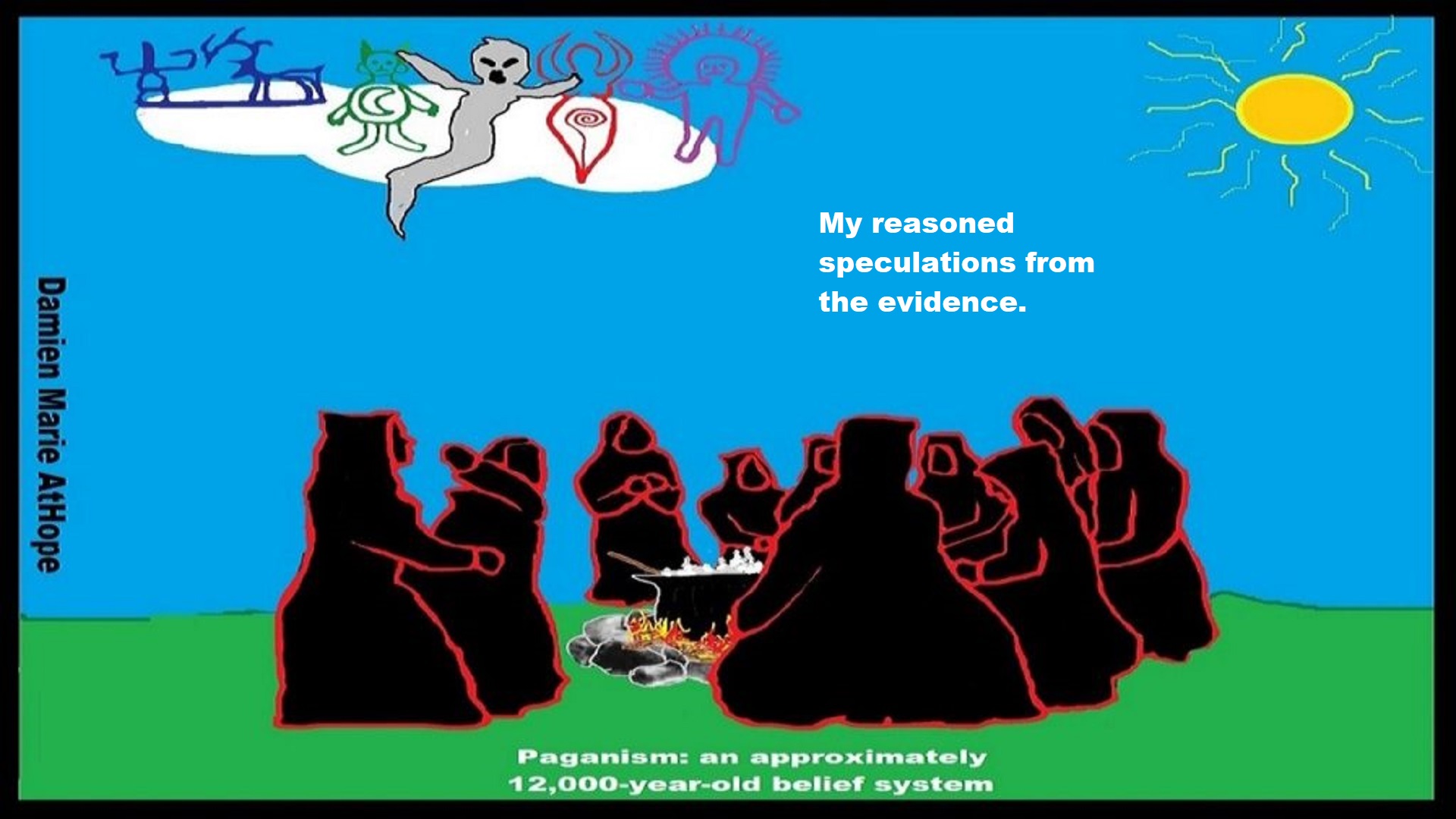
Paganism (beginning around 12,000 years ago)
Paganism (such as that seen in Turkey: 12,000 years ago). Gobekli Tepe: “first human-made temple” around 12,000 years ago. Sedentism and the Creation of goddesses around 12,000 years ago as well as male gods after 7,000 years ago. Pagan-Shaman burial in Israel 12,000 years ago and 12,000 – 10,000 years old Paganistic-Shamanistic Art in a Remote Cave in Egypt. Skull Cult around 11,500 to 8,400 Years Ago and Catal Huyuk “first religious designed city” around 10,000 years ago.
Paganism is approximately a 12,000-year-old belief system and believe in spirit-filled life and/or afterlife that can be attached to or be expressed in things or objects and these objects can be used by special persons or in special rituals that can connect to spirit-filled life and/or afterlife and who are guided/supported by a goddess/god, goddesses/gods, magical beings, or supreme spirits. If you believe like this, regardless of your faith, you are a hidden paganist.
Around 12,000 years ago, in Turkey, the first evidence of paganism is Gobekli Tepe: “first human-made temple” and around 9,500 years ago, in Turkey, the second evidence of paganism is Catal Huyuk “first religious designed city”. In addition, early paganism is connected to Proto-Indo-European language and religion. Proto-Indo-European religion can be reconstructed with confidence that the gods and goddesses, myths, festivals, and form of rituals with invocations, prayers, and songs of praise make up the spoken element of religion. Much of this activity is connected to the natural and agricultural year or at least those are the easiest elements to reconstruct because nature does not change and because farmers are the most conservative members of society and are best able to keep the old ways.
The reconstruction of goddesses/gods characteristics may be different than what we think of and only evolved later to the characteristics we know of today. One such characteristic is how a deity’s gender may not be fixed, since they are often deified forces of nature, which tend to not have genders. There are at least 40 deities and the Goddesses that have been reconstructed are: *Pria, *Pleto, *Devi, *Perkunos, *Aeusos, and *Yama.
The reconstruction of myths can be connected to Proto-Indo-European culture/language and by additional research, many of these myths have since been confirmed including some areas that were not accessible to the early writers such as Latvian folk songs and Hittite hieroglyphic tablets. There are at least 28 myths and one of the most widely recognized myths of the Indo-Europeans is the myth, “Yama is killed by his brother Manu” and “the world is made from his body”. Some of the forms of this myth in various Indo-European languages are about the Creation Myth of the Indo-Europeans.
The reconstruction of rituals can be connected to Proto-Indo-European culture/language and is estimated to have been spoken as a single language from around 6,500 years ago. One of the earliest ritual is the construction of kurgans or mound graves as a part of a death ritual. kurgans were inspired by common ritual-mythological ideas. Kurgans are complex structures with internal chambers. Within the burial chamber at the heart of the kurgan, elite individuals were buried with grave goods and sacrificial offerings, sometimes including horses and chariots.
The speakers of Pre-Proto-Indo-European lived in Turkey and it associates the distribution of historical Indo-European languages with the expansion around 9,000 years ago, with a proposed homeland of Proto-Indo-European proper in the Balkans around 7,000 years ago. The Proto-Indo-European Religion seemingly stretches at least back around 6,000 years ago or likely much further back and I believe Paganism is possibly an approximately 12,000-year-old belief system.
The earliest kurgans date to 6,000 years ago and are connected to the Proto-Indo-European in the Caucasus. In fact, around 7,000 years ago, there appears to be pre-kurgan in Siberia. Around 7,000 to 2,500 years ago and beyond, kurgans were built with ancient traditions still active in Southern Siberia and Central Asia, which display the continuity of the archaic forming methods. Kurgan cultures are divided archaeologically into different sub-cultures such as Timber Grave, Pit Grave, Scythian, Sarmatian, Hunnish, and Kuman–Kipchak. Kurgans have been found from the Altay Mountains to the Caucasus, Ukraine, Romania, and Bulgaria. Around 5,000 years ago, kurgans were used in the Ukrainian and Russian flat unforested grasslands, and their use spread with migration into eastern, central, and northern Europe, Turkey, and beyond. ref, ref, ref, ref, ref, ref, ref, ref, ref, ref, ref, ref, & ref
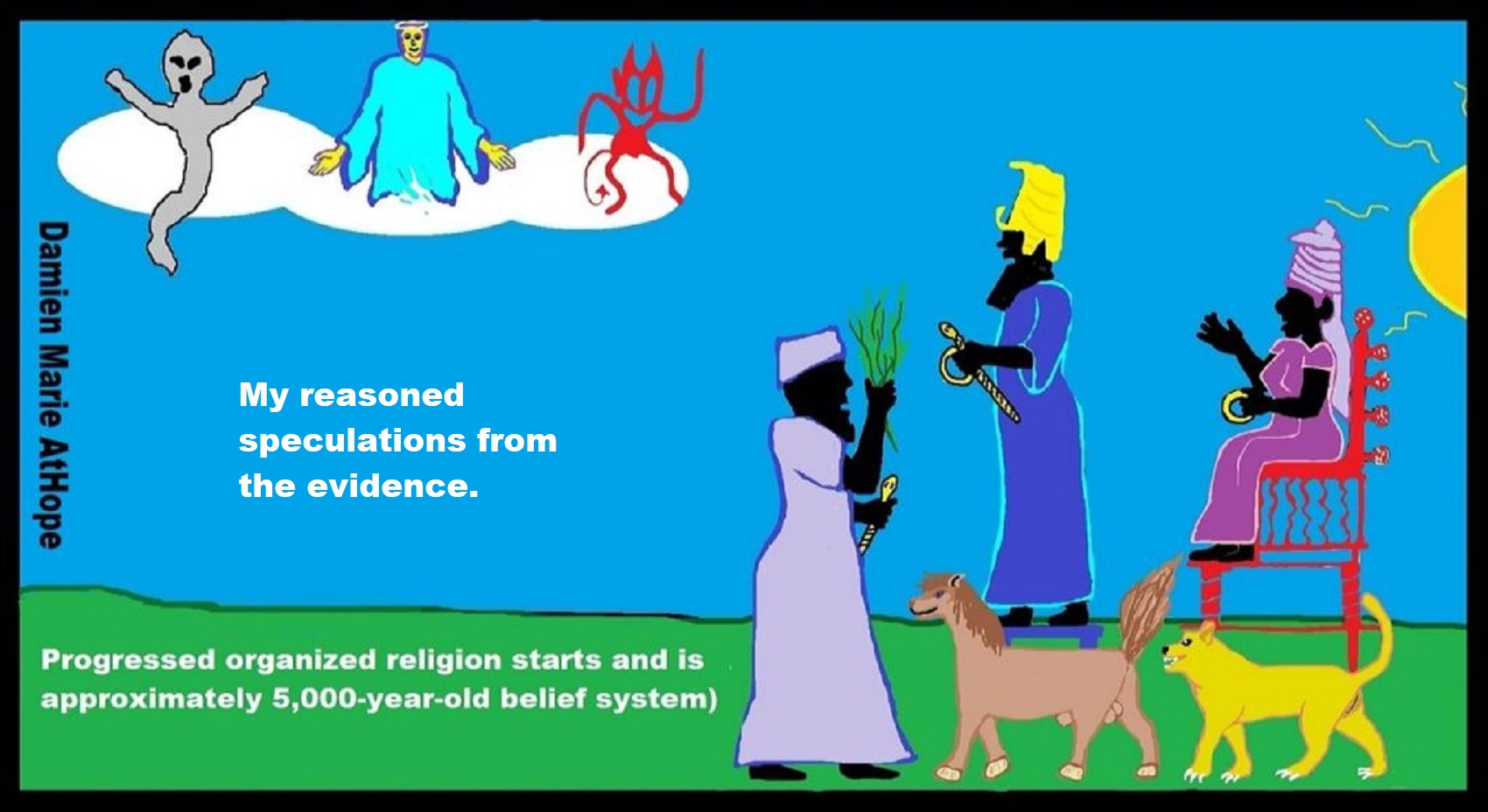
Progressed organized religion (around 5,000 years ago)
Progressed organized religion (such as that seen in Egypt: 5,000 years ago “The First Dynasty dates to 5,150 years ago”). This was a time of astonishing religion development and organization with a new state power to control. Around the time of 5,000 to 4,000 years ago, saw the growth of these riches, both intellectually and physically, became a source of contention on a political stage, and rulers sought the accumulation of more wealth and more power.
*The First Dynasty* Date: 3,150 B.C.E. (5,150 years ago) and the Beginning Rise of the Unequal State Government Hierarchies, Religions and Cultures Merger
The Pharaoh in ancient Egypt was the political and religious leader holding the titles ‘Lord of the Two Lands’ Upper and Lower Egypt and ‘High Priest of Every Temple’. In 5,150 years ago the First Dynasty appeared in Egypt and this reign was thought to be in accordance with the will of the gods; but the office of the king itself was not associated with the divine until later.
Around 4,890 years ago during the Second Dynasty, the King was linked with the divine and reign with the will of the gods. Following this, rulers of the later dynasties were equated with the gods and with the duties and obligations due to those gods. As supreme ruler of the people, the pharaoh was considered a god on earth, the intermediary between the gods and the people, and when he died, he was thought to become Osiris, the god of the dead. As such, in his role of ‘High Priest of Every Temple’, it was the pharaoh’s duty to build great temples and monuments celebrating his own achievements and paying homage to the gods of the land. Among the earliest civilizations that exhibit the phenomenon of divinized kings are early Mesopotamia and ancient Egypt.
In 5,150 years ago the First Dynasty appeared in Egypt with the unification of Upper and Lower Egypt by the king Menes (now believed to be Narmer). Menes/Narmer is depicted on inscriptions wearing the two crowns of Egypt, signifying unification, and his reign was thought to be in accordance with the will of the gods; but the office of the king itself was not associated with the divine until later. During the Second Dynasty of Egypt 4,890-4,670 years ago King Raneb (also known as Nebra) linked his name with the divine and his reign with the will of the gods. Following Raneb, the rulers of the later dynasties were equated with the gods and with the duties and obligations due to those gods. As supreme ruler of the people, the pharaoh was considered a god on earth. The honorific title of `pharaoh’ for a ruler did not appear until the period known as the New Kingdom 3,570-3,069 years ago. Monarchs of the dynasties before the title of `pharaoh’ from the New Kingdom were addressed as `your majesty’ by foreign dignitaries and members of the court and as `brother’ by foreign rulers; both practices would continue after the king of Egypt came to be known as a pharaoh. Ref Ref

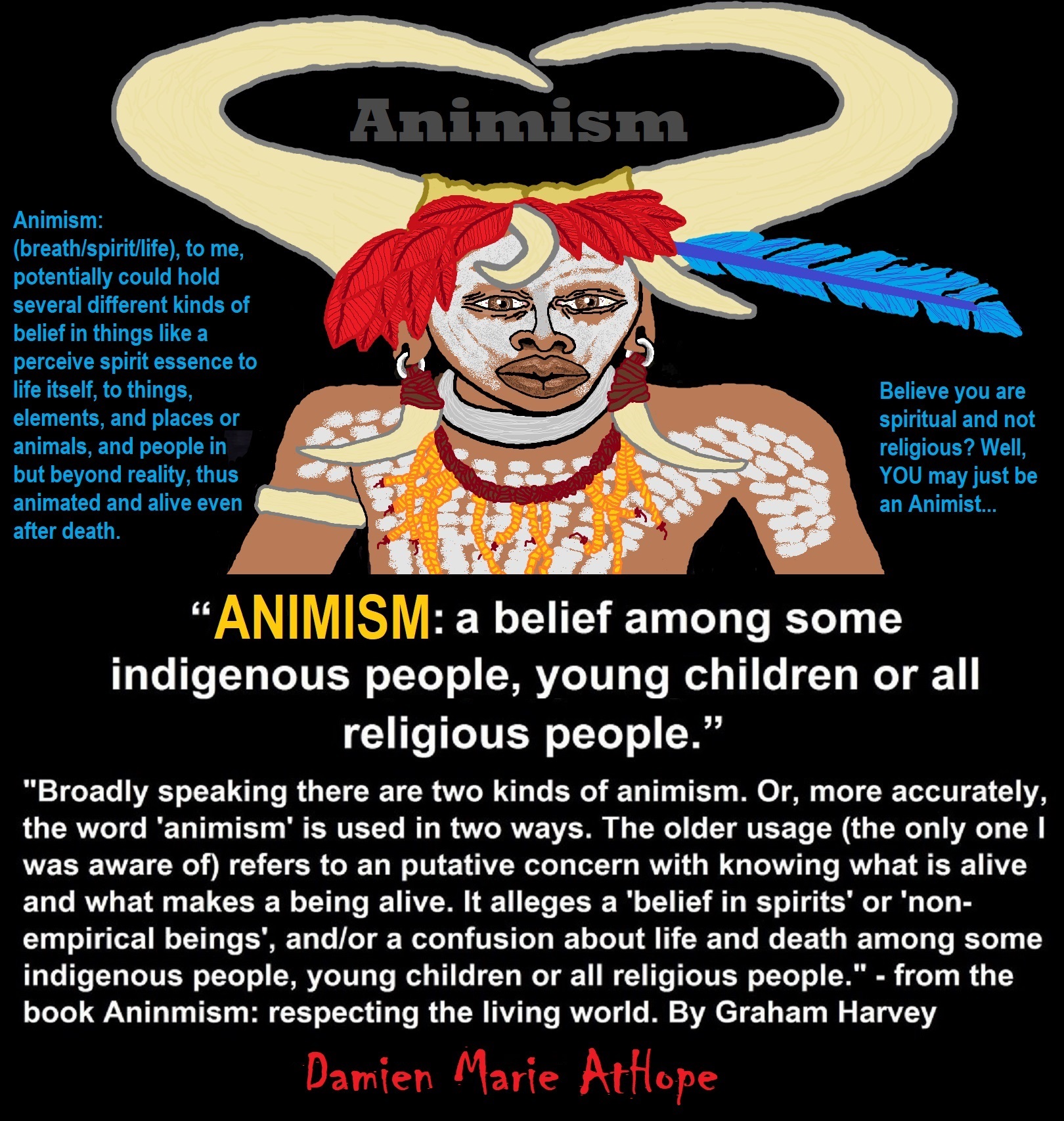
Animism: Respecting the Living World by Graham Harvey
“How have human cultures engaged with and thought about animals, plants, rocks, clouds, and other elements in their natural surroundings? Do animals and other natural objects have a spirit or soul? What is their relationship to humans? In this new study, Graham Harvey explores current and past animistic beliefs and practices of Native Americans, Maori, Aboriginal Australians, and eco-pagans. He considers the varieties of animism found in these cultures as well as their shared desire to live respectfully within larger natural communities. Drawing on his extensive casework, Harvey also considers the linguistic, performative, ecological, and activist implications of these different animisms.” ref

My thoughts on Religion Evolution with external links for more info:
- (Pre-Animism Africa mainly, but also Europe, and Asia at least 300,000 years ago), (Pre-Animism – Oxford Dictionaries)
- (Animism Africa around 100,000 years ago), (Animism – Britannica.com)
- (Totemism Europe around 50,000 years ago), (Totemism – Anthropology)
- (Shamanism Siberia around 30,000 years ago), (Shamanism – Britannica.com)
- (Paganism Turkey around 12,000 years ago), (Paganism – BBC Religion)
- (Progressed Organized Religion “Institutional Religion” Egypt around 5,000 years ago), (Ancient Egyptian Religion – Britannica.com)
- (CURRENT “World” RELIGIONS after 4,000 years ago) (Origin of Major Religions – Sacred Texts)
- (Early Atheistic Doubting at least by 2,600 years ago) (History of Atheism – Wikipedia)
“Religion is an Evolved Product” and Yes, Religion is Like Fear Given Wings…
Atheists talk about gods and religions for the same reason doctors talk about cancer, they are looking for a cure, or a firefighter talks about fires because they burn people and they care to stop them. We atheists too often feel a need to help the victims of mental slavery, held in the bondage that is the false beliefs of gods and the conspiracy theories of reality found in religions.
Understanding Religion Evolution:
- Pre-Animism (at least 300,000 years ago)
- Animism (Africa: 100,000 years ago)
- Totemism (Europe: 50,000 years ago)
- Shamanism (Siberia: 30,000 years ago)
- Paganism (Turkey: 12,000 years ago)
- Progressed organized religion (Egypt: 5,000 years ago), (Egypt, the First Dynasty 5,150 years ago)
- CURRENT “World” RELIGIONS (after 4,000 years ago)
- Early Atheistic Doubting (at least by 2,600 years ago)
“An Archaeological/Anthropological Understanding of Religion Evolution”
It seems ancient peoples had to survived amazing threats in a “dangerous universe (by superstition perceived as good and evil),” and human “immorality or imperfection of the soul” which was thought to affect the still living, leading to ancestor worship. This ancestor worship presumably led to the belief in supernatural beings, and then some of these were turned into the belief in gods. This feeble myth called gods were just a human conceived “made from nothing into something over and over, changing, again and again, taking on more as they evolve, all the while they are thought to be special,” but it is just supernatural animistic spirit-belief perceived as sacred.
Quick Evolution of Religion?
Pre-Animism (at least 300,000 years ago) pre-religion is a beginning that evolves into later Animism. So, Religion as we think of it, to me, all starts in a general way with Animism (Africa: 100,000 years ago) (theoretical belief in supernatural powers/spirits), then this is physically expressed in or with Totemism (Europe: 50,000 years ago) (theoretical belief in mythical relationship with powers/spirits through a totem item), which then enlists a full-time specific person to do this worship and believed interacting Shamanism (Siberia/Russia: 30,000 years ago) (theoretical belief in access and influence with spirits through ritual), and then there is the further employment of myths and gods added to all the above giving you Paganism (Turkey: 12,000 years ago) (often a lot more nature-based than most current top world religions, thus hinting to their close link to more ancient religious thinking it stems from). My hypothesis is expressed with an explanation of the building of a theatrical house (modern religions development). Progressed organized religion (Egypt: 5,000 years ago) with CURRENT “World” RELIGIONS (after 4,000 years ago).
Historically, in large city-state societies (such as Egypt or Iraq) starting around 5,000 years ago culminated to make religion something kind of new, a sociocultural-governmental-religious monarchy, where all or at least many of the people of such large city-state societies seem familiar with and committed to the existence of “religion” as the integrated life identity package of control dynamics with a fixed closed magical doctrine, but this juggernaut integrated religion identity package of Dogmatic-Propaganda certainly did not exist or if developed to an extent it was highly limited in most smaller prehistoric societies as they seem to lack most of the strong control dynamics with a fixed closed magical doctrine (magical beliefs could be at times be added or removed). Many people just want to see developed religious dynamics everywhere even if it is not. Instead, all that is found is largely fragments until the domestication of religion.
Religions, as we think of them today, are a new fad, even if they go back to around 6,000 years in the timeline of human existence, this amounts to almost nothing when seen in the long slow evolution of religion at least around 70,000 years ago with one of the oldest ritual worship. Stone Snake of South Africa: “first human worship” 70,000 years ago. This message of how religion and gods among them are clearly a man-made thing that was developed slowly as it was invented and then implemented peace by peace discrediting them all. Which seems to be a simple point some are just not grasping how devastating to any claims of truth when we can see the lie clearly in the archeological sites.
I wish people fought as hard for the actual values as they fight for the group/clan names political or otherwise they think support values. Every amount spent on war is theft to children in need of food or the homeless kept from shelter.
Here are several of my blog posts on history:
- To Find Truth You Must First Look
- (Magdalenian/Iberomaurusian) Connections to the First Paganists of the early Neolithic Near East Dating from around 17,000 to 12,000 Years Ago
- Natufians: an Ancient People at the Origins of Agriculture and Sedentary Life
- Possible Clan Leader/Special “MALE” Ancestor Totem Poles At Least 13,500 years ago?
- Jewish People with DNA at least 13,200 years old, Judaism, and the Origins of Some of its Ideas
- Baltic Reindeer Hunters: Swiderian, Lyngby, Ahrensburgian, and Krasnosillya cultures 12,020 to 11,020 years ago are evidence of powerful migratory waves during the last 13,000 years and a genetic link to Saami and the Finno-Ugric peoples.
- The Rise of Inequality: patriarchy and state hierarchy inequality
- Fertile Crescent 12,500 – 9,500 Years Ago: fertility and death cult belief system?
- 12,400 – 11,700 Years Ago – Kortik Tepe (Turkey) Pre/early-Agriculture Cultic Ritualism
- Ritualistic Bird Symbolism at Gobekli Tepe and its “Ancestor Cult”
- Male-Homosexual (female-like) / Trans-woman (female) Seated Figurine from Gobekli Tepe
- Could a 12,000-year-old Bull Geoglyph at Göbekli Tepe relate to older Bull and Female Art 25,000 years ago and Later Goddess and the Bull cults like Catal Huyuk?
- Sedentism and the Creation of goddesses around 12,000 years ago as well as male gods after 7,000 years ago.
- Alcohol, where Agriculture and Religion Become one? Such as Gobekli Tepe’s Ritualistic use of Grain as Food and Ritual Drink
- Neolithic Ritual Sites with T-Pillars and other Cultic Pillars
- Paganism: Goddesses around 12,000 years ago then Male Gods after 7,000 years ago
- First Patriarchy: Split of Women’s Status around 12,000 years ago & First Hierarchy: fall of Women’s Status around 5,000 years ago.
- Natufians: an Ancient People at the Origins of Agriculture and Sedentary Life
- J DNA and the Spread of Agricultural Religion (paganism)
- Paganism: an approximately 12,000-year-old belief system
- Paganism 12,000 years old: related to “Anarchism and Socialism” (Pre-Capitalism)
- Shaman burial in Israel 12,000 years ago and the Shamanism Phenomena
- Need to Mythicized: gods and goddesses
- 12,000 – 7,000 Years Ago – Paleo-Indian Culture (The Americas)
- 12,000 – 2,000 Years Ago – Indigenous-Scandinavians (Nordic)
- Norse did not wear helmets with horns?
- Pre-Pottery Neolithic Skull Cult around 11,500 to 8,400 Years Ago?
- 10,400 – 10,100 Years Ago, in Turkey the Nevail Cori Religious Settlement
- 9,000-6,500 Years Old Submerged Pre-Pottery/Pottery Neolithic Ritual Settlements off Israel’s Coast
- Catal Huyuk “first religious designed city” around 9,500 to 7,700 years ago (Turkey)
- Cultic Hunting at Catal Huyuk “first religious designed city”
- Special Items and Art as well as Special Elite Burials at Catal Huyuk
- New Rituals and Violence with the appearance of Pottery and People?
- Haplogroup N and its related Uralic Languages and Cultures
- Ainu people, Sámi people, Native Americans, the Ancient North Eurasians, and Paganistic-Shamanism with Totemism
- Ideas, Technology and People from Turkey, Europe, to China and Back again 9,000 to 5,000 years ago?
- First Pottery of Europe and the Related Cultures
- 9,000 years old Neolithic Artifacts Judean Desert and Hills Israel
- 9,000-7,000 years-old Sex and Death Rituals: Cult Sites in Israel, Jordan, and the Sinai
- 9,000-8500 year old Horned Female shaman Bad Dürrenberg Germany
- Neolithic Jewelry and the Spread of Farming in Europe Emerging out of West Turkey
- 8,600-year-old Tortoise Shells in Neolithic graves in central China have Early Writing and Shamanism
- Swing of the Mace: the rise of Elite, Forced Authority, and Inequality begin to Emerge 8,500 years ago?
- Migrations and Changing Europeans Beginning around 8,000 Years Ago
- My “Steppe-Anatolian-Kurgan hypothesis” 8,000/7,000 years ago
- Around 8,000-year-old Shared Idea of the Mistress of Animals, “Ritual” Motif
- Pre-Columbian Red-Paint (red ochre) Maritime Archaic Culture 8,000-3,000 years ago
- 7,522-6,522 years ago Linear Pottery culture which I think relates to Arcane Capitalism’s origins
- Arcane Capitalism: Primitive socialism, Primitive capital, Private ownership, Means of production, Market capitalism, Class discrimination, and Petite bourgeoisie (smaller capitalists)
- 7,500-4,750 years old Ritualistic Cucuteni-Trypillian culture of Moldova, Romania, and Ukraine
- Roots of a changing early society 7,200-6,700 years ago Jordan and Israel
- Agriculture religion (Paganism) with farming reached Britain between about 7,000 to 6,500 or so years ago and seemingly expressed in things like Western Europe’s Long Barrows
- My Thoughts on Possible Migrations of “R” DNA and Proto-Indo-European?
- “Millet” Spreading from China 7,022 years ago to Europe and related Language may have Spread with it leading to Proto-Indo-European
- Proto-Indo-European (PIE), ancestor of Indo-European languages: DNA, Society, Language, and Mythology
- The Dnieper–Donets culture and Asian varieties of Millet from China to the Black Sea region of Europe by 7,022 years ago
- Kurgan 6,000 years ago/dolmens 7,000 years ago: funeral, ritual, and other?
- 7,020 to 6,020-year-old Proto-Indo-European Homeland of Urheimat or proposed home of their Language and Religion
- Ancient Megaliths: Kurgan, Ziggurat, Pyramid, Menhir, Trilithon, Dolman, Kromlech, and Kromlech of Trilithons
- The Mytheme of Ancient North Eurasian Sacred-Dog belief and similar motifs are found in Indo-European, Native American, and Siberian comparative mythology
- Elite Power Accumulation: Ancient Trade, Tokens, Writing, Wealth, Merchants, and Priest-Kings
- Sacred Mounds, Mountains, Kurgans, and Pyramids may hold deep connections?
- Between 7,000-5,000 Years ago, rise of unequal hierarchy elite, leading to a “birth of the State” or worship of power, strong new sexism, oppression of non-elites, and the fall of Women’s equal status
- Paganism 7,000-5,000 years old: related to “Anarchism and Socialism” (Capitalism) (World War 0) Elite & their slaves
- Hell and Underworld mythologies starting maybe as far back as 7,000 to 5,000 years ago with the Proto-Indo-Europeans?
- The First Expression of the Male God around 7,000 years ago?
- White (light complexion skin) Bigotry and Sexism started 7,000 years ago?
- Around 7,000-year-old Shared Idea of the Divine Bird (Tutelary and/or Trickster spirit/deity), “Ritual” Motif
- Nekhbet an Ancient Egyptian Vulture Goddess and Tutelary Deity
- 6,720 to 4,920 years old Ritualistic Hongshan Culture of Inner Mongolia with 5,000-year-old Pyramid Mounds and Temples
- First proto-king in the Balkans, Varna culture around 6,500 years ago?
- 6,500–5,800 years ago in Israel Late Chalcolithic (Copper Age) Period in the Southern Levant Seems to Express Northern Levant Migrations, Cultural and Religious Transfer
- KING OF BEASTS: Master of Animals “Ritual” Motif, around 6,000 years old or older…
- Around 6000-year-old Shared Idea of the Solid Wheel & the Spoked Wheel-Shaped Ritual Motif
- “The Ghassulian Star,” a mysterious 6,000-year-old mural from Jordan; a Proto-Star of Ishtar, Star of Inanna or Star of Venus?
- Religious/Ritual Ideas, including goddesses and gods as well as ritual mounds or pyramids from Northeastern Asia at least 6,000 years old, seemingly filtering to Iran, Iraq, the Mediterranean, Europe, Egypt, and the Americas?
- Maykop (5,720–5,020 years ago) Caucasus region Bronze Age culture-related to Copper Age farmers from the south, influenced by the Ubaid period and Leyla-Tepe culture, as well as influencing the Kura-Araxes culture
- 5-600-year-old Tomb, Mummy, and First Bearded Male Figurine in a Grave
- Kura-Araxes Cultural 5,520 to 4,470 years old DNA traces to the Canaanites, Arabs, and Jews
- Minoan/Cretan (Keftiu) Civilization and Religion around 5,520 to 3,120 years ago
- Evolution Of Science at least by 5,500 years ago
- 5,500 Years old birth of the State, the rise of Hierarchy, and the fall of Women’s status
- “Jiroft culture” 5,100 – 4,200 years ago and the History of Iran
- Stonehenge: Paganistic Burial and Astrological Ritual Complex, England (5,100-3,600 years ago)
- Around 5,000-year-old Shared Idea of the “Tree of Life” Ritual Motif
- Complex rituals for elite, seen from China to Egypt, at least by 5,000 years ago
- Around 5,000 years ago: “Birth of the State” where Religion gets Military Power and Influence
- The Center of the World “Axis Mundi” and/or “Sacred Mountains” Mythology Could Relate to the Altai Mountains, Heart of the Steppe
- Progressed organized religion starts, an approximately 5,000-year-old belief system
- China’s Civilization between 5,000-3,000 years ago, was a time of war and class struggle, violent transition from free clans to a Slave or Elite society
- Origin of Logics is Naturalistic Observation at least by around 5,000 years ago.
- Paganism 5,000 years old: progressed organized religion and the state: related to “Anarchism and Socialism” (Kings and the Rise of the State)
- Ziggurats (multi-platform temples: 4,900 years old) to Pyramids (multi-platform tombs: 4,700 years old)
- Did a 4,520–4,420-year-old Volcano In Turkey Inspire the Bible God?
- Finland’s Horned Shaman and Pre-Horned-God at least 4,500 years ago?
- 4,000-year-Old Dolmens in Israel: A Connected Dolmen Religious Phenomenon?
- Creation myths: From chaos, Ex nihilo, Earth-diver, Emergence, World egg, and World parent
- Bronze Age “Ritual” connections of the Bell Beaker culture with the Corded Ware/Single Grave culture, which were related to the Yamnaya culture and Proto-Indo-European Languages/Religions
- Low Gods (Earth/ Tutelary deity), High Gods (Sky/Supreme deity), and Moralistic Gods (Deity enforcement/divine order)
- The exchange of people, ideas, and material-culture including, to me, the new god (Sky Father) and goddess (Earth Mother) religion between the Cucuteni-Trypillians and others which is then spread far and wide
- Koryaks: Indigenous People of the Russian Far East and Big Raven myths also found in Tlingit, Haida, Tsimshian, and other Indigenous People of North America
- 42 Principles Of Maat (Egyptian Goddess of the justice) around 4,400 years ago, 2000 Years Before Ten Commandments
- “Happy Easter” Well Happy Eostre/Ishter
- 4,320-3,820 years old “Shimao” (North China) site with Totemistic-Shamanistic Paganism and a Stepped Pyramid
- 4,250 to 3,400 Year old Stonehenge from Russia: Arkaim?
- 4,100-year-old beaker with medicinal & flowering plants in a grave of a woman in Scotland
- Early European Farmer ancestry, Kelif el Boroud people with the Cardial Ware culture, and the Bell Beaker culture Paganists too, spread into North Africa, then to the Canary Islands off West Africa
- Flood Accounts: Gilgamesh epic (4,100 years ago) Noah in Genesis (2,600 years ago)
- Paganism 4,000 years old: related to “Anarchism and Socialism” (First Moralistic gods, then the Origin time of Monotheism)
- When was the beginning: TIMELINE OF CURRENT RELIGIONS, which start around 4,000 years ago.
- Early Religions Thought to Express Proto-Monotheistic Systems around 4,000 years ago
- Kultepe? An archaeological site with a 4,000 years old women’s rights document.
- Single God Religions (Monotheism) = “Man-o-theism” started around 4,000 years ago with the Great Sky Spirit/God Tiān (天)?
- Confucianism’s Tiān (Shangdi god 4,000 years old): Supernaturalism, Pantheism or Theism?
- Yes, Your Male God is Ridiculous
- Mythology, a Lunar Deity is a Goddess or God of the Moon
- Sacred Land, Hills, and Mountains: Sami Mythology (Paganistic Shamanism)
- Horse Worship/Sacrifice: mythical union of Ruling Elite/Kingship and the Horse
- The Amorite/Amurru people’s God Amurru “Lord of the Steppe”, relates to the Origins of the Bible God?
- Bronze Age Exotic Trade Routes Spread Quite Far as well as Spread Religious Ideas with Them
- Sami and the Northern Indigenous Peoples Landscape, Language, and its Connection to Religion
- Prototype of Ancient Analemmatic Sundials around 3,900-3,150 years ago and a Possible Solar Connection to gods?
- Judaism is around 3,450 or 3,250 years old. (“Paleo-Hebrew” 3,000 years ago and Torah 2,500 years ago)
- The Weakening of Ancient Trade and the Strengthening of Religions around 3000 years ago?
- Are you aware that there are religions that worship women gods, explain now religion tears women down?
- Animistic, Totemistic, and Paganistic Superstition Origins of bible god and the bible’s Religion.
- Myths and Folklore: “Trickster gods and goddesses”
- Jews, Judaism, and the Origins of Some of its Ideas
- An Old Branch of Religion Still Giving Fruit: Sacred Trees
- Dating the BIBLE: naming names and telling times (written less than 3,000 years ago, provable to 2,200 years ago)
- Did a Volcano Inspire the bible god?
- The Amorite/Amurru people’s God Amurru “Lord of the Steppe”, relates to the Origins of the Bible God?
- Dené–Yeniseian language, Old Copper Complex, and Pre-Columbian Mound Builders?
- No “dinosaurs and humans didn’t exist together just because some think they are in the bible itself”
- Sacred Shit and Sacred Animals?
- Everyone Killed in the Bible Flood? “Nephilim” (giants)?
- Hey, Damien dude, I have a question for you regarding “the bible” Exodus.
- Archaeology Disproves the Bible
- Bible Battle, Just More, Bible Babble
- The Jericho Conquest lie?
- Canaanites and Israelites?
- Accurate Account on how did Christianity Began?
- Let’s talk about Christianity.
- So the 10 commandments isn’t anything to go by either right?
- Misinformed christian
- Debunking Jesus?
- Paulism vs Jesus
- Ok, you seem confused so let’s talk about Buddhism.
- Unacknowledged Buddhism: Gods, Savior, Demons, Rebirth, Heavens, Hells, and Terrorism
- His Foolishness The Dalai Lama
- Yin and Yang is sexist with an ORIGIN around 2,300 years ago?
- I Believe Archaeology, not Myths & Why Not, as the Religious Myths Already Violate Reason!
- Archaeological, Scientific, & Philosophic evidence shows the god myth is man-made nonsense.
- Aquatic Ape Theory/Hypothesis? As Always, Just Pseudoscience.
- Ancient Aliens Conspiracy Theorists are Pseudohistorians
- The Pseudohistoric and Pseudoscientific claims about “Bakoni Ruins” of South Africa
- Why do people think Religion is much more than supernaturalism and superstitionism?
- Religion is an Evolved Product
- Was the Value of Ancient Women Different?
- 1000 to 1100 CE, human sacrifice Cahokia Mounds a pre-Columbian Native American site
- Feminist atheists as far back as the 1800s?
- Promoting Religion as Real is Mentally Harmful to a Flourishing Humanity
- Screw All Religions and Their Toxic lies, they are all fraud
- Forget Religions’ Unfounded Myths, I Have Substantiated “Archaeology Facts.”
- Religion Dispersal throughout the World
- I Hate Religion Just as I Hate all Pseudoscience
- Exposing Scientology, Eckankar, Wicca and Other Nonsense?
- Main deity or religious belief systems
- Quit Trying to Invent Your God From the Scraps of Science.
- Archaeological, Scientific, & Philosophic evidence shows the god myth is man-made nonsense.
- Ancient Alien Conspiracy Theorists: Misunderstanding, Rhetoric, Misinformation, Fabrications, and Lies
- Misinformation, Distortion, and Pseudoscience in Talking with a Christian Creationist
- Judging the Lack of Goodness in Gods, Even the Norse God Odin
- Challenging the Belief in God-like Aliens and Gods in General
- A Challenge to Christian use of Torture Devices?
- Yes, Hinduism is a Religion
- Trump is One of the Most Reactionary Forces of Far-right Christian Extremism
- Was the Bull Head a Symbol of God? Yes!
- Primate Death Rituals
- Christian – “God and Christianity are objectively true”
- Australopithecus afarensis Death Ritual?
- You Claim Global Warming is a Hoax?
- Doubter of Science and Defamer of Atheists?
- I think that sounds like the Bible?
- History of the Antifa (“anti-fascist”) Movements
- Indianapolis Anti-Blasphemy Laws #Free Soheil Rally
- Damien, you repeat the golden rule in so many forms then you say religion is dogmatic?
- Science is a Trustable Methodology whereas Faith is not Trustable at all!
- Was I ever a believer, before I was an atheist?
- Atheists rise in reason
- Mistrust of science?
- Open to Talking About the Definition of ‘God’? But first, we address Faith.
- ‘United Monarchy’ full of splendor and power – Saul, David, and Solomon? Most likely not.
- Is there EXODUS ARCHAEOLOGY? The short answer is “no.”
- Lacking Proof of Bigfoots, Unicorns, and Gods is Just a Lack of Research?
- Religion and Politics: Faith Beliefs vs. Rational Thinking
- Hammer of Truth that lying pig RELIGION: challenged by an archaeologist
- “The Hammer of Truth” -ontology question- What do You Mean by That?
- Navigation of a bad argument: Ad Hominem vs. Attack
- Why is it Often Claimed that Gods have a Gender?
- Why are basically all monotheistic religions ones that have a male god?
- Shifting through the Claims in support of Faith
- Dear Mr. AtHope, The 20th Century is an Indictment of Secularism and a Failed Atheist Century
- An Understanding of the Worldwide Statistics and Dynamics of Terrorist Incidents and Suicide Attacks
- Intoxication and Evolution? Addressing and Assessing the “Stoned Ape” or “Drunken Monkey” Theories as Catalysts in Human Evolution
- Sacred Menstrual cloth? Inanna’s knot, Isis knot, and maybe Ma’at’s feather?
- Damien, why don’t the Hebrews accept the bible stories?
- Dealing with a Troll and Arguing Over Word Meaning
- Knowledge without Belief? Justified beliefs or disbeliefs worthy of Knowledge?
- Afrocentrism and African Religions
- Crecganford @crecganford offers history & stories of the people, places, gods, & culture
- Empiricism-Denier?
I am not an academic. I am a revolutionary that teaches in public, in places like social media, and in the streets. I am not a leader by some title given but from my commanding leadership style of simply to start teaching everywhere to everyone, all manner of positive education.





ref, ref, ref, ref, ref, ref, ref, ref, ref, ref, ref, ref, ref, ref, ref, ref, ref, ref, ref, ref, ref
Low Gods “Earth” or Tutelary deity and High Gods “Sky” or Supreme deity
“An Earth goddess is a deification of the Earth. Earth goddesses are often associated with the “chthonic” deities of the underworld. Ki and Ninhursag are Mesopotamian earth goddesses. In Greek mythology, the Earth is personified as Gaia, corresponding to Roman Terra, Indic Prithvi/Bhūmi, etc. traced to an “Earth Mother” complementary to the “Sky Father” in Proto-Indo-European religion. Egyptian mythology exceptionally has a sky goddess and an Earth god.” ref
“A mother goddess is a goddess who represents or is a personification of nature, motherhood, fertility, creation, destruction or who embodies the bounty of the Earth. When equated with the Earth or the natural world, such goddesses are sometimes referred to as Mother Earth or as the Earth Mother. In some religious traditions or movements, Heavenly Mother (also referred to as Mother in Heaven or Sky Mother) is the wife or feminine counterpart of the Sky father or God the Father.” ref
“Any masculine sky god is often also king of the gods, taking the position of patriarch within a pantheon. Such king gods are collectively categorized as “sky father” deities, with a polarity between sky and earth often being expressed by pairing a “sky father” god with an “earth mother” goddess (pairings of a sky mother with an earth father are less frequent). A main sky goddess is often the queen of the gods and may be an air/sky goddess in her own right, though she usually has other functions as well with “sky” not being her main. In antiquity, several sky goddesses in ancient Egypt, Mesopotamia, and the Near East were called Queen of Heaven. Neopagans often apply it with impunity to sky goddesses from other regions who were never associated with the term historically. The sky often has important religious significance. Many religions, both polytheistic and monotheistic, have deities associated with the sky.” ref
“In comparative mythology, sky father is a term for a recurring concept in polytheistic religions of a sky god who is addressed as a “father”, often the father of a pantheon and is often either a reigning or former King of the Gods. The concept of “sky father” may also be taken to include Sun gods with similar characteristics, such as Ra. The concept is complementary to an “earth mother“. “Sky Father” is a direct translation of the Vedic Dyaus Pita, etymologically descended from the same Proto-Indo-European deity name as the Greek Zeûs Pater and Roman Jupiter and Germanic Týr, Tir or Tiwaz, all of which are reflexes of the same Proto-Indo-European deity’s name, *Dyēus Ph₂tḗr. While there are numerous parallels adduced from outside of Indo-European mythology, there are exceptions (e.g. In Egyptian mythology, Nut is the sky mother and Geb is the earth father).” ref
Tutelary deity
“A tutelary (also tutelar) is a deity or spirit who is a guardian, patron, or protector of a particular place, geographic feature, person, lineage, nation, culture, or occupation. The etymology of “tutelary” expresses the concept of safety and thus of guardianship. In late Greek and Roman religion, one type of tutelary deity, the genius, functions as the personal deity or daimon of an individual from birth to death. Another form of personal tutelary spirit is the familiar spirit of European folklore.” ref
“A tutelary (also tutelar) in Korean shamanism, jangseung and sotdae were placed at the edge of villages to frighten off demons. They were also worshiped as deities. Seonangshin is the patron deity of the village in Korean tradition and was believed to embody the Seonangdang. In Philippine animism, Diwata or Lambana are deities or spirits that inhabit sacred places like mountains and mounds and serve as guardians. Such as: Maria Makiling is the deity who guards Mt. Makiling and Maria Cacao and Maria Sinukuan. In Shinto, the spirits, or kami, which give life to human bodies come from nature and return to it after death. Ancestors are therefore themselves tutelaries to be worshiped. And similarly, Native American beliefs such as Tonás, tutelary animal spirit among the Zapotec and Totems, familial or clan spirits among the Ojibwe, can be animals.” ref
“A tutelary (also tutelar) in Austronesian beliefs such as: Atua (gods and spirits of the Polynesian peoples such as the Māori or the Hawaiians), Hanitu (Bunun of Taiwan‘s term for spirit), Hyang (Kawi, Sundanese, Javanese, and Balinese Supreme Being, in ancient Java and Bali mythology and this spiritual entity, can be either divine or ancestral), Kaitiaki (New Zealand Māori term used for the concept of guardianship, for the sky, the sea, and the land), Kawas (mythology) (divided into 6 groups: gods, ancestors, souls of the living, spirits of living things, spirits of lifeless objects, and ghosts), Tiki (Māori mythology, Tiki is the first man created by either Tūmatauenga or Tāne and represents deified ancestors found in most Polynesian cultures). ” ref, ref, ref, ref, ref, ref, ref
Mesopotamian Tutelary Deities can be seen as ones related to City-States
“Historical city-states included Sumerian cities such as Uruk and Ur; Ancient Egyptian city-states, such as Thebes and Memphis; the Phoenician cities (such as Tyre and Sidon); the five Philistine city-states; the Berber city-states of the Garamantes; the city-states of ancient Greece (the poleis such as Athens, Sparta, Thebes, and Corinth); the Roman Republic (which grew from a city-state into a vast empire); the Italian city-states from the Middle Ages to the early modern period, such as Florence, Siena, Ferrara, Milan (which as they grew in power began to dominate neighboring cities) and Genoa and Venice, which became powerful thalassocracies; the Mayan and other cultures of pre-Columbian Mesoamerica (including cities such as Chichen Itza, Tikal, Copán and Monte Albán); the central Asian cities along the Silk Road; the city-states of the Swahili coast; Ragusa; states of the medieval Russian lands such as Novgorod and Pskov; and many others.” ref
“The Uruk period (ca. 4000 to 3100 BCE; also known as Protoliterate period) of Mesopotamia, named after the Sumerian city of Uruk, this period saw the emergence of urban life in Mesopotamia and the Sumerian civilization. City-States like Uruk and others had a patron tutelary City Deity along with a Priest-King.” ref
“Chinese folk religion, both past, and present, includes myriad tutelary deities. Exceptional individuals, highly cultivated sages, and prominent ancestors can be deified and honored after death. Lord Guan is the patron of military personnel and police, while Mazu is the patron of fishermen and sailors. Such as Tu Di Gong (Earth Deity) is the tutelary deity of a locality, and each individual locality has its own Earth Deity and Cheng Huang Gong (City God) is the guardian deity of an individual city, worshipped by local officials and locals since imperial times.” ref
“A tutelary (also tutelar) in Hinduism, personal tutelary deities are known as ishta-devata, while family tutelary deities are known as Kuladevata. Gramadevata are guardian deities of villages. Devas can also be seen as tutelary. Shiva is the patron of yogis and renunciants. City goddesses include: Mumbadevi (Mumbai), Sachchika (Osian); Kuladevis include: Ambika (Porwad), and Mahalakshmi. In NorthEast India Meitei mythology and religion (Sanamahism) of Manipur, there are various types of tutelary deities, among which Lam Lais are the most predominant ones. Tibetan Buddhism has Yidam as a tutelary deity. Dakini is the patron of those who seek knowledge.” ref
“A tutelary (also tutelar) The Greeks also thought deities guarded specific places: for instance, Athena was the patron goddess of the city of Athens. Socrates spoke of hearing the voice of his personal spirit or daimonion:
You have often heard me speak of an oracle or sign which comes to me … . This sign I have had ever since I was a child. The sign is a voice which comes to me and always forbids me to do something which I am going to do, but never commands me to do anything, and this is what stands in the way of my being a politician.” ref
“Tutelary deities who guard and preserve a place or a person are fundamental to ancient Roman religion. The tutelary deity of a man was his Genius, that of a woman her Juno. In the Imperial era, the Genius of the Emperor was a focus of Imperial cult. An emperor might also adopt a major deity as his personal patron or tutelary, as Augustus did Apollo. Precedents for claiming the personal protection of a deity were established in the Republican era, when for instance the Roman dictator Sulla advertised the goddess Victory as his tutelary by holding public games (ludi) in her honor.” ref
“Each town or city had one or more tutelary deities, whose protection was considered particularly vital in time of war and siege. Rome itself was protected by a goddess whose name was to be kept ritually secret on pain of death (for a supposed case, see Quintus Valerius Soranus). The Capitoline Triad of Juno, Jupiter, and Minerva were also tutelaries of Rome. The Italic towns had their own tutelary deities. Juno often had this function, as at the Latin town of Lanuvium and the Etruscan city of Veii, and was often housed in an especially grand temple on the arx (citadel) or other prominent or central location. The tutelary deity of Praeneste was Fortuna, whose oracle was renowned.” ref
“The Roman ritual of evocatio was premised on the belief that a town could be made vulnerable to military defeat if the power of its tutelary deity were diverted outside the city, perhaps by the offer of superior cult at Rome. The depiction of some goddesses such as the Magna Mater (Great Mother, or Cybele) as “tower-crowned” represents their capacity to preserve the city. A town in the provinces might adopt a deity from within the Roman religious sphere to serve as its guardian, or syncretize its own tutelary with such; for instance, a community within the civitas of the Remi in Gaul adopted Apollo as its tutelary, and at the capital of the Remi (present-day Rheims), the tutelary was Mars Camulus.” ref
Household deity (a kind of or related to a Tutelary deity)
“A household deity is a deity or spirit that protects the home, looking after the entire household or certain key members. It has been a common belief in paganism as well as in folklore across many parts of the world. Household deities fit into two types; firstly, a specific deity – typically a goddess – often referred to as a hearth goddess or domestic goddess who is associated with the home and hearth, such as the ancient Greek Hestia.” ref
“The second type of household deities are those that are not one singular deity, but a type, or species of animistic deity, who usually have lesser powers than major deities. This type was common in the religions of antiquity, such as the Lares of ancient Roman religion, the Gashin of Korean shamanism, and Cofgodas of Anglo-Saxon paganism. These survived Christianisation as fairy-like creatures existing in folklore, such as the Anglo-Scottish Brownie and Slavic Domovoy.” ref
“Household deities were usually worshipped not in temples but in the home, where they would be represented by small idols (such as the teraphim of the Bible, often translated as “household gods” in Genesis 31:19 for example), amulets, paintings, or reliefs. They could also be found on domestic objects, such as cosmetic articles in the case of Tawaret. The more prosperous houses might have a small shrine to the household god(s); the lararium served this purpose in the case of the Romans. The gods would be treated as members of the family and invited to join in meals, or be given offerings of food and drink.” ref
“In many religions, both ancient and modern, a god would preside over the home. Certain species, or types, of household deities, existed. An example of this was the Roman Lares. Many European cultures retained house spirits into the modern period. Some examples of these include:
- Brownie (Scotland and England) or Hob (England) / Kobold (Germany) / Goblin / Hobgoblin
- Domovoy (Slavic)
- Nisse (Norwegian or Danish) / Tomte (Swedish) / Tonttu (Finnish)
- Húsvættir (Norse)” ref
“Although the cosmic status of household deities was not as lofty as that of the Twelve Olympians or the Aesir, they were also jealous of their dignity and also had to be appeased with shrines and offerings, however humble. Because of their immediacy they had arguably more influence on the day-to-day affairs of men than the remote gods did. Vestiges of their worship persisted long after Christianity and other major religions extirpated nearly every trace of the major pagan pantheons. Elements of the practice can be seen even today, with Christian accretions, where statues to various saints (such as St. Francis) protect gardens and grottos. Even the gargoyles found on older churches, could be viewed as guardians partitioning a sacred space.” ref
“For centuries, Christianity fought a mop-up war against these lingering minor pagan deities, but they proved tenacious. For example, Martin Luther‘s Tischreden have numerous – quite serious – references to dealing with kobolds. Eventually, rationalism and the Industrial Revolution threatened to erase most of these minor deities, until the advent of romantic nationalism rehabilitated them and embellished them into objects of literary curiosity in the 19th century. Since the 20th century this literature has been mined for characters for role-playing games, video games, and other fantasy personae, not infrequently invested with invented traits and hierarchies somewhat different from their mythological and folkloric roots.” ref
“In contradistinction to both Herbert Spencer and Edward Burnett Tylor, who defended theories of animistic origins of ancestor worship, Émile Durkheim saw its origin in totemism. In reality, this distinction is somewhat academic, since totemism may be regarded as a particularized manifestation of animism, and something of a synthesis of the two positions was attempted by Sigmund Freud. In Freud’s Totem and Taboo, both totem and taboo are outward expressions or manifestations of the same psychological tendency, a concept which is complementary to, or which rather reconciles, the apparent conflict. Freud preferred to emphasize the psychoanalytic implications of the reification of metaphysical forces, but with particular emphasis on its familial nature. This emphasis underscores, rather than weakens, the ancestral component.” ref
“William Edward Hearn, a noted classicist, and jurist, traced the origin of domestic deities from the earliest stages as an expression of animism, a belief system thought to have existed also in the neolithic, and the forerunner of Indo-European religion. In his analysis of the Indo-European household, in Chapter II “The House Spirit”, Section 1, he states:
The belief which guided the conduct of our forefathers was … the spirit rule of dead ancestors.” ref
“In Section 2 he proceeds to elaborate:
It is thus certain that the worship of deceased ancestors is a vera causa, and not a mere hypothesis. …
In the other European nations, the Slavs, the Teutons, and the Kelts, the House Spirit appears with no less distinctness. … [T]he existence of that worship does not admit of doubt. … The House Spirits had a multitude of other names which it is needless here to enumerate, but all of which are more or less expressive of their friendly relations with man. … In [England] … [h]e is the Brownie. … In Scotland this same Brownie is well known. He is usually described as attached to particular families, with whom he has been known to reside for centuries, threshing the corn, cleaning the house, and performing similar household tasks. His favorite gratification was milk and honey.” ref

Hinduism around 3,700 to 3,500 years old. ref
Judaism around 3,450 or 3,250 years old. (The first writing in the bible was “Paleo-Hebrew” dated to around 3,000 years ago Khirbet Qeiyafa is the site of an ancient fortress city overlooking the Elah Valley. And many believe the religious Jewish texts were completed around 2,500) ref, ref
Judaism is around 3,450 or 3,250 years old. (“Paleo-Hebrew” 3,000 years ago and Torah 2,500 years ago)
“Judaism is an Abrahamic, its roots as an organized religion in the Middle East during the Bronze Age. Some scholars argue that modern Judaism evolved from Yahwism, the religion of ancient Israel and Judah, by the late 6th century BCE, and is thus considered to be one of the oldest monotheistic religions.” ref
“Yahwism is the name given by modern scholars to the religion of ancient Israel, essentially polytheistic, with a plethora of gods and goddesses. Heading the pantheon was Yahweh, the national god of the Israelite kingdoms of Israel and Judah, with his consort, the goddess Asherah; below them were second-tier gods and goddesses such as Baal, Shamash, Yarikh, Mot, and Astarte, all of whom had their own priests and prophets and numbered royalty among their devotees, and a third and fourth tier of minor divine beings, including the mal’ak, the messengers of the higher gods, who in later times became the angels of Judaism, Christianity and Islam. Yahweh, however, was not the ‘original’ god of Israel “Isra-El”; it is El, the head of the Canaanite pantheon, whose name forms the basis of the name “Israel”, and none of the Old Testament patriarchs, the tribes of Israel, the Judges, or the earliest monarchs, have a Yahwistic theophoric name (i.e., one incorporating the name of Yahweh).” ref
“El is a Northwest Semitic word meaning “god” or “deity“, or referring (as a proper name) to any one of multiple major ancient Near Eastern deities. A rarer form, ‘ila, represents the predicate form in Old Akkadian and in Amorite. The word is derived from the Proto-Semitic *ʔil-, meaning “god”. Specific deities known as ‘El or ‘Il include the supreme god of the ancient Canaanite religion and the supreme god of East Semitic speakers in Mesopotamia’s Early Dynastic Period. ʼĒl is listed at the head of many pantheons. In some Canaanite and Ugaritic sources, ʼĒl played a role as father of the gods, of creation, or both. For example, in the Ugaritic texts, ʾil mlk is understood to mean “ʼĒl the King” but ʾil hd as “the god Hadad“. The Semitic root ʾlh (Arabic ʾilāh, Aramaic ʾAlāh, ʾElāh, Hebrew ʾelōah) may be ʾl with a parasitic h, and ʾl may be an abbreviated form of ʾlh. In Ugaritic the plural form meaning “gods” is ʾilhm, equivalent to Hebrew ʾelōhîm “powers”. In the Hebrew texts this word is interpreted as being semantically singular for “god” by biblical commentators. However the documentary hypothesis for the Old Testament (corresponds to the Jewish Torah) developed originally in the 1870s, identifies these that different authors – the Jahwist, Elohist, Deuteronomist, and the Priestly source – were responsible for editing stories from a polytheistic religion into those of a monotheistic religion. Inconsistencies that arise between monotheism and polytheism in the texts are reflective of this hypothesis.” ref
Jainism around 2,599 – 2,527 years old. ref
Confucianism around 2,600 – 2,551 years old. ref
Buddhism around 2,563/2,480 – 2,483/2,400 years old. ref
Christianity around 2,o00 years old. ref
Shinto around 1,305 years old. ref
Islam around 1407–1385 years old. ref

Knowledge to Ponder:
Stars/Astrology:
- Possibly, around 30,000 years ago (in simpler form) to 6,000 years ago, Stars/Astrology are connected to Ancestors, Spirit Animals, and Deities.
- The star also seems to be a possible proto-star for Star of Ishtar, Star of Inanna, or Star of Venus.
- Around 7,000 to 6,000 years ago, Star Constellations/Astrology have connections to the “Kurgan phenomenon” of below-ground “mound” stone/wood burial structures and “Dolmen phenomenon” of above-ground stone burial structures.
- Around 6,500–5,800 years ago, The Northern Levant migrations into Jordon and Israel in the Southern Levant brought new cultural and religious transfer from Turkey and Iran.
- “The Ghassulian Star,” a mysterious 6,000-year-old mural from Jordan may have connections to the European paganstic kurgan/dolmens phenomenon.
“Astrology is a range of divinatory practices, recognized as pseudoscientific since the 18th century, that claim to discern information about human affairs and terrestrial events by studying the apparent positions of celestial objects. Different cultures have employed forms of astrology since at least the 2nd millennium BCE, these practices having originated in calendrical systems used to predict seasonal shifts and to interpret celestial cycles as signs of divine communications. Most, if not all, cultures have attached importance to what they observed in the sky, and some—such as the Hindus, Chinese, and the Maya—developed elaborate systems for predicting terrestrial events from celestial observations. Western astrology, one of the oldest astrological systems still in use, can trace its roots to 19th–17th century BCE Mesopotamia, from where it spread to Ancient Greece, Rome, the Islamicate world and eventually Central and Western Europe. Contemporary Western astrology is often associated with systems of horoscopes that purport to explain aspects of a person’s personality and predict significant events in their lives based on the positions of celestial objects; the majority of professional astrologers rely on such systems.” ref
Around 5,500 years ago, Science evolves, The first evidence of science was 5,500 years ago and was demonstrated by a body of empirical, theoretical, and practical knowledge about the natural world. ref
Around 5,000 years ago, Origin of Logics is a Naturalistic Observation (principles of valid reasoning, inference, & demonstration) ref
Around 4,150 to 4,000 years ago: The earliest surviving versions of the Sumerian Epic of Gilgamesh, which was originally titled “He who Saw the Deep” (Sha naqba īmuru) or “Surpassing All Other Kings” (Shūtur eli sharrī) were written. ref
Hinduism:
- 3,700 years ago or so, the oldest of the Hindu Vedas (scriptures), the Rig Veda was composed.
- 3,500 years ago or so, the Vedic Age began in India after the collapse of the Indus Valley Civilization.
Judaism:
- around 3,000 years ago, the first writing in the bible was “Paleo-Hebrew”
- around 2,500 years ago, many believe the religious Jewish texts were completed
Myths: The bible inspired religion is not just one religion or one myth but a grouping of several religions and myths
- Around 3,450 or 3,250 years ago, according to legend, is the traditionally accepted period in which the Israelite lawgiver, Moses, provided the Ten Commandments.
- Around 2,500 to 2,400 years ago, a collection of ancient religious writings by the Israelites based primarily upon the Hebrew Bible, Tanakh, or Old Testament is the first part of Christianity’s bible.
- Around 2,400 years ago, the most accepted hypothesis is that the canon was formed in stages, first the Pentateuch (Torah).
- Around 2,140 to 2,116 years ago, the Prophets was written during the Hasmonean dynasty, and finally the remaining books.
- Christians traditionally divide the Old Testament into four sections:
- The first five books or Pentateuch (Torah).
- The proposed history books telling the history of the Israelites from their conquest of Canaan to their defeat and exile in Babylon.
- The poetic and proposed “Wisdom books” dealing, in various forms, with questions of good and evil in the world.
- The books of the biblical prophets, warning of the consequences of turning away from God:
- Henotheism:
- Exodus 20:23 “You shall not make other gods besides Me (not saying there are no other gods just not to worship them); gods of silver or gods of gold, you shall not make for yourselves.”
- Polytheism:
- Judges 10:6 “Then the sons of Israel again did evil in the sight of the LORD, served the Baals and the Ashtaroth, the gods of Aram, the gods of Sidon, the gods of Moab, the gods of the sons of Ammon, and the gods of the Philistines; thus they forsook the LORD and did not serve Him.”
- 1 Corinthians 8:5 “For even if there are so-called gods whether in heaven or on earth, as indeed there are many gods and many lords.”
- Monotheism:
- Isaiah 43:10 “You are my witnesses,” declares the LORD, “and my servant whom I have chosen, so that you may know and believe me and understand that I am he. Before me no god was formed, nor will there be one after me.
Around 2,570 to 2,270 Years Ago, there is a confirmation of atheistic doubting as well as atheistic thinking, mainly by Greek philosophers. However, doubting gods is likely as old as the invention of gods and should destroy the thinking that belief in god(s) is the “default belief”. The Greek word is apistos (a “not” and pistos “faithful,”), thus not faithful or faithless because one is unpersuaded and unconvinced by a god(s) claim. Short Definition: unbelieving, unbeliever, or unbelief.

Expressions of Atheistic Thinking:
- Around 2,600 years ago, Ajita Kesakambali, ancient Indian philosopher, who is the first known proponent of Indian materialism. ref
- Around 2,535 to 2,475 years ago, Heraclitus, Greek pre-Socratic philosopher, a native of the Greek city Ephesus, Ionia, on the coast of Anatolia, also known as Asia Minor or modern Turkey. ref
- Around 2,500 to 2,400 years ago, according to The Story of Civilization book series certain African pygmy tribes have no identifiable gods, spirits, or religious beliefs or rituals, and even what burials accrue are without ceremony. ref
- Around 2,490 to 2,430 years ago, Empedocles, Greek pre-Socratic philosopher and a citizen of Agrigentum, a Greek city in Sicily. ref
- Around 2,460 to 2,370 years ago, Democritus, Greek pre-Socratic philosopher considered to be the “father of modern science” possibly had some disbelief amounting to atheism. ref
- Around 2,399 years ago or so, Socrates, a famous Greek philosopher was tried for sinfulness by teaching doubt of state gods. ref
- Around 2,341 to 2,270 years ago, Epicurus, a Greek philosopher known for composing atheistic critics and famously stated, “Is God willing to prevent evil, but not able? Then he is not omnipotent. Is he able, but not willing? Then he is malevolent. Is he both able and willing? Then whence cometh evil? Is he neither able nor willing? Then why call him god?” ref
This last expression by Epicurus, seems to be an expression of Axiological Atheism. To understand and utilize value or actually possess “Value Conscious/Consciousness” to both give a strong moral “axiological” argument (the problem of evil) as well as use it to fortify humanism and positive ethical persuasion of human helping and care responsibilities. Because value-blindness gives rise to sociopathic/psychopathic evil.


While hallucinogens are associated with shamanism, it is alcohol that is associated with paganism.
The Atheist-Humanist-Leftist Revolutionaries Shows in the prehistory series:
Show two: Pre-animism 300,000 years old and animism 100,000 years old: related to “Anarchism and Socialism”
Show tree: Totemism 50,000 years old: related to “Anarchism and Socialism”
Show four: Shamanism 30,000 years old: related to “Anarchism and Socialism”
Show five: Paganism 12,000 years old: related to “Anarchism and Socialism”
Show six: Emergence of hierarchy, sexism, slavery, and the new male god dominance: Paganism 7,000-5,000 years old: related to “Anarchism and Socialism” (Capitalism) (World War 0) Elite and their slaves!
Prehistory: related to “Anarchism and Socialism” the division of labor, power, rights, and recourses: VIDEO
Pre-animism 300,000 years old and animism 100,000 years old: related to “Anarchism and Socialism”: VIDEO
Totemism 50,000 years old: related to “Anarchism and Socialism”: VIDEO
Shamanism 30,000 years old: related to “Anarchism and Socialism”: VIDEO
Paganism 12,000 years old: related to “Anarchism and Socialism” (Pre-Capitalism): VIDEO
Paganism 7,000-5,000 years old: related to “Anarchism and Socialism” (Capitalism) (World War 0) Elite and their slaves: VIEDO
Paganism 5,000 years old: progressed organized religion and the state: related to “Anarchism and Socialism” (Kings and the Rise of the State): VIEDO
Paganism 4,000 years old: related to “Anarchism and Socialism” (First Moralistic gods, then the Origin time of Monotheism): VIEDO
I do not hate simply because I challenge and expose myths or lies any more than others being thought of as loving simply because of the protection and hiding from challenge their favored myths or lies.
The truth is best championed in the sunlight of challenge.
An archaeologist once said to me “Damien religion and culture are very different”
My response, So are you saying that was always that way, such as would you say Native Americans’ cultures are separate from their religions? And do you think it always was the way you believe?
I had said that religion was a cultural product. That is still how I see it and there are other archaeologists that think close to me as well. Gods too are the myths of cultures that did not understand science or the world around them, seeing magic/supernatural everywhere.
I personally think there is a goddess and not enough evidence to support a male god at Çatalhöyük but if there was both a male and female god and goddess then I know the kind of gods they were like Proto-Indo-European mythology.
This series idea was addressed in, Anarchist Teaching as Free Public Education or Free Education in the Public: VIDEO
Our 12 video series: Organized Oppression: Mesopotamian State Force and the Politics of power (9,000-4,000 years ago), is adapted from: The Complete and Concise History of the Sumerians and Early Bronze Age Mesopotamia (7000-2000 BC): https://www.youtube.com/watch?v=szFjxmY7jQA by “History with Cy“
Show #1: Mesopotamian State Force and the Politics of Power (Samarra, Halaf, Ubaid)
Show #2: Mesopotamian State Force and the Politics of Power (Eridu “Tell Abu Shahrain”)
Show #3: Mesopotamian State Force and the Politics of Power (Uruk and the First Cities)
Show #4: Mesopotamian State Force and the Politics of Power (First Kings)
Show #5: Mesopotamian State Force and the Politics of Power (Early Dynastic Period)
Show #6: Mesopotamian State Force and the Politics of Power (King/Ruler Lugalzagesi)
Show #7: Mesopotamian State Force and the Politics of Power (Sargon and Akkadian Rule)
Show #9: Mesopotamian State Force and the Politics of Power (Gudea of Lagash and Utu-hegal)
Show #12: Mesopotamian State Force and the Politics of Power (Aftermath and Legacy of Sumer)

The “Atheist-Humanist-Leftist Revolutionaries”
Cory Johnston ☭ Ⓐ Atheist Leftist @Skepticallefty & I (Damien Marie AtHope) @AthopeMarie (my YouTube & related blog) are working jointly in atheist, antitheist, antireligionist, antifascist, anarchist, socialist, and humanist endeavors in our videos together, generally, every other Saturday.
Why Does Power Bring Responsibility?
Think, how often is it the powerless that start wars, oppress others, or commit genocide? So, I guess the question is to us all, to ask, how can power not carry responsibility in a humanity concept? I know I see the deep ethical responsibility that if there is power their must be a humanistic responsibility of ethical and empathic stewardship of that power. Will I be brave enough to be kind? Will I possess enough courage to be compassionate? Will my valor reach its height of empathy? I as everyone, earns our justified respect by our actions, that are good, ethical, just, protecting, and kind. Do I have enough self-respect to put my love for humanity’s flushing, over being brought down by some of its bad actors? May we all be the ones doing good actions in the world, to help human flourishing.
I create the world I want to live in, striving for flourishing. Which is not a place but a positive potential involvement and promotion; a life of humanist goal precision. To master oneself, also means mastering positive prosocial behaviors needed for human flourishing. I may have lost a god myth as an atheist, but I am happy to tell you, my friend, it is exactly because of that, leaving the mental terrorizer, god belief, that I truly regained my connected ethical as well as kind humanity.
Cory and I will talk about prehistory and theism, addressing the relevance to atheism, anarchism, and socialism.
At the same time as the rise of the male god, 7,000 years ago, there was also the very time there was the rise of violence, war, and clans to kingdoms, then empires, then states. It is all connected back to 7,000 years ago, and it moved across the world.
Cory Johnston: https://damienmarieathope.com/2021/04/cory-johnston-mind-of-a-skeptical-leftist/?v=32aec8db952d
The Mind of a Skeptical Leftist (YouTube)
Cory Johnston: Mind of a Skeptical Leftist @Skepticallefty
The Mind of a Skeptical Leftist By Cory Johnston: “Promoting critical thinking, social justice, and left-wing politics by covering current events and talking to a variety of people. Cory Johnston has been thoughtfully talking to people and attempting to promote critical thinking, social justice, and left-wing politics.” http://anchor.fm/skepticalleft
Cory needs our support. We rise by helping each other.
Cory Johnston ☭ Ⓐ @Skepticallefty Evidence-based atheist leftist (he/him) Producer, host, and co-host of 4 podcasts @skeptarchy @skpoliticspod and @AthopeMarie
Damien Marie AtHope (“At Hope”) Axiological Atheist, Anti-theist, Anti-religionist, Secular Humanist. Rationalist, Writer, Artist, Poet, Philosopher, Advocate, Activist, Psychology, and Armchair Archaeology/Anthropology/Historian.
Damien is interested in: Freedom, Liberty, Justice, Equality, Ethics, Humanism, Science, Atheism, Antiteism, Antireligionism, Ignosticism, Left-Libertarianism, Anarchism, Socialism, Mutualism, Axiology, Metaphysics, LGBTQI, Philosophy, Advocacy, Activism, Mental Health, Psychology, Archaeology, Social Work, Sexual Rights, Marriage Rights, Woman’s Rights, Gender Rights, Child Rights, Secular Rights, Race Equality, Ageism/Disability Equality, Etc. And a far-leftist, “Anarcho-Humanist.”
I am not a good fit in the atheist movement that is mostly pro-capitalist, I am anti-capitalist. Mostly pro-skeptic, I am a rationalist not valuing skepticism. Mostly pro-agnostic, I am anti-agnostic. Mostly limited to anti-Abrahamic religions, I am an anti-religionist.
To me, the “male god” seems to have either emerged or become prominent around 7,000 years ago, whereas the now favored monotheism “male god” is more like 4,000 years ago or so. To me, the “female goddess” seems to have either emerged or become prominent around 11,000-10,000 years ago or so, losing the majority of its once prominence around 2,000 years ago due largely to the now favored monotheism “male god” that grow in prominence after 4,000 years ago or so.
My Thought on the Evolution of Gods?
Animal protector deities from old totems/spirit animal beliefs come first to me, 13,000/12,000 years ago, then women as deities 11,000/10,000 years ago, then male gods around 7,000/8,000 years ago. Moralistic gods around 5,000/4,000 years ago, and monotheistic gods around 4,000/3,000 years ago.


Damien Marie AtHope (Said as “At” “Hope”)/(Autodidact Polymath but not good at math):
Axiological Atheist, Anti-theist, Anti-religionist, Secular Humanist, Rationalist, Writer, Artist, Jeweler, Poet, “autodidact” Philosopher, schooled in Psychology, and “autodidact” Armchair Archaeology/Anthropology/Pre-Historian (Knowledgeable in the range of: 1 million to 5,000/4,000 years ago). I am an anarchist socialist politically. Reasons for or Types of Atheism
My Website, My Blog, & Short-writing or Quotes, My YouTube, Twitter: @AthopeMarie, and My Email: damien.marie.athope@gmail.com


